



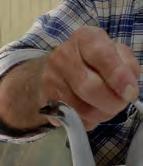

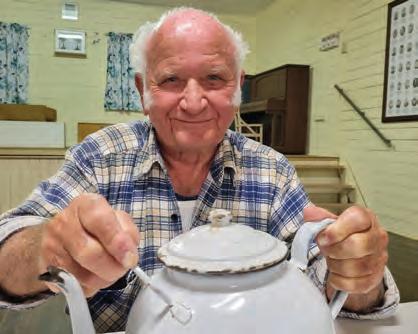














The Burnett Sub Chamber of Agricultural Societies has announced with excitement the young judges and paraders who will be off to the Ekka.
The Burnett region’s top young cattle judges and paraders took the chance and stepped into the ring at the Gin Gin Show on Sunday, 1 June, as part of the 2025 Burnett Sub Chamber Finals. Young competitors from across the Burnett region proudly represented their local shows, with all competitors vying for the chance to qualify for the Queensland Ag Shows State Finals at the Ekka, to be held in August.
PAGE 10
The successful Coolabunia series of three weaner show and sales in the South Burnett has come to an end.
On Thursday, 5 June, the final event in the 2025 Coolabunia Weaner Sale series was held, with the sale drawing a strong crowd of vendors, buyers, and supporters from across the region.
The series of sales began on 3 April with the first Weaner Show and Sale, with a mid-season sale on 15 May. That sale has been praised for its professional execution, high-quality yardings, and consistent vendor results.


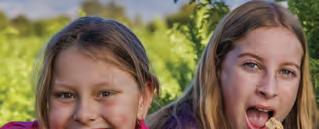




Grace Griffiths is a Goondiwindi-based cotton grower, agronomist and GIS specialist with Digital Ag Technologies. (Supplied)

By Fiona Gowers
As winter grips southern and central Queensland, grain growers are reporting encouraging progress in the early stages of the 2025 winter cropping season.
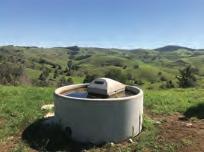
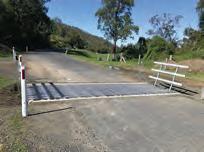


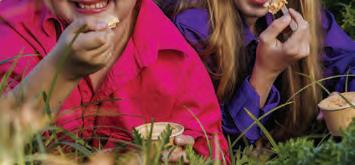










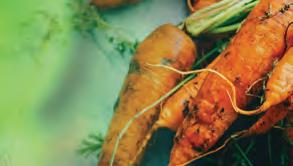



Grace Griffiths is the sole Queenslander vying for the Chris Lehmann Young Cotton Achiever of the Year Award this year. A Goondiwindibased cotton grower, agronomist and GIS specialist with Digital Ag Technologies, Grace began her journey at 16 when she led her family farm’s myBMP certification.
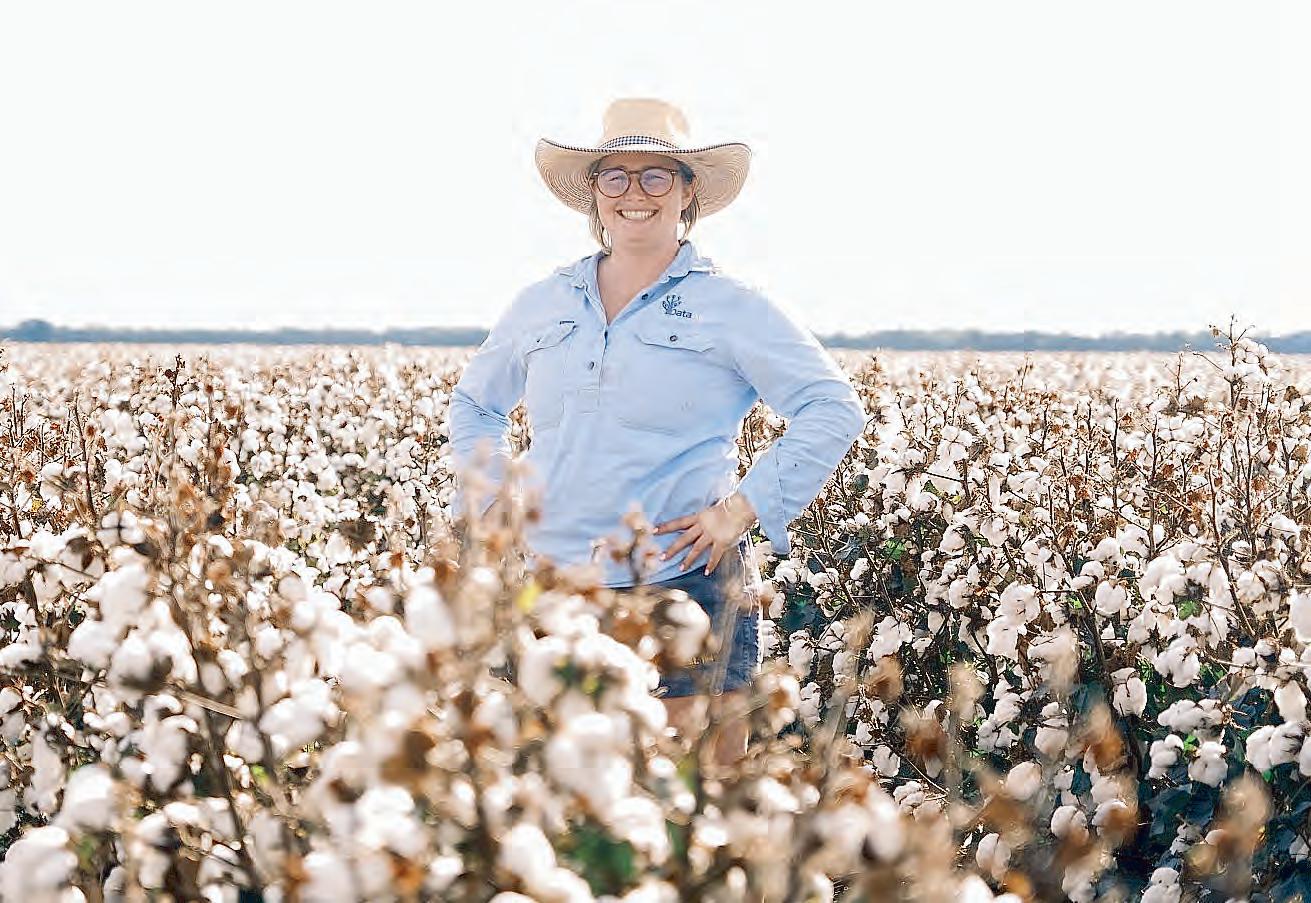
Despite recent cold fronts bringing frost and subzero temperatures to regions such as the Darling Downs, the Maranoa and Central Highlands, the overall outlook for key crops such as wheat, barley and chickpeas remains positive.

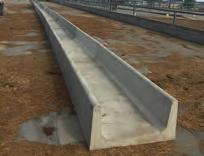
In central Queensland, Biloela-based Elders agronomist Gavin Lotz said the area sown to winter cereals and legumes was “slightly“ up this year due to healthy sub-soil moisture giving growers confidence to take a “calculated risk“.
He said this year’s sowing window, which usually closes in mid-June, had been extended in his area due to “reasonable recent rainfall“.

By Jessica McGrath
There is hope for the future when looking forward to Queensland and the Burnett’s primary industries sector in 2050.
Around 40 South Burnett primary producers and industry representatives met with Queensland Department of Primary Industries representatives at the Kingaroy RSL on Thursday, 5 June.
The draft blueprint for Primary Industries Prosper 2050 was presented to the attendees who gave their feedback and visions for the industry.
The blueprint envisions building a thriving future for the primary industries over the next 25 years, which would create greater benefits for the state. Kingaroy and Toowoomba’s Farm Fest were the final of 16 stops for the 25-year blueprint’s tour around the state, with stops from Weipa to the the Gold Coast and Goondiwindi. Public consultations officially closed on 9 June.
Nanango MP and Attorney General Deb Frecklington dropped by the Kingaroy session and shared how important the blueprint was for the region.
“This plan was drafted through extensive consultations with stakeholders, and is the key to increasing our primary industries output to $30 billion by 2030,” she said.
“This will be a comprehensive consultation process, because we care about our primary industries and want to get it right.”
Deputy Director General for fisheries and forestry Pauline Jacob attended the Kingaroy session and explained the blueprint’s goal was to see the industry grow from its current $24 billion to $30 billion by 2030.
This would require seeing the industry’s current growth of 3 to 4 per cent per annum jump to about 8 per cent.
Address: 154-156 Haly Street
Kingaroy 4610
Telephone: 07 4182 0450
Website: QueenslandFarmerToday.com.au
CONTACT US
Editorial:
Email: newsdesk@QueenslandFarmerToday.com.au
Advertising:
Email: advertising@QueenslandFarmerToday.com.au
Classifieds:
Phone: 07 4182 0450 or 1300 666 808
Email: sales@networkclassifieds.com.au
EDITORIAL
Fiona Gowers Editor
E: fiona.gowers@QueenslandFarmerToday.com.au
Breanna Lloyd Journalist
E: breanna.lloyd@QueenslandFarmerToday.com.au
ADVERTISING
Samantha Wantling Sales & Marketing
E: samantha.wantling@WarwickStanthorpetoday.com.
au P: 0439 420 289
Jane Lowe Sales & Marketing
E: jane.lowe@QueenslandFarmerToday.com.au
P: 0408 488 609
Jemma Wilson Sales & Marketing
E: jemma.wilson@BurnettToday.com.au
P: 07 4182 0458
Nicola Rickuss Sales & Marketing
E: nicola.rickuss@TodayNewsGroup.com.au
Publisher:
“It’s a really big gear shift that we, the primary industries, want to see, to be able to really ramp up our primary industries,” she said. “That’ll require us to be really laser focused on how to do that, and we’ve got to be able to do that together.”
A big industry workshop in Brisbane was held in February this year with more than 200 stakeholders in attendance which helped develop the Primary Industries Prosper 2050 draft.
The Primary Industries Prosper 2050 State Tour has since been conducted, hearing from regional stakeholders on the industry’s challenges and opportunities.
“I don’t want this to just be a glossy document that sits on everyone’s shelves,” Ms Jacob said.
“We actually do want to live and breathe this, it’s really important for all of us that we co-design and co-invest in this if we really want to be sure all those generational businesses that we all have can continue to be.”
Information for industry and regional action plans and visions are also being developed from these discussions.
Now that the Primary Industries Prosper 2050 State Tour has concluded, feedback from sessions will be added and the DPI hopes to bring this before cabinet in July. “It’s going to be done really quickly,” Ms Jacob explained.
Region’s challenges, opportunities
During the session Kingaroy attendees discussed the biggest challenges to grow the primary industry sector.
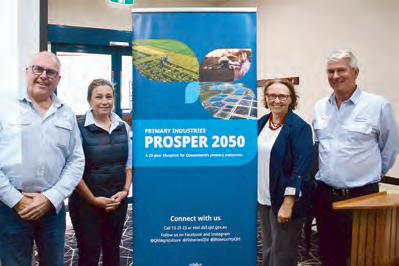
DPI General Manager rural and economic
Positive tour overall
The Deputy Director General for fisheries and forestry shared that overall the tour has gone well, with lots of different sectors inputting into the document.
“People genuinely believe there are lots of opportunities for primary industries in Queensland, both to supply Queensland with excellent produce and to also engage better internationally,” Ms Jacob said.
Issues such as tick line challenges, climate extremes, fluctuating market prices, water security, biosecurity, pest control and native title restrictions were raised, as well as the expectation to ‘produce more food on less country’
Further discussions revealed Burnett producers were specifically facing challenges such as the lack of quality and quantity of road networks which can easily get flooded out, trapping the sole produce route out.
The workshop turned discussions to what opportunities could be taken over the next 25 years to see the industry thrive.
A key idea raised was seeing more local produce consumed locally, cutting down on production costs. More manufacturing and processing industry opportunities in Queensland, such as a cannery or closer dairy processing plants, would also help reduce processing costs. Other ideas raised included investigating new crops which are suited to the region’s climate, more accessible agriculture training for young people, introducing technology to assist with supply and demand, and more affordable irrigation schemes.
The attendees also discussed what needed to be done to see the industry prosper.
They shared better education, including reintroducing agricultural colleges, a circular economy and an ability to have a say in price settings. Attendees also raised an ability to have a local food security focus, in addition to state and national food security would be beneficial.
Prosper’s strategic priorities
The 25 year Primary Industries Prosper draft blueprint outlined the priority areas of the industry -these will be further refined now that the consultation workshops are completed. Market growth and value adding is one key priority, seeing the industry become more competitive and gain a greater share in new and existing markets.
Coexistence and community support will be key to success, as well as an accelerated innovation, readiness and adoption of new technologies.
Seeing producers become confident in system settings and appropriate levels of regulation will see more stability in the industry. Providing primary producers with access to shared infrastructure is an idea put forward to boost productivity.
Finally, investing in a skilled and agile workforce through agricultural education will see the industry maintain a promising future.






The Liberal-Nationals Coalition has certainly been a defining partnership in Australian politics since it was formed in the 1920s. But, despite its endurance, there have been four headline-inspiring times when the federal National Party (previously the Country Party) formally split from the Liberal Party:
1. 1931 Federal Election
The Coalition first fractured during the Great Depression. In the 1931 election, the Country Party and the United Australia Party (precursor to the Liberals) stood separately amid internal disagreements.
2. 1934 Federal Election
Only three years later, the partnership faltered again during the 1934 federal campaign, when policy and seat-sharing disputes caused both parties to contest independently.
3. 1987 Split Amid “Joh for Canberra”
The most famous dispute was in 1987. Queensland’s then Premier Sir Joh BjelkePetersen led the Queensland Nationals in withdrawing their federal MPs from the Coalition, triggering the “Joh for Canberra” push. The federal Nationals tore up the agreement during that time before reconciling later in the year.
4. And, most recently in May, after the federal election defeat, Nationals leader David Littleproud announced that his party would not renew the Coalition agreement with the Liberals, marking the first federal break since 1987. The short, seven-day split stemmed from unresolved demands on key policies such as nuclear energy, regional infrastructure and a dedicated regional fund. Some Nationals described it as “principled,” representing rural interests and, many Liberals — including former leaders such as John Howard — warned it could damage the centre-right for years.
Despite these historical separations, the Coalition has reunited after each split, usually following negotiations over seat-sharing, portfolios and policy alignment. Only time will tell what happens next . . .
- Fiona Gowers

By Fiona Gowers
As winter grips southern and central Queensland, grain growers are reporting encouraging progress in the early stages of the 2025 winter cropping season.
Despite recent cold fronts bringing frost and subzero temperatures to regions such as the Darling Downs, the Maranoa and Central Highlands, the overall outlook for key crops such as wheat, barley and chickpeas remains positive.
In central Queensland, Biloela-based Elders agronomist Gavin Lotz said the area sown to winter cereals and legumes was “slightly“ up this year due to healthy sub-soil moisture giving growers confidence to take a “calculated risk“.
He said this year’s sowing window, which usually closes in mid-June, had been extended in his area due to “reasonable recent rainfall“.
“Anything that was fallowed in preparation for winter 2025 has been planted and is looking quite good” , he said.
“We’re now seeing growers take the opportunity to double crop some area from summer mungbeans back into winter cereals.
“We would probably like an in-crop rainfall to guarantee some success, but we’re looking good so far.“
Looking ahead, the Bureau of Meteorology does anticipate a continuation of cooler temperatures and scattered showers across the central Queensland region.
These conditions are expected to support steady crop development if rainfall remains consistent and temperatures do not dip to levels that could damage young plants.
In southern Queensland, meanwhile, recent weather patterns have presented both challenges and opportunities for farmers.
A series of twin polar blasts have swept through the region, leading to freezing temperatures and widespread frost.
Towns such as Dalby and Applethorpe experienced apparent temperatures as low as -2.6°C, while areas such as Roma and Toowoomba recorded lows between one and five degrees.

While these conditions can stress emerging crops, they also help reduce pest populations and disease pressures, potentially benefiting crop health in the long term.
The Department of Agriculture Fisheries and Forestry Australian Crop Report June 2025, predicts winter crop production in Queensland to fall 18 per cent this season to 3.1 million tonnes. It will remain above the 10 year average, however.
Area planted to winter crops in Queensland is forecast to fall by four per cent to 1.5 million hectares in 2025–26 while remaining 22pc above the
average to 2024–25.
Area planted to wheat and barley is expected to fall (by 6pc and 14pc respectively) but will remain above the 10-year averages to 2024–25.
By contrast, the area planted to chickpeas - a valuable rotation crop - is expected to rise by 2pc in 2025–26, supported by elevated prices.
Winter crop yields are forecast to fall by 14pc to about 2.1 tonnes per hectare in 2025–26 but remain 19pc above the 10-year average to 2024–25.
According to the Grains Research and Development Corporation (GRDC), strong interest has
been shown in high-performing wheat varieties such as LRPB Mustang and Sunchaser, as well as barley varieties such as RGT Planet.
These selections are tailored to suit the diverse soil types and climatic conditions across the state.
Overall, the 2025 winter cropping season in southern and central Queensland is off to a promising start.
With careful management and favourable weather conditions, growers are optimistic they will achieve strong yields and contribute to the state’s agricultural output.
More than 200 property owners across the Maranoa participated in the latest Coordinated Baiting Program designed to reduce the number of invasive animals in the region.
The Autumn campaign saw a significant increase in bait distribution and growing community involvement in the region-wide pest control effort.
A total of 7,440 kilograms of bait was distributed, including 5,220kg of wild dog baits and 2,220kg of pig baits, marking an increase of nearly 2,000kg from the previous campaign.
A further 1,922 manufactured baits, 500kg of dog baits, and 235.5kg of pig grain were also distributed through additional baiting efforts.
Community awareness was also bolstered with new roadside signage together with a new notification system designed to keep landhold-
ers informed.
Rural Services Portfolio Spokesperson, Cr Brendan Seawright, thanked landholders joining the fight against pest animals.
“Feral animals represent a significant cost to our economy through livestock losses and the spread of disease,” Cr Seawright said.
“It was encouraging to see the increased coverage this campaign.
“The more landowners we have joining in the fight, the more successful it will be, and that benefits all of us.
The fight against pest animals will continue with Maranoa Regional Council securing funding through Southern Queensland Landscapes to coordinate a targeted feral pig grain baiting program.

Initially focused on the Surat area to help protect the region’s Coolibah – Black Box and Poplar Box Grassy Woodlands, Council is also exploring interest from other areas for wider participation.
The campaign’s strategic direction is now being shaped with support from a newly formed Biosecurity Advisory Committee, which will provide guidance and oversight as the program continues to evolve.
Council is encouraging anyone who has not been receiving updates to email Wild.Dog.Bait@ maranoa.qld.gov.au to ensure their contact details are up to date.
For further information or to register your interest in future baiting programs, visit www. maranoa.qld.gov.au or contact Council on 1300 007 662.




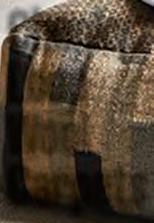






By Fiona Gowers
Grace Griffiths is the sole Queenslander vying for the Chris Lehmann Young Cotton Achiever of the Year Award this year.
The other finalists are both from Narrabri in NSW: LDC senior account manager Jacob Booby and CottonInfo soil health technical lead and regional extension officer Blake Palmer.
A Goondiwindi-based cotton grower, agronomist and GIS specialist with Digital Ag Technologies, Grace began her journey at 16 when she led her family farm’s myBMP certification.
She later founded 101 Ag Pathways to promote careers in agriculture. Grace is a community leader, CGA events president and, last year, was named Goondiwindi’s Young Citizen of the Year.
Topically, her Future Cotton Leaders’ project focuses on simplifying carbon discussions for growers, an issue she will present at this year’s Cotton Collective in August.
“Carbon is a topic that is forever evolving in nature but the message on-farm I always found was simple: Start baselining and accounting for all your inputs,“ Grace said.
“You can do this yourself with some correctly placed soil tests and knowing your inputs each year on each paddock.
“If we aren’t measuring something to begin with, how are we going to measure any changes? No matter what path you end up down, the first step is streamlining input and soil data – that’s it.
“Once we have that down pat then we can enter further conversations in the landscape of what’s next and why.
“Like any of these conversations it is always going to be what best suits your farming system, operations and business.
“Even with clients I work with in this space – no two are the same, even if they are neighbours.“
Grace Griffiths was raised on her family’s cotton farm in Goondiwindi.
After completing an agricultural science degree in 2021, she returned home to work in the family business’s agronomy services team.
Her agricultural career has since expanded into cropping and soil improvement projects in the Northern Territory, Geographic Information Systems (GIS) and carbon farming accounting work with Charles Sturt University as part of its Cool Soils Initiative.
Grace said her own experience finishing university without clarity of what agricultural careers were available prompted her to create 101 Ag Pathways. The app features vision of employees working in various industry sectors, including many who shunned a traditional university pathway.
“I founded 101 Ag Pathways in 2022 just as social media pages to start off with. It started when I, even after growing up surrounded by agriculture, had no idea of the careers available to me.
“It got me thinking how many others are missing out on a career they may love just because they have never been exposed.
“I started showcasing different people’s ag career journeys, what their jobs entailed and how they got there.
“Now the 101 Ag Pathways platforms also share a bit more of my day-to-day life as an agronomist and what we get up to on farm, and also a jobs board, posting available jobs in agriculture and where people can find them.“
Following her gut feel and passion for agronomy, Grace decided against switching from agricultural science to veterinary science at university, which was her original plan.
“I have always enjoyed the community within the cotton industry,“ Grace said. “How welcoming, collaborative and supportive the industry is of young people - to name a few - is truly amazing.“
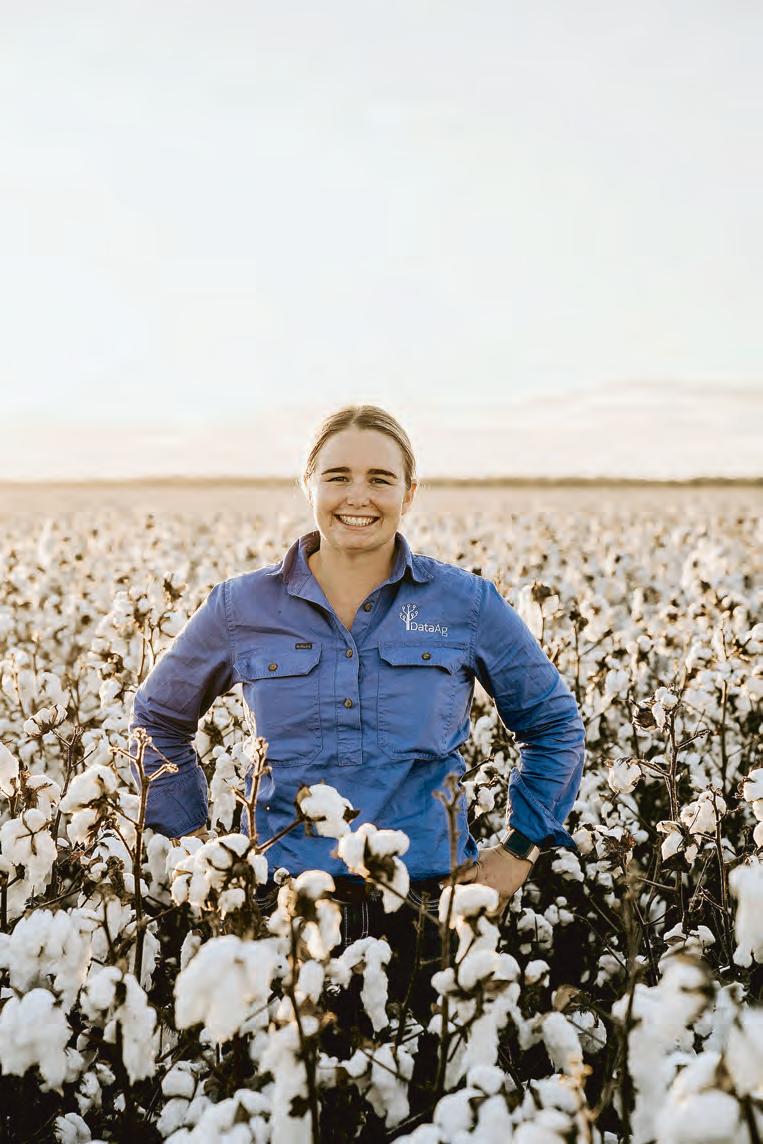
By Fiona Gowers
Cotton Australia has announced the finalists for the prestigous 2025 Cotton Research and Development Corporation (CRDC) Chris Lehmann Young Cotton Achiever of the Year Award.
The winner will be named at the Cotton Collective in Toowoomba in August.
Cotton Australia general manager Michael Murray said the award category recognised that cotton’s future rested with younger participants, many of whom are emerging leaders.
The three finalists in the 2025 CRDC Chris Lehmann Young Cotton Achiever of the Year Award are:
• Jacob Booby – LDC senior account manager, Narrabri.
• Grace Griffiths - Grower, agronomist and GIS specialist with Digital Ag Technologies, Goondiwindi, and
• Blake Palmer - CottonInfo soil health technical lead and regional extension officer, Narrabri.
“Each of the three finalists are outstanding young leaders,“ Mr Murray said.
“Jacob and Grace are both graduates of the Cotton Australia and CRDC Australian Future Cotton Leaders program, now holding senior roles in their local Cotton Grower Associations (CGAs).
Meanwhile Blake is a recognised soil specialist who has worked across multiple CRDC-supported research projects delivering outcomes to the cotton industry.”
Mr Murray said one of the many pleasing aspects about this year’s finalists is the community and industry engagement that each nominee demonstrates, including the many hours they volunteer to help advance the cotton industry.
“It is well recognised that as the average age of growers increases the local CGAs can suffer as increased family responsibilities can mean fewer people have the time to dedicate to their local grower groups.
“What we are seeing in most growing ar-
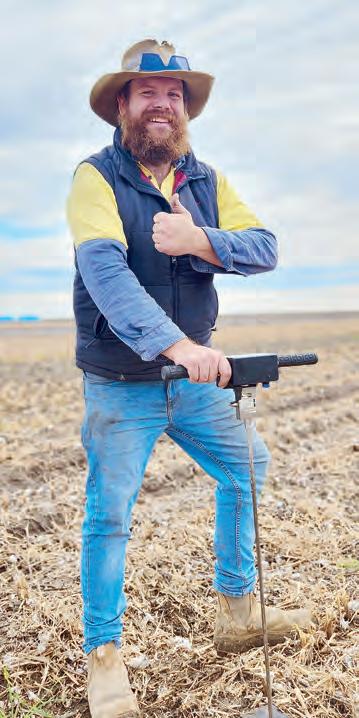
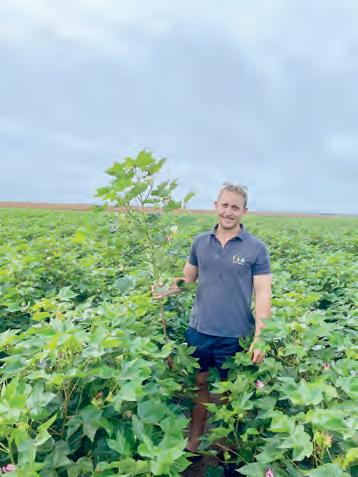
eas lately is a regeneration of CGA’s because younger people are taking up the challenge and getting involved and that’s a great sign for the future.
“The three finalists this year include a young grower and agronomist, a research-focused CottonInfo extension specialist and a senior manager for one of the industry’s key global stakeholders.
“Every finalist is worthy of this award and I know they will all continue to deliver excellence for cotton going forward.“
CRDC executive director Allan Williams congratulated Jacob, Grace and Blake on their selection as finalists in the award, which is named for one of cotton’s first consultants, the late Chris Lehmann.
“Chris was a passionate supporter of young people in the cotton industry, so it is fitting that this award continues to carry his name. “Chris’s
legacy in the cotton industry is continued by the next generation of his family – his son Paul and daughter Jess, who continue their involvement in their family’s farm.
“This generational change is being reflected right across our industry as the third generation of Australia’s pioneering growers begin to take the reins and as we welcome entirely new cohorts of young people to cotton, bringing with them fresh, bold new ideas for the future.
“CRDC shares this focus on the future, so we are delighted to support the Young Cotton Achiever category.
“Our congratulations to this year’s nominee Jacob, Grace and Blake.“
* Jacob Booby: Jacob grew up in Narrabri and developed a deep connection to the cotton industry early on, working in ginning and agronomy roles before joining Namoi Cotton. He holds leadership positions across three CGAs, enabling regional collaboration.
He graduated from the Australian Future Cotton Leaders program in 2024.
* Blake Palmer: Blake is a soil scientist and extension specialist who has worked on multiple CRDC-supported projects at the Australian Cotton Research Institute (ACRI), where he continues to complete his PhD on soil compaction and crop rotation. Now the CottonInfo soil health technical lead and regional extension officer for the Namoi, he bridges research and practice to improve soil outcomes in the cotton industry. His work emphasises scientific impact and industry collaboration.
The winner of the Chris Lehmann Young Cotton Achiever of the Year Award will be announced during the Cotton Collective in Toowoomba in August.
The Bayer Cotton Grower of the Year, AgriRisk High Achiever of the Year, Cotton Seed Distributors Researcher of the Year and Incitec Pivot Fertiliser Service to Industry Awards will also be announced at the conference dinner on 6 August.
By Fiona Gowers
Cattle producers across southern and central Queensland are preparing for a busy spring selling season, with stud operations preparing to showcase some of their best genetics.
With the region’s commercial herds recovering strongly after mixed seasonal conditions, interest is building ahead of what is shaping up to be a competitive spring bull sale run.
From Toowoomba through to the Central Highlands, more than a dozen major stud operations will open their gates across August and September.
Angus, Brangus, Charolais, Simmental and Santa Gertrudis are reporting strong catalogues, with high fertility, structural soundness and performance data key selling points.
Demand is expected to remain steady from both commercial and seedstock buyers, despite market volatility and the continued cautious approach from restockers in drier districts.
Bull sales in autumn were largely resilient, with clearance rates sitting above 85 per cent for many vendors, providing optimism for strong spring results.
Elders stud stock manager Michael Smith hosted the 2025 Richmond Agents All Breeds bull sale on 13 June where 43 bulls were offered across six breeds.
He said the market remained “fairly solid“, particularly for the better-end article, with buyers prepared to pay for quality genetics. Rates were similar to last year.
“There is plenty of supply - probably an oversupply in some situations - but what we’re finding with sales we’ve done this year, is that buyers are willing to pay for the quality articles,“ Mr Smith said.
“Whereas, if you’ve got a lesser quality article, the price is reflected due to that.“
“So, they’re happy to pay for a better quality article, they are, but if you’ve got an inferior ar-

ticle, be prepared for some discounts.“
Mr Smith said Angus, Brangus, Simmental, Charolais and Santa Gertrudis were the prominent breeds in 2025.
“We haven’t really got into that Santa market yet but, just off the back of last year, the Santa market’s been pretty strong.“
Mr Smith said seasonal conditions were generally pretty good throughout most of northern NSW and southern/ central Queensland.
Technological tools, meanwhile, such as BreedPlan data, genomics and online video previews, continue to help both new and repeat buy-
ers make more informed selections.
And, studs continue to invest in professional marketing, online auctions and value-added services such as delivery and post-sale support to attract bidders from further afield.
Mr Smith said the shift towards online and hybrid formats had opened the market to producers who otherwise wouldn’t attend in person.
“We are seeing strong bidding online, especially from those restocking from northern New South Wales and central Queensland,” said Mr Smith.
“Even when seasons are patchy, buyers know
that good bulls are an investment that pays over time.”
As many herds retain heifers and prepare for a lift in branding percentages, the emphasis on fertility, temperament and maternal traits remains at the forefront.
And so, with strong genetics on offer, vendors are optimistic that 2025-drop calves will represent a leap forward in productivity and marketability and spring bull sales in southern and central Queensland will again prove their value as the engine room of genetic improvement across the beef supply chain.

/ 9.5ft
hammer




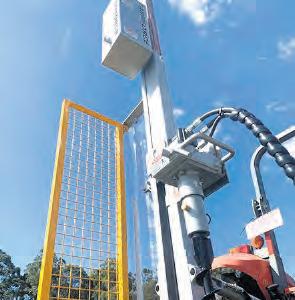
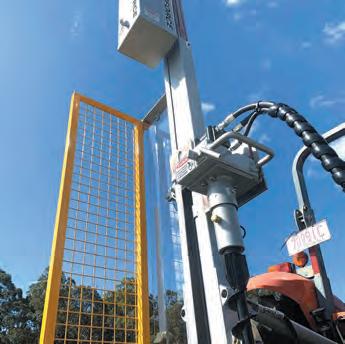
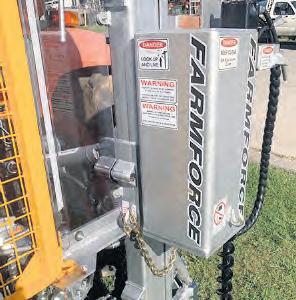





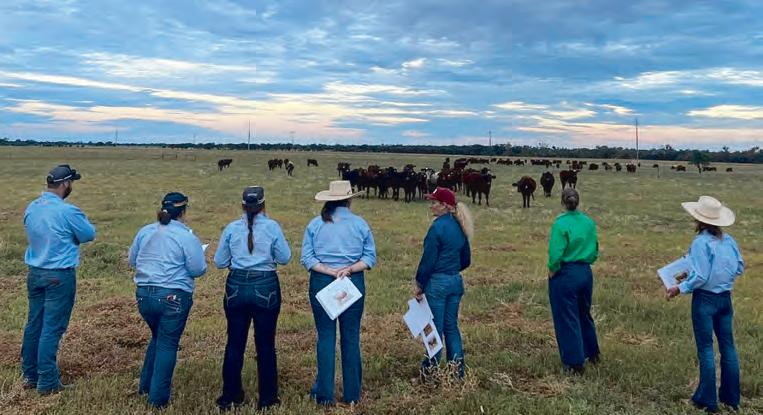
By McKenzie Neal
CHRRUP’s LEADAg program returned to Longreach last month, providing people with valuable exposure to the agricultural industry and handson training to support their career aspirations.
The LEADAg program, designed to address the lack of practical training opportunities for those interested in agriculture, aims to build participants’ skills, confidence, and industry connections.
CHRRUP agricultural workforce officer Meg Bassingthwaighte said this year’s program was a great success, with participants able to take something away from the week.
“The program went really well,” she said.
“We had five participants, and we managed to do all of the activities that we had planned.
“They came from all over the state – there were two from the Gold Coast, and then one each from Toowoomba, Stanthorpe and Brisbane.




















“Everyone went away taking something from it, and they all seemed to enjoy it, which was great.”
Throughout the week, participants engaged in a wide range of activities covering nutrition, pasture and genetics, small motor maintenance, livestock handling, welding, fencing, and rural first aid.
“Normally we head out to a lot of different properties,” Ms Bassingthwaighte said.
“This year we did nutrition, pasture, and genetics with Jenny and Desiree at the college on Monday in the boardroom and then went out to the paddock at Rosebank and around the college.
“We went out to Leander with Toby and Georgia Whip just out of town and focused on goats and small motors.
“The two days that we did with AgForce training were focused on chainsaws, welding, and fencing at the college.
“On Friday, we came out to my place at Sandalwoods and did rural and remote first aid with Vicki from Impulse Training.”
While LEADAg often works with school students in Years 10 to 12, this iteration of the program attracted young adults exploring new career options.
“Programs like these are definitely important,” Ms Bassingthwaighte said.
“There are a lot of different demographics that we can target with this program.
“In this age bracket, you obviously have some people in the workforce – most of the ones that come are not in the industry but are looking for a change.
“The idea is to give them a few basic skills as well as contacts and connections to people in the industry, who might be able to give them a job or information they need.”
Looking ahead, CHRRUP is also exploring new ways to deliver training and support within the industry, particularly for those already working in the agricultural sector.
“One demographic that we haven’t tapped into, which we have been talking about with lots of different people, is the upskilling of ringers,” she said.
“They might be already on the job and in their second or third year but come from less agricultural backgrounds.
“There may still be a lot of calls for some upskilling that may not be able to get taken care of on the property.”
For the moment, LEADAg and CHRRUP’s focus shifts to their youth program, which kicks off in Longreach on Monday, 7 July.
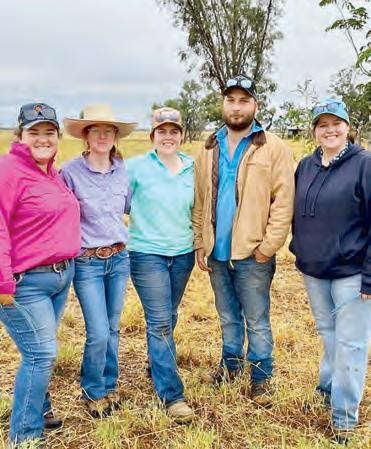
By Matthew Pearce
Mel Davies and Cameron Steadman’s four White Dorper sheep have taken top honours at the Dorper Sheep Society of Australia National Show.
The pair operate The Ranch, a sheep stud 100km west of Longreach, and have recently returned from the national show in Dubbo, which is held in conjunction with the NSW Sheep Show.
The Ranch came home with both Champion Junior awards as well as Grand Champion White Dorper Ram.
Mel said she and Cameron established their Dorper and White Dorper stud in 2018 and spent their initial years showcasing their bloodlines in a commercial arena.
“We sold the highest Queensland sold Wether lambs through the AuctionsPlus Tuesday Lamb sale for 2023 and decided it was time to take our sheep to the show ring,“ she said.
“We attended our first national show in 2024 with two white ewe lambs, taking first and second within the same class.
“This year, we took four White Dorpers and had great success with all sheep taking a place in competitive classes.“
Exhibiting isn’t an easy process, with it taking 17 hours, over two days and a night in the crate, to get to Dubbo.
“To take honours in a shed full of highly recognisable studs is a real achievement for Western Queensland-bred sheep,“ she said. The Ranch Dorper and White Dorper Stud’s full list of national awards includes:
• First WD Ewe 6–9 months and Champion Junior WD Ewe Lamb – The Ranch White 249613 Snow White
• Second WD Ewe Two Tooth – The Ranch White Barbie 239491
• Third WD Ewe Two Tooth – The Ranch White Cinderella 239492
• First WD Ram 9+ months Lambs Teeth, Champion Junior WD Ram Lamb and Grand Champion WD Lamb – The Ranch White 249594 Wanda

Mel said Wanda, nine months, is structurally correct and has an outstanding soft, sappy coverage.
“He has a masculine head and follows through into a deep and well-proportioned ram shape,“ she said.
“He is an eye-catching and appealing ram that is a great showcase of the breed, sired by a second-generation The Ranch White-bred ram ’The Ranch White Honda’ out of a Type 5 Kaya ewe,“ she said.
“The grandmother on the ewe side also produced Kaya 200341 who won Supreme Champion at Dubbo in 2022.“
Mel said the Dorper breed is one which continues to shine, named Supreme Shedding Breed Group, Supreme Shedding Breed Ewe and Supreme Shedding Breed Ram at the NSW Sheep Show.
“There are many things Dorpers bring to the table in Western Queensland, including fertility, adaptability and hardiness – being the leader in a dryland pasture area,“ she said.
“Their continual breeding cycles enable a higher lamb production and their ability to produce through tough times has been proven across the world.“
The Ranch’s last event for the year is the Muttaburra Stock Show this Saturday, 7 June, where they will take the national team.
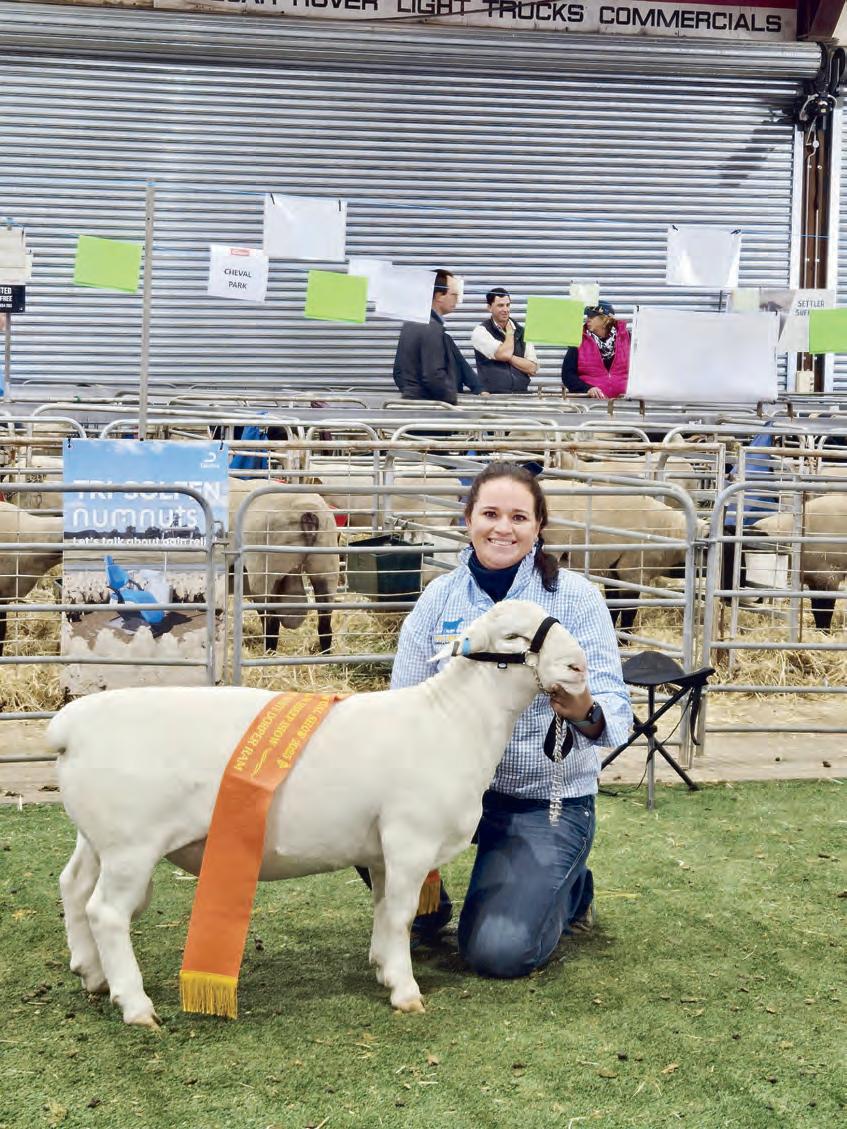
By Fiona Gowers
Summer Land Camels is celebrating its 10th anniversary by releasing a world-first spirit Camel Milk Vodka, French Oak Matured.
Crafted from camel milk whey - and aged on French oak - this bold new drop boasts rich notes of caramel, toasted oak and malted cream.
Exceptionally smooth with a warming finish, the boutique vodka was made in small batches in collaboration with award-winning Imbibis Craft Distillery.
It is distilled just three times to preserve its
purity and character.
And, according to Summer Land Camels CEO and director Paul Martin, it redefines the possibilities in Australian agriculture.
“We’re always striving to lead with innovation grounded in purpose,“ he said.
“Camel Milk Vodka – French Oak Matured is a celebration of our commitment to sustainability, craftsmanship and redefining what’s possible in Australian agriculture.
“It’s not just a spirit – it’s a story of transformation, turning what was once overlooked into something extraordinary, much like our camels
themselves.“
After crafting their award-winning cheeses such as Marinated Persian Feta, Fromage Blanc and Haloumi, the Summer Land Camels team was left with high-quality camel milk whey – a nutrient and flavour-rich byproduct.
Rather than waste it, they sought to realise its potential. The result? Camel Milk Vodka.
Through innovative practices, they discovered camel milk whey was the ideal base for distillation, producing a spirit that was exceptionally smooth and environmentally conscious.
Every bottle helps prevent food waste (with
three litres of whey used per bottle), reduces water and carbon footprints compared with traditional spirits and celebrates a whole-animal, no-waste ethos.
The Summer Land Camels team has built an impressive portfolio, winning nearly 100 awards for their diverse range of camel milk, cheeses and skincare products.
In 2025, they secured two gold medals and the prestigious Australian Cheeseboard Perpetual Trophy at the Sydney Royal Cheese & Dairy Produce Show, solidifying their excellence in the Australian camel dairy industry.



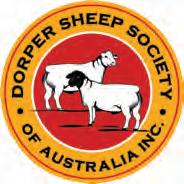
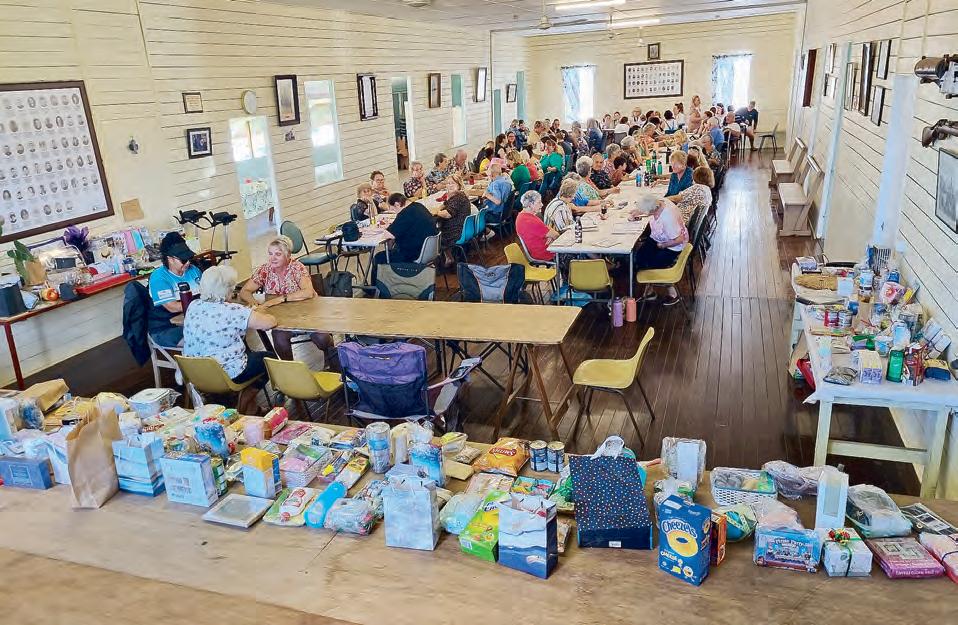


By Fiona Gowers
Nestled in the heart of Queensland’s Fitzroy region, the charming Alton Downs Hall has been a cornerstone of community life since its official opening on 2 January, 1905.
With its beautiful timbered floor, classic performance stage and supper room, it has hosted many community events over the years, from Scottish dances, cricket matches, weddings, sports days, variety nights, music evenings and market activities
Managed by a dedicated committee, the Alton Downs Hall has fostered a sense of unity and engagement among residents.
The Old Time/New Vogue Dances, in particular, have been instrumental in maintaining this communal bond, offering a space where generations can unite to celebrate shared traditions.
The 2025 dance calendar is now in full swing, with upcoming events scheduled for 19 July, 20 September and 15 November.
Alton Downs Hall committee member Ann Maree Dyer said while these gatherings had become a beloved tradition - drawing locals and visitors alike to experience the charm of the past - the committee was keen to attract a younger demographic.
“Most of our attendees are in their mid- to late 70s,“ she said. “And, we’re just finding that the younger audience, they don’t know what to expect. They don’t know what it looks and feels like.
“And these dances are so much fun. I mean, I
don’t know how to dance. I’m a young 61-yearold and I don’t know any of these dances but I’ll have a crack at it.“
Alton Downs Hall committee president Peter Craig said:
“We are coming up to our Old Time New Vogue Dance, which will be held in the hall from 7pm to 11pm on Saturday, 19 July,“ he said.
‘We have been delighted to welcome visitors to these dances in winter months, with many travellers driving north to escape the freezing conditions in other states.
“Local musician Syd Stickley, aka The Keyboard Kid, plays a variety of well-loved tunes for our dancers.
“The evening features a Monte Carlo, Lucky Door prizes and a delicious home-baked supper with tea served up in large enamel teapots. The evening is relaxed and everyone is welcome to attend.
“We are incredibly proud to continue the tradition of a dance event in the Alton Downs Hall and look forward to visitors discovering our little slice of paradise outside Rockhampton.“
Admission is a modest $12 per person, making it an accessible outing for families and individuals.
For more information please call Peter Craig on 0427 341 166.
So, whether you’re a seasoned dancer or a curious newcomer, the Old Time Dances at Alton Downs Hall promise an evening of nostalgia, community and joy.

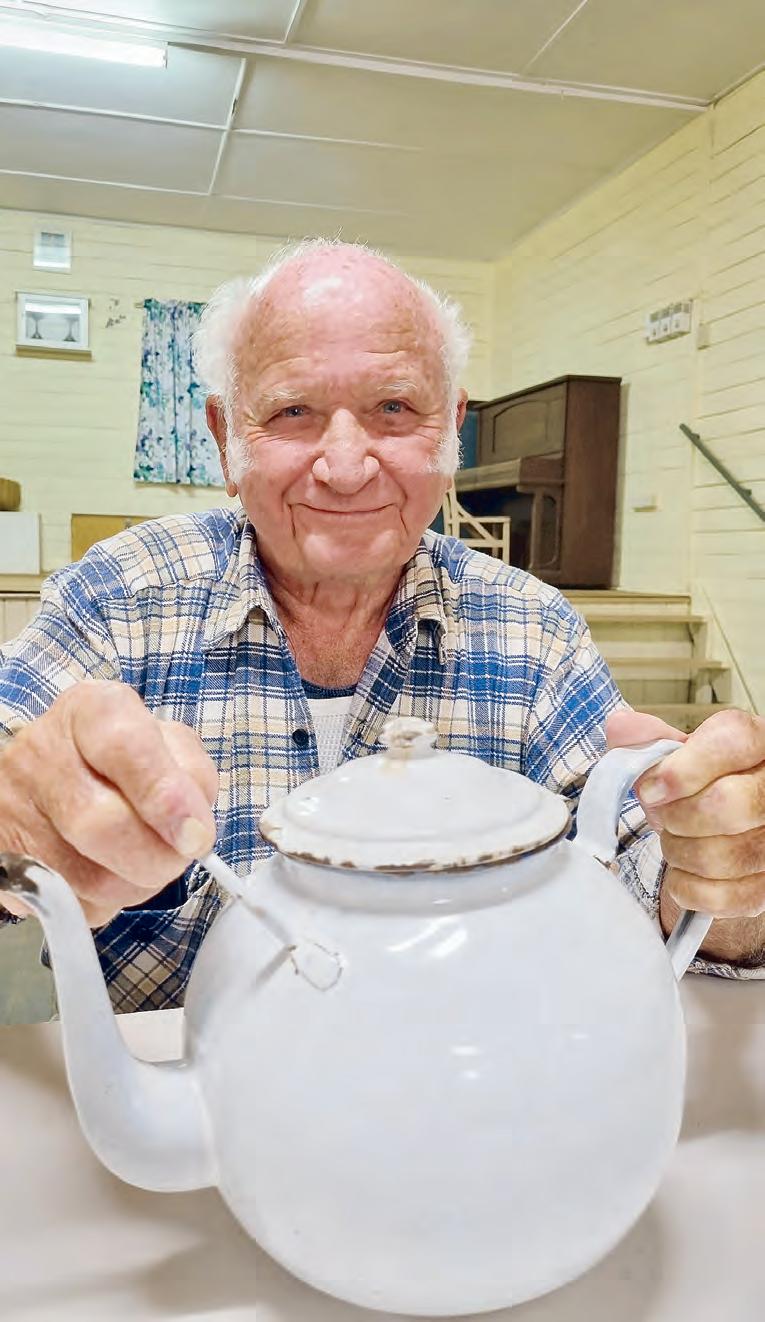
By Jessica McGrath
There is hope on the horizon that ’paradise’ might be restored at the crucial dam which borders the North Burnett and Bundaberg regions.
More than seven months on from when the new Crisafulli Queensland Government was formed, plans to improve the Paradise Dam have been revealed.
Member for Callide Bryson Head said this project to rebuild the wall was critical for the local community and industry.
“Water security is a key priority for Callide and rebuilding Paradise Dam is a priority for the Crisafulli Government,” Mr Head said.
This news comes after the January 2024 announcement that there was ’trouble’ at Paradise -the dam’s concrete wall was a compromised asset and was prone to long-term strength loss. This meant it could not sustain the proposed $1.2 billion upgrade project which had already started by the time it was discovered.
On Thursday, 5 June 2025, the state government announced they would take steps to fix the dam wall.
Deputy Premier and Minister for State Development, Infrastructure and Planning, Jarrod Bleijie said these changes would help safeguard water supply for the Wide Bay region.
“Today’s announcement is a significant step in the right direction to deliver a new dam wall, which will support jobs, safeguard Bundaberg’s $2 billion agricultural industry, and benefit the community for generations to come,” he said.
The early works at Paradise Dam will include the construction of a temporary accommodation village, two concrete batch plants and the establishment of support facilities and site preparation.
This will allow for future major construction works on the new dam wall, to ensure the project stays on schedule.
Queensland’s Coordinator-General, Gerard Coggan said approving the early works was cru-

cial to maintaining momentum on the Paradise Dam project.
“By fostering strong partnerships between government agencies, stakeholders, and the community, we are ensuring the Paradise Dam Improvement Project meets the highest standards of safety, environmental responsibility, and community benefit,” he said.
Project activities will include road upgrades to improve community safety, and to cater to increased traffic movements to and from the dam, as well as continued geotechnical and quarry investigations.
The Crisafulli Government has announced a detailed business case will be delivered to the government by early 2026.
The Paradise Dam project seeks to address safety concerns following an independent review, with a clear focus on ensuring the new dam wall’s structural integrity and its capacity to meet the demands of a growing population and changing climate.
Minister for Local Government and Water Ann Leahy stated the government was committed to providing critical infrastructure which would ‘last for future generations’
“Water is at the heart of every thriving community, and these early works on Paradise Dam will be a vital step in ensuring Bundaberg has the secure and reliable water supply it needs now and into the future,” Ms Leahy said.
North Burnett Regional Council welcomed the
Paradise Dam Improvement Project announcement, and stated they looked forward to ongoing engagement with the govrenment, CoordinatorGeneral’s Office and Sunwater.
Mayor Les Hotz shared this project was vital for the region’s long-term water security, as well as strengthening the community’s resilience when it came to future droughts and floods.
“Confidence in major, game-changing infrastructure projects delivers significant economic value to regions like the North Burnett, by encouraging further public and private investment and creating new local business opportunities — ultimately resulting in greater employment options that enhance the wellbeing of our communities,“ Mayor Hotz said.



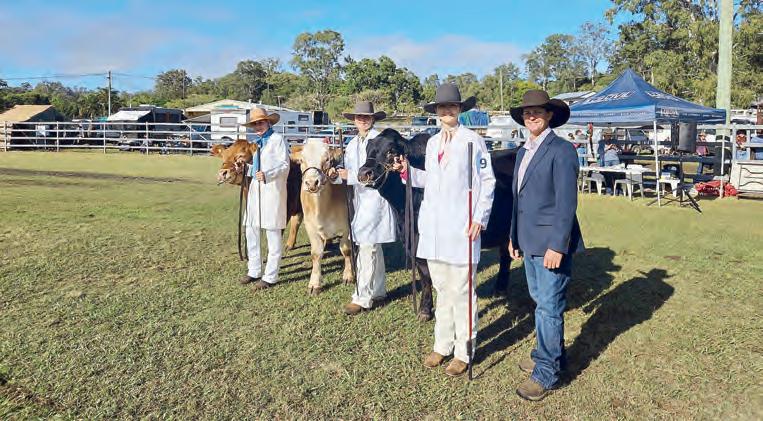
By Maddison Richards
The Burnett Sub Chamber of Agricultural Societies has announced with excitement the young judges and paraders who will be off to the Ekka.
The Burnett region’s top young cattle judges and paraders took the chance and stepped into the ring at the Gin Gin Show on Sunday, 1 June, as part of the 2025 Burnett Sub Chamber Finals.
Young competitors from across the Burnett region proudly represented their local shows, with all competitors vying for the chance to qualify for the Queensland Ag Shows State Finals at the Ekka, to be held in August.
Overjudge Renee Rutherford of Redskin R Droughtmasters, was impressed with this year’s competitors, praising the high standard of judging, presentation and livestock handling skills on display.
The prize money for the Sub Chamber winners was generously sponsored by the Mundubbera Community Bendigo Bank Branch, supporting representatives to travel and compete at state level.
“These competitions aren’t just about winning - they build confidence, develop practical skills and give young people a taste of the cattle industry,” Burnett Sub Chamber representative Brianna Hockey said. “Having an experienced producer like Renee Rutherford share her knowledge and guidance is invaluable and will make a lasting impact on their growth.”
The Sub Chamber extends a sincere thank you to the livestock owners, handlers, stewards, parents, and supporters who contributed to the success of the day, and wishes the Burnett representatives all the best at the State Final.
State Qualifier Results - 15 to 25 years
Stud Cattle Young Judges
• 1st Annaka Hanson, representing Mundubbera Show Society
• 2nd Sarah Horrocks, representing Mt Perry
Show Society
• 3rd Ivy Suendermann, representing
Show Society
Prime Cattle Young Judges
• 1st Addison Cooke, representing Gin Gin Show Society
• 2nd Grace Ogle, representing Eidsvold Show Society
• 3rd Sarah Horrock, representing Mt Perry Show Society
Junior Paraders
• 1st Grace Ogle, representing Gin Gin Show Society
• 2nd Sarah Horrocks, representing Mt Perry Show Society
• 3rd Rhianna McIntyre, representing Monto Show Society
Junior Results - 15 years and under Stud Cattle Young Judges
• 1st Thomas Orphant, representing Gin Gin Show Society
• 2nd Tessa Spencer, representing Mt Perry Show Society
• 3rd Dakotah Zeith, representing Gayndah Show Society
Prime Cattle Young Judges
• 1st Stephanie Nugent, representing Mundubbera Show Society
• 2nd Tom Orphant, representing Bundaberg Show Society
• 3rd Tessa Spencer, representing Monto Show Society
Junior Paraders
• 1st Thomas Orphant, representing Gin Gin Show Society
• 2nd Dakotah Zeith, representing Gayndah Show Society
• 3rd Libby Schuh, representing Eidsvold Show Society
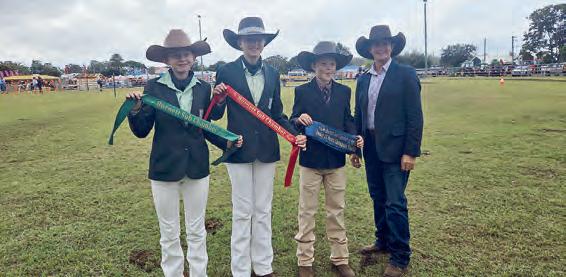
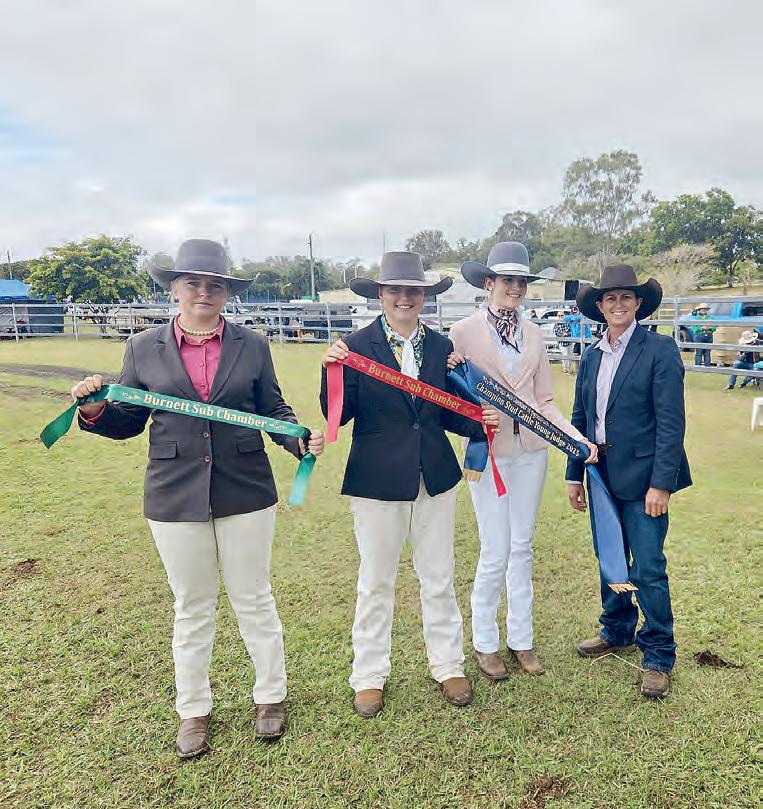


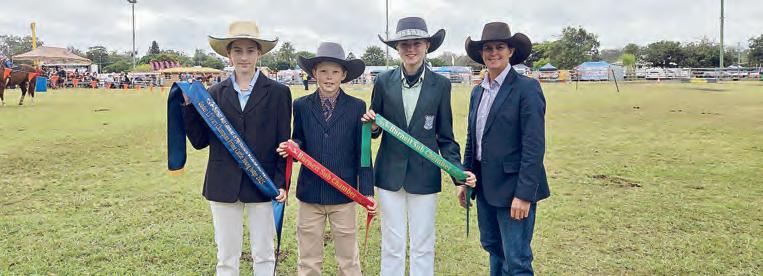

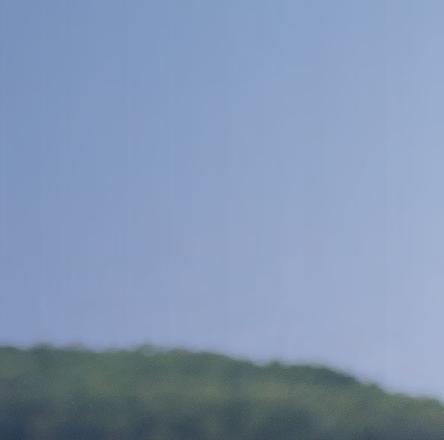
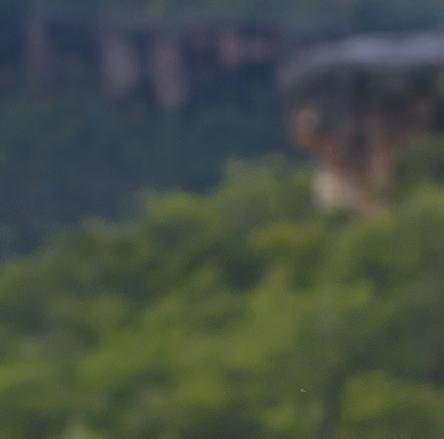



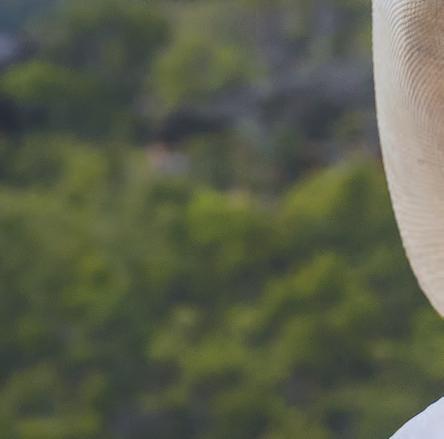
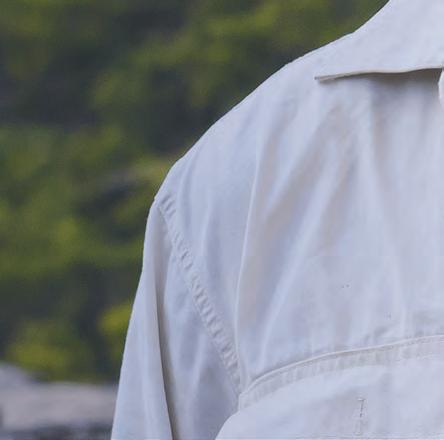

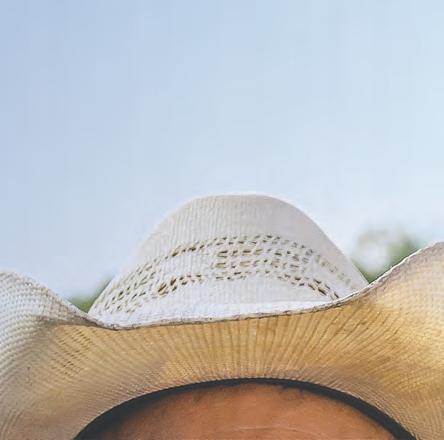
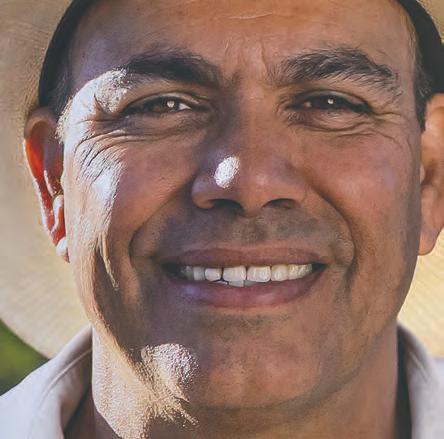
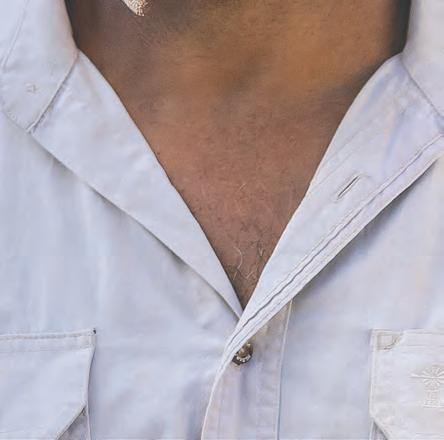





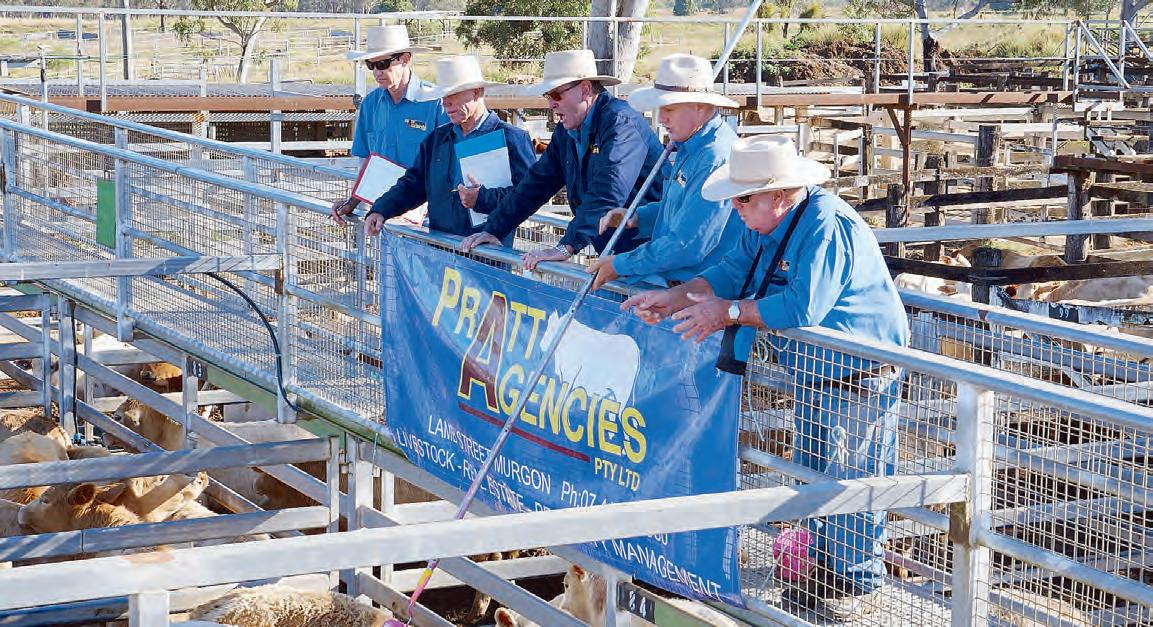
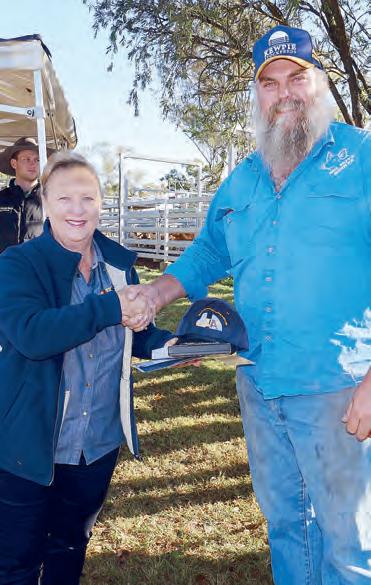
1100 quality Burnett weaners were yarded on Friday 6 June for Pratt Agencies Annual Weaner Show and Sale at the Murgon saleyards in the South Burnett.
Sale organisers Pratt Agencies congratulated the vendors for the quality of the weaners presented, and thanked the sponsors who are there every year to support the event.
The day’s sale results are as follows:
• G and J Zahl Gayndah sold Charolais steers for $4.20 c/kg and $1376.00.
• Charbray steers from Wilbourne Enterprises Windera sold for $1160.00 at $4.52 c/kg.
• A and R Barsby Tansey sold Charolais cross steers for $4.44 c/kg and $1132.00.
• Charbray steers from M Smith Gayndah sold for $4.48 c/kg to return $1212.00.
• W 7 S Dollard Manyung sold Charbray steers for $1215.00 at $4.30 c/kg.
• Charolais cross steers from T Court Goomeri sold for $4.48 c/kg and $1090.00.
• G Wason Kilkivan sold Charbray steers for $1020.00 at $4.42 c/kg.
• 3 pens of Santa steers from T Kelly Crownthorpe sold for $4.46 c/kg and $1292.00, $1208.00 and $1113.00 (averaging $1215.00).
• Santa steers a/c Wilbemalyka Partners Moffatdale sold for $4.46 c/kg returning $1220.00.
• 2 pens of Brangus steers from D Smith Gayndah sold for $4.48 c/kg returning $1294.00 and $1077.00.
• R and D Warren Mondure sold 2 pens of Brangus steers for $4.40 c/kg - $1133.00 and $998.00.
• Brangus steers from L Mathieson Gayndah sold for $4.46 c/kg and $1145.00.
• 3 pens of Simmental cross steers a/c W and L Beddows and family Cloyna sold for $4.52 c/kg topping at $1175.00.
• 2 pens of Braford steers from M and S Kenny Gayndah sold for $4.32 c/kg ($1156.00) and $4.48 c/kg ($885.00).
• 4 pens of Droughtmaster steers from Waringa Breeding Co Hivesville sold for $4.56 c/kg to average $92.00, topping at $1039.00.
• Charbray steers from T and A Dennien Windera sold for $4.60 c/kg for $916.00.
• Red Brangus steers from Mondure sold for $960.00 at $4.48 c/kg.
• G and Zahl sold Charolais cross heifers for $3.90 c/kg and $1140.00.
• 3 pens of Charbray heifers a/c A and R Barsby sold for $3.62 c/kg averaging 282 kg and $1020.00.
• M Smith Gayndah sold 2 pens of Charbray heifers for $3.48 c/kg to return $960.00 and $877.00.
• Charolais cross heifers from T and B Kelly sold for $852.00 at $3.56 c/kg.
• L and T Grazing Tansey sold Simmental cross heifers for $783.00 at $3.38 c/kg.
• Santa heifers from R Crawford Wheatlands sold for $794.00 at $3.38 c/kg.
• Droughtmaster heifers from Lowther Farming sold for $3.44 c/kg

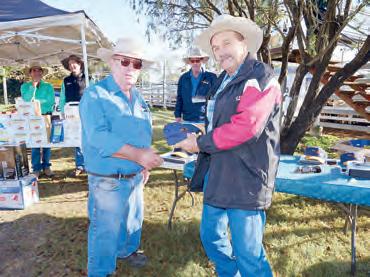

$753.00 • 3 pens of Brangus heifers a/c Koobooda

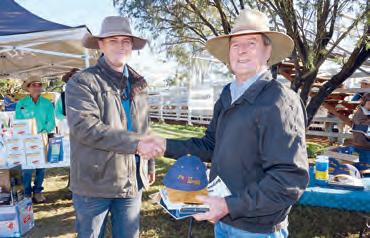
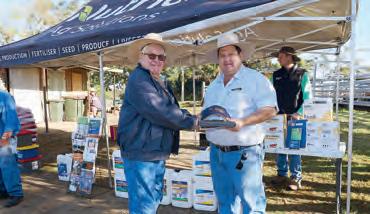

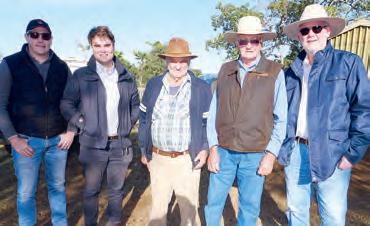
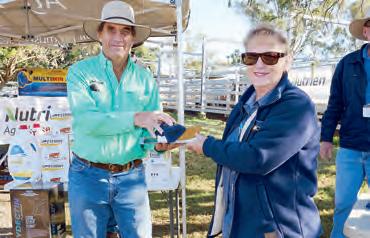





By Warwick Lorenz*
Australia’s mining and agricultural sectors are the backbone of our economy and need reliable water supplies. Another reason is to prevent the heartbreak and the absolute hopelessness farmers have to deal with in a major drought.
Feeding the great potential of the Great Artesian Basin is one good start but, there seems very little visionary infrastructure projects underway and virtually no collaboration between governments, industry and regional communities!
In the last months, Queensland has suffered more floods than any other state.
Climate change, and its dramatic affects are no longer a matter of opinion. Queenslanders in particular have to acknowledge that it is a fact of life.
Still, we ask why both Federal and State Governments don’t have any plan to deal with what could be continually more frequent and dramatic floods, like those that have ravished Queensland over the last decades.
Who can forget when Rockhampton had twice the volume of Sydney Harbour pour through its streets six days in a row.
Barnaby Joyce was there and saw it happen.
The dam that should have helped prevent the water sweeping through Rockhampton, the famous Rookwood Weir, was the grand vision of both Barnaby and Tony Abbott with a view of being the beginning of the “100 Dams Project”
In communications, Barnaby commented that the Rookwood Weir would provide 2,000 jobs, $1B in additional food and fibre products and protect Rockhampton from serious floods.
So what happened? This is something we should ask our politicians.
In more recent times, we’ve seen Cairns isolated, supermarkets with empty shelves and devastating rains, not only saturating the Channel Country, but also sweeping through the Gold Coast and creating big problems right along the coastline.
The number of cattle drowned? Does anybody really know? We hear figures like one million head of cattle and untold numbers of sheep lost in the Townsville floods. With hundreds of kilometres of damaged fences and homes.
Queensland seems to put up with this with a stoic approach, which is admired by all.
However, we would rather they were getting some preventative action, instead of just admiration. If it was a farmer or a mining company letting all that water loose on the Barrier Reef, they would be yelling to the heavens.
WINTON SHIRE COUNCIL, FLOOD MITIGATION IS POSSIBLE
One local government body, Winton Shire Council, chose to work with Aussie Pump’s local distributor, Central Motors. The town now has four big Aussie heavy duty 6” diesel drive trash pumps ready to save the town from the next potential flood.
These monsters, already employed by Aussie in other projects around the world, were purchased by the Council at a special local government price. That has the ability to pump 24,000 litre per minute.
That’s 1,440,000 litres per hour!
“We admire Winton’s prompt action, that degree of self reliance will pay off with these big pumps having the ability to handle loads of muddy water” , said Aussie Pumps Chief Engineer, John Hales.
The same pumps can be easily be deployed for sewage bypass, providing a tremendous opportunity to move dreaded sewage overflow when floods hit country towns.
AUSSIE PUMP TAKES ACTION
Australian Pump doubled the number of 6” pumps in their build program to accommodate local government bodies that want to move before the next major flood.
“Our resource is limited but we are prepared to invest heavily in 80 hp Deutz air cooled diesel engines to drive these big 6” pumps that will handle 3” solids in suspension! The smaller version, a 4,000 lpm pump, powered by a Kubota water cooled engine is also in demand, not just in Australia, but around the world”, said Hales.
TECHNOLOGY A SOLUTION
Recent advances in water technology offer prom-
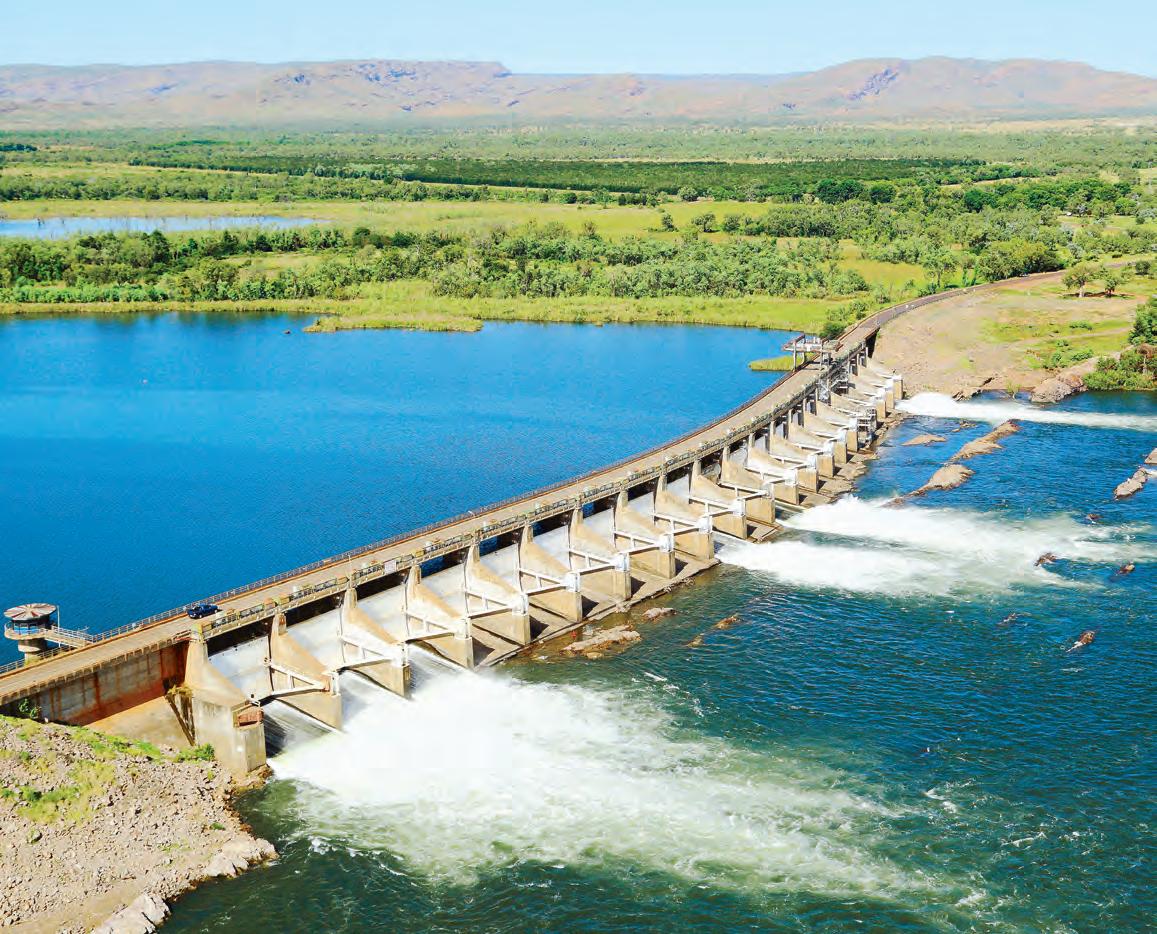
(Supplied)
ising solutions for Australia’s water challenges.
Smart irrigation systems, powered by real time data, could allow farmers to optimise water usage. Similarly, advanced filtration and recycling methods can ensure that water is reused effectively across industries.
Investing in these technologies will not only boost productivity, but also demonstrates Australia’s commitment to sustainable development. However, theorising doesn’t make it happen, it takes money, and more importantly, the will to act!
Aussie Pumps are at the forefront of developing products to deal with floods and droughts but don’t have the resources of governments!
“Even today, in spite of our offers for cut prices for big 6” pumps for State Emergency Services, so far we have had no takers.
These are organisations staffed by willing and dedicated people, who could be preparing for the next flood! It amazes us” , said Hales.
LOOKING FORWARD
Surely Australia has the resources, the expertise and the opportunity to lead the world in water management.
Let’s not allow short term thinking to limit the vast potential that climate change appears to be determined to deliver.
Instead of weeping, why don’t we deal with this as a resource, harvest the water, store it and use it in drought times when needed.
Surely with the right investment and leadership, the water that is a flood pest one day can become the foundation of a thriving sustainable future for Regional Australia.
Further information, including copies of this story are available from Australian Pump Industries. aussiepumps.com.au
* Warwick Lorenz is Managing Director of Australian Pump Industries. Warwick is a proud member of the Australian Water Association and is mystified by the association’s lack of understanding of the need to take water security for Regional Australia seriously.

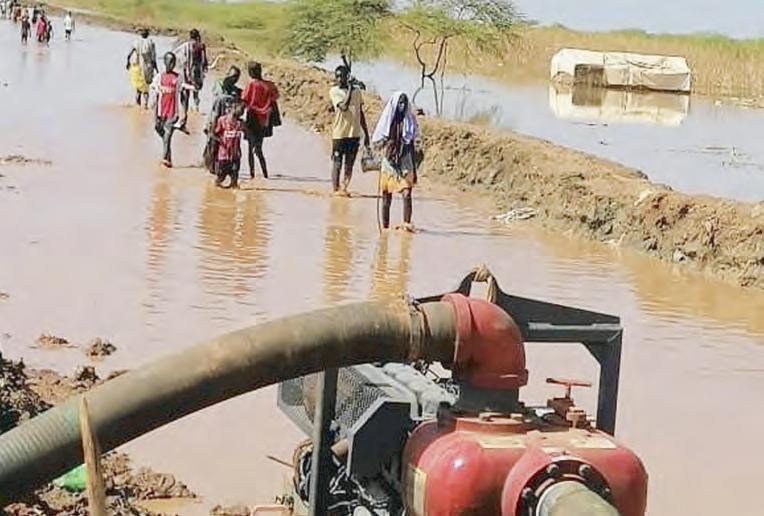












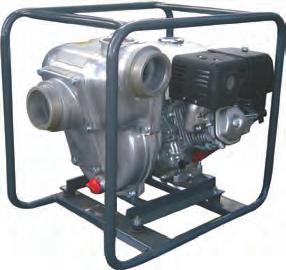




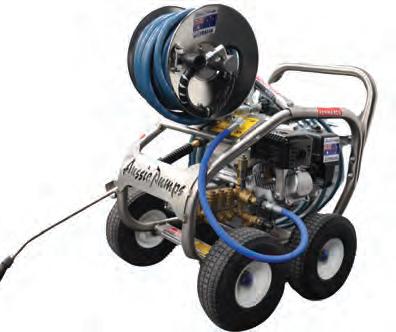
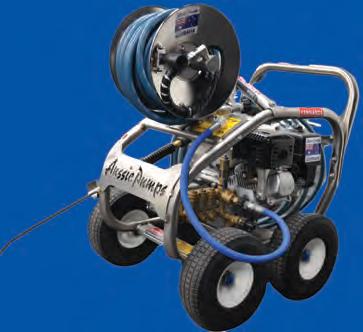





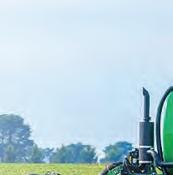
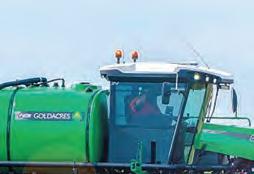



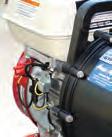

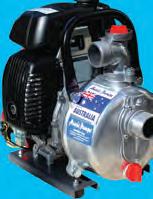
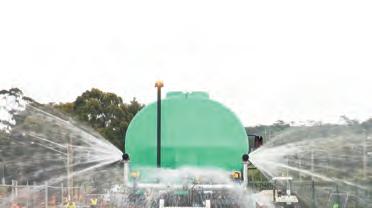


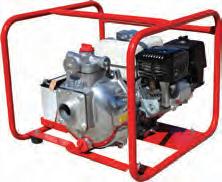


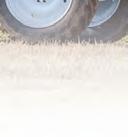

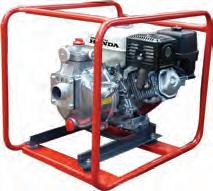






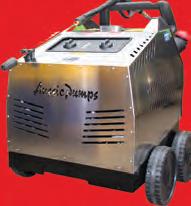

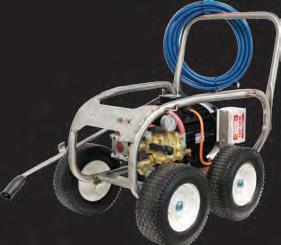
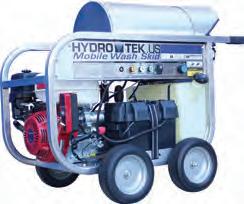


By Fiona Gowers
The 50th anniversary of Elders FarmFest from 3 - 5 June in Toowoomba drew record attendance
— some 40,000 visitors and more than 750 exhibitors — solidifying its status as Queensland’s premier agricultural showcase. A major highlight was the surge in ag-tech displays.
Thousands flocked to see cutting-edge farming innovations. As one attendee told Queensland Farmer Today:
“FarmFest is great for learning more about the advancements in farming … you can make a day of it, get a lot of information and make some informed decisions.“
Safety technology also featured prominently.
AirAgri, a company specialising in farm safety and management platforms, launched its emergency alert location system at FarmFest.
The system is designed to help farmers in isolated areas by providing an exact location for res-
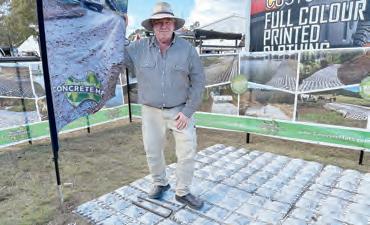

cue teams in case of emergencies.
It integrates with existing personal location devices and can send out alerts when a farmer is unable to do so themselves.
Major exhibitors such as Elders showcased services through workshops ranging from carbon-farming and natural capital to succession planning and renewable energy.
Meanwhile, Only Ag provided live machinery demonstrations — from John Deere tractors to attachments — backed by flexible financing.
Most attendees agreed FarmFest is no longer just about sales; it’s an education-driven event where farmers plan future seasons, explore tech and network.
With its rich balance of tradition and innovation — spanning livestock, machinery, agronomy and safety — it continues to exceed expectations.
As one exhibitor said, FarmFest remains the “one-stop farmer’s shop” for practical, futurefocused insights.

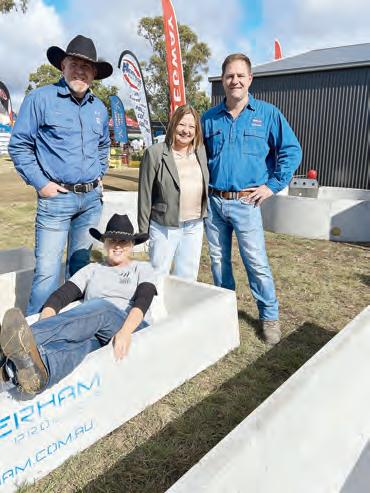
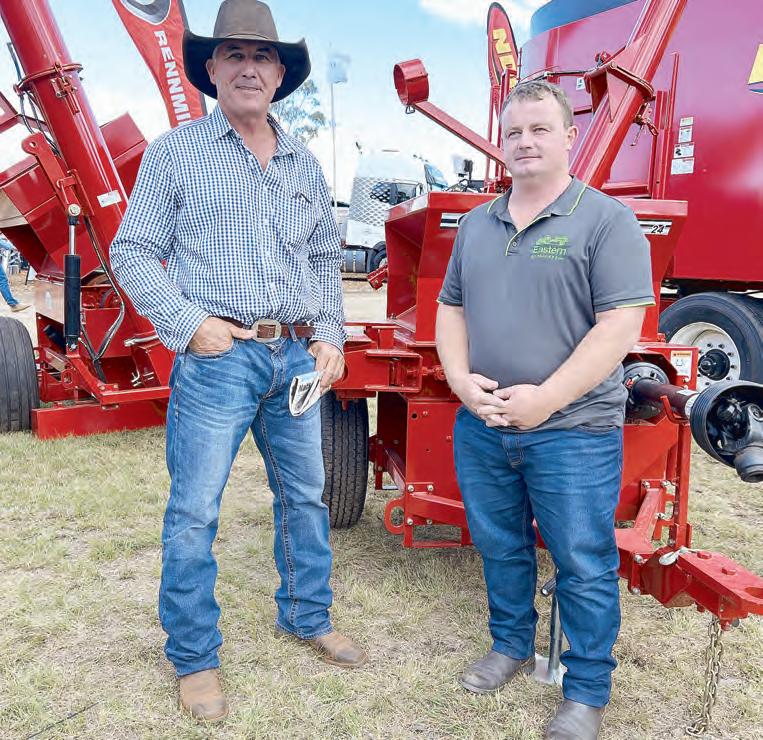
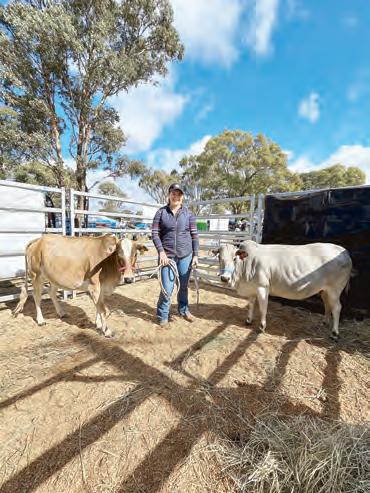


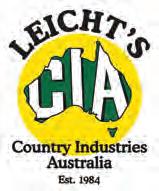

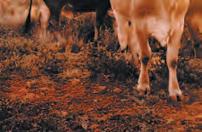



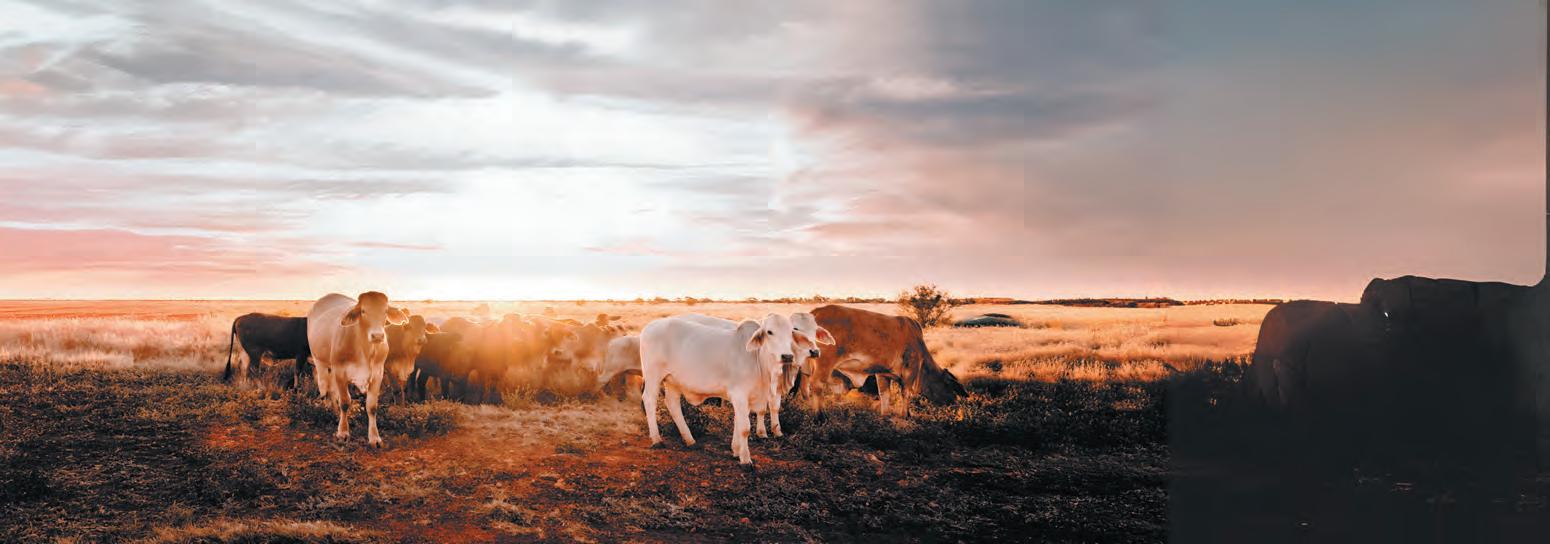





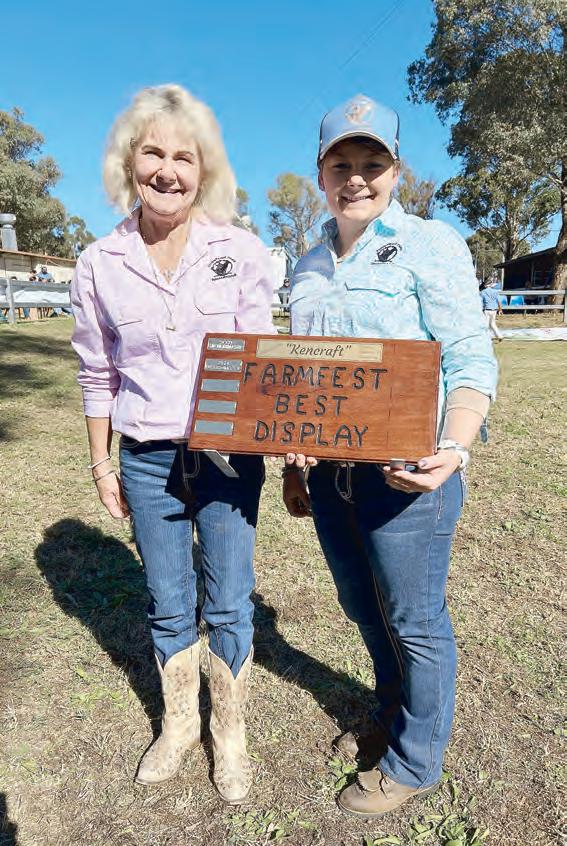
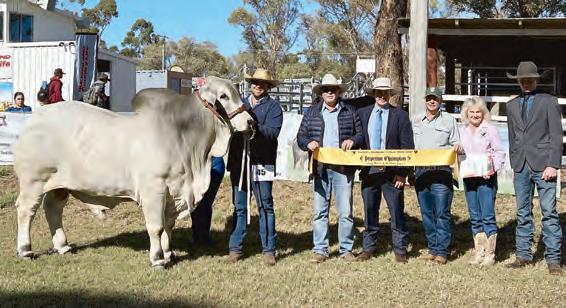
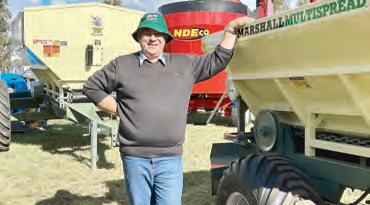


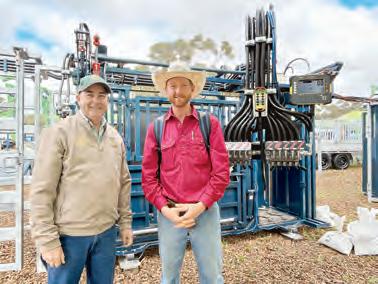




“FarmFest 2025 was another fantastic event for us,“ said Black Truck & Ag managing director Jason Black.
“Strong customer turnout, great sales and enquiries and a real buzz around our Kubota giveaway.
“It’s always a pleasure to showcase our full range of truck, ag and car products across our Queensland branches.
“We’re proud to support such a well-run and valued event.”
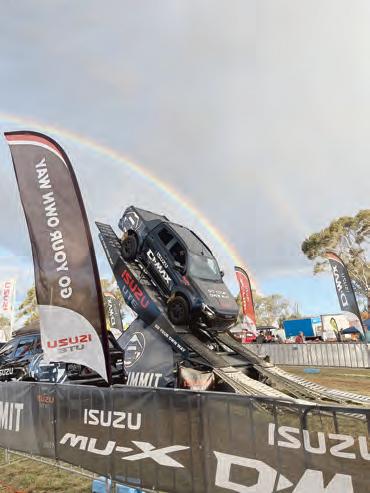

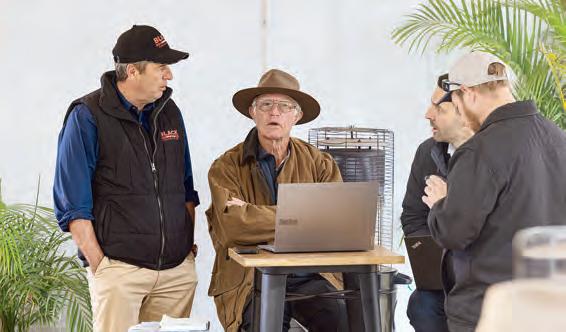
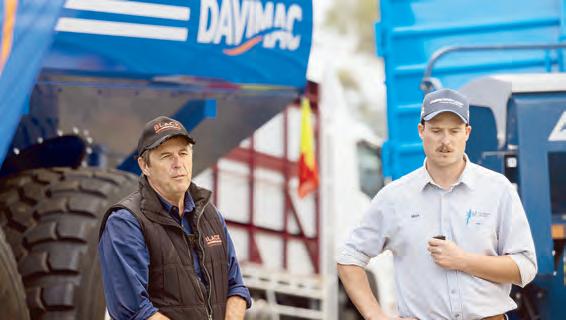
















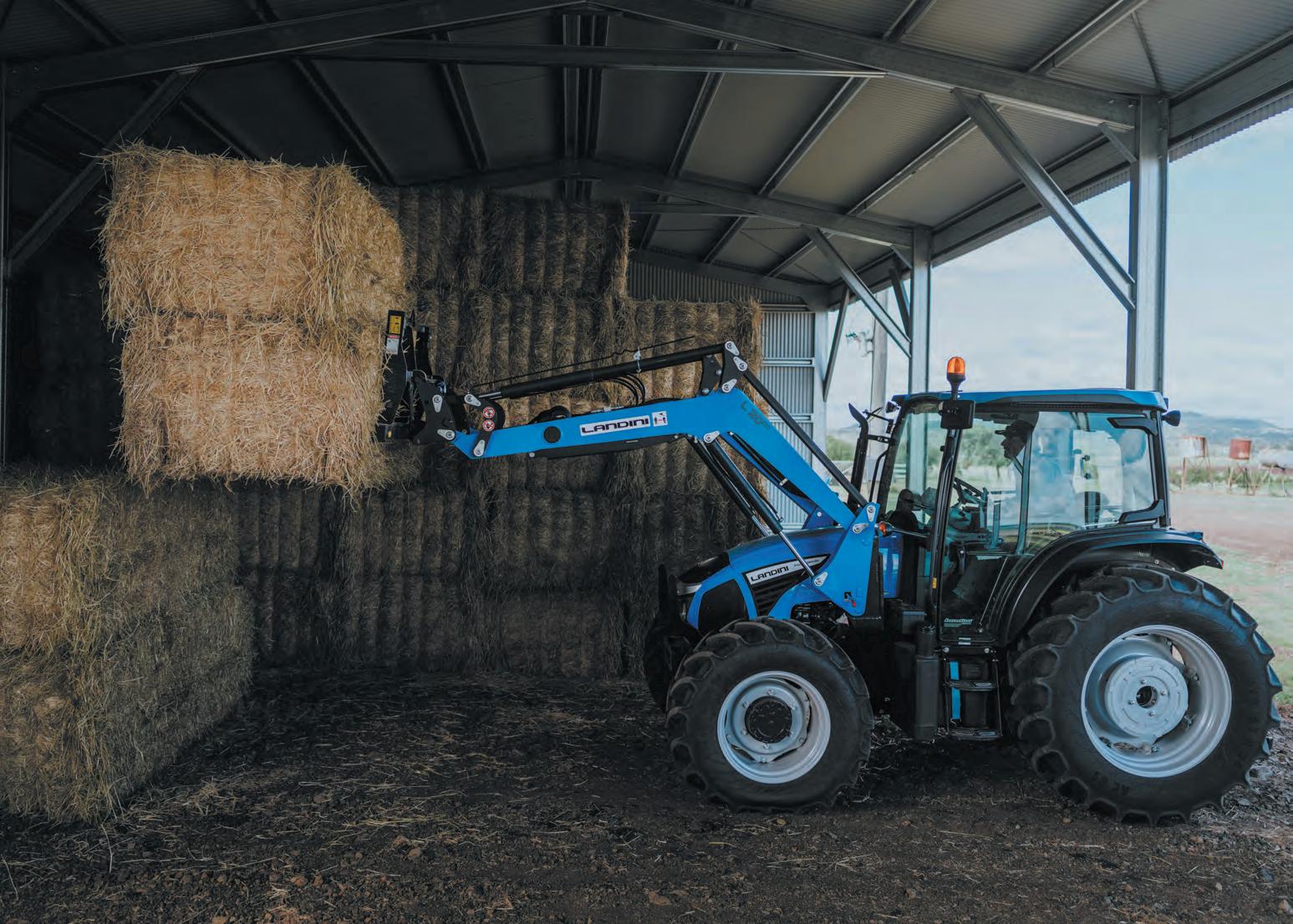

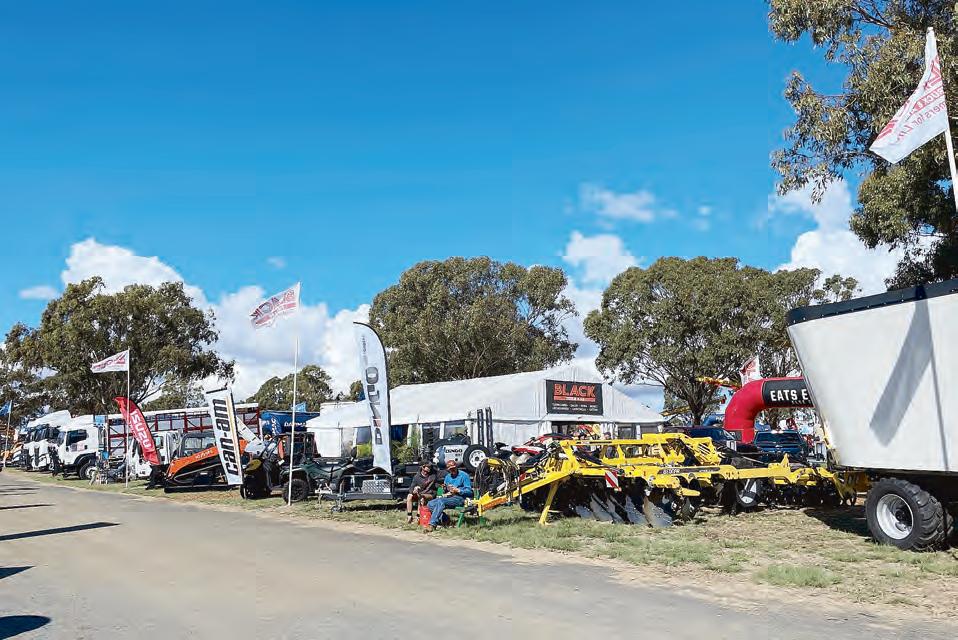
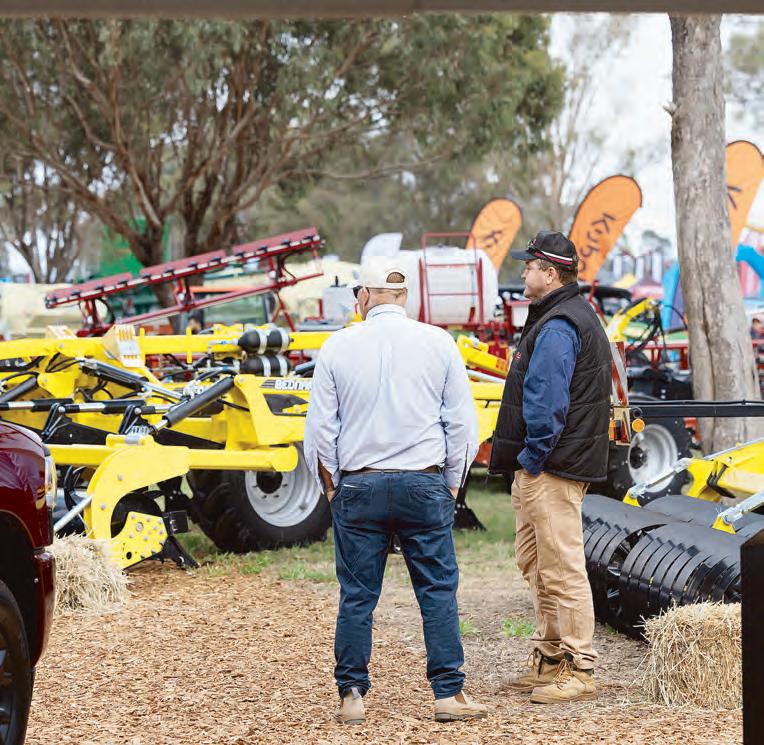


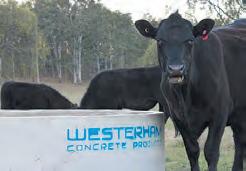

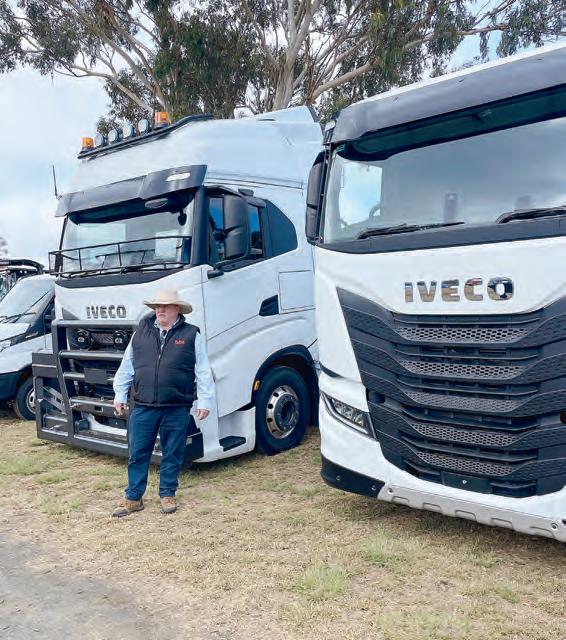
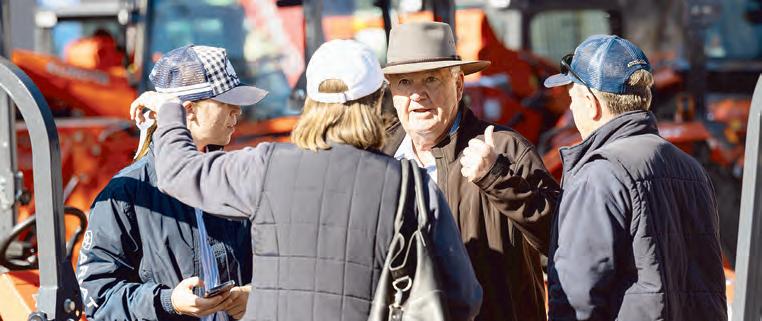
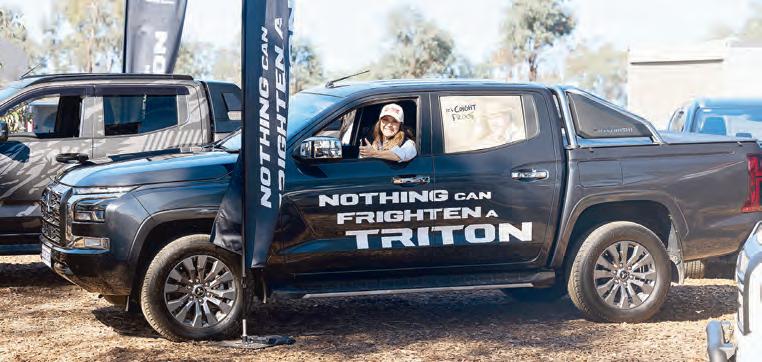
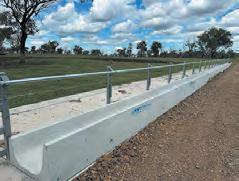

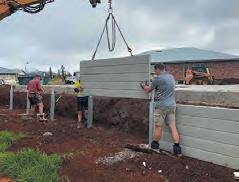
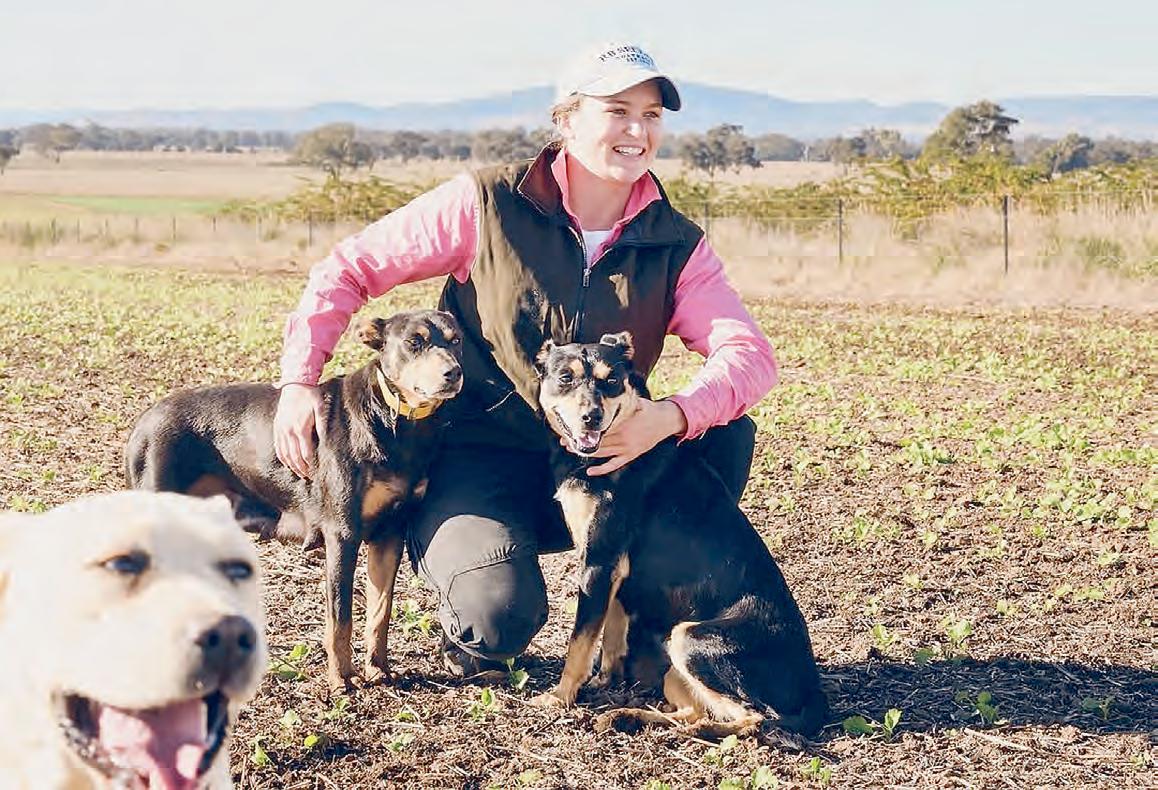
As part of its tax-time fundraising campaign, No Farmer Stands Alone, Rural Aid is highlighting the essential - but often overlooked - roles women play in Australian agriculture.
Women are the backbone of the nation’s farms, assuming vital responsibilities as labourers, decision-makers, carers and community leaders.
They face the same emotional and financial stress as men, compounded by the added burden of managing households and supporting others through crises.
Rural Aid’s Pulse of the Paddock survey found that 58 per cent of farmers rated their mental health as average or worse, with 38pc citing barriers to accessing support services for themselves and their families.
For many rural women, these challenges are even more pronounced.
“Too often, when we think of a ‘farmer,’ we picture a man in a paddock—but women are deeply involved in every part of farming life,” said Myf Pitcher, Rural Aid’s manager of Mental Health and Wellbeing.
“They shoulder enormous responsibility— running farms, raising families and guiding communities through disasters. Yet their mental health challenges are often invisible and unspoken.”
Alyce Parker, GWS Giants AFLW player and Rural Aid’s newest ambassador, knows these challenges first hand. Raised on a farm in Holbrook, NSW, she understands the emotional toll rural life can have—especially on women.
“Growing up on the land taught me resilience, but it also showed me how isolating and relentless farming life can be,” Alyce said. “I’ve seen the pressure my mum and other rural women carry. They give everything to their families and farms but often put their own wellbeing last.
“Rural women are strong, but strength doesn’t mean they shouldn’t get support. That’s why I’m proud to be part of Rural Aid —because they understand that connection and compassion make a real difference.”

Farmer Carol Hill from Coraki in the Northern Rivers echoes that sentiment. After years of droughts, bushfires and floods, it was Rural Aid’s personal approach that helped her through.
“You don’t want to admit you’re struggling,” Carol said. “Farmers are strong, but sometimes we need help too. Rural Aid doesn’t just give you a number to call — they call you. They come to you. That human connection is everything.”
In the past 12 months, Rural Aid has seen a 55 per cent rise in new mental health referrals. Its counsellors travel on-farm, make regular check-in calls and deliver practical, compassionate support to families doing it tough.
“This tax time, we’re asking Australians to stand with farming families — especially the women who are so often the emotional backbone of the farm,” said Myf Pitcher.
“Every donation can help Rural Aid connect with more people in need — both practically and emotionally through the many ups and downs of farm life.”
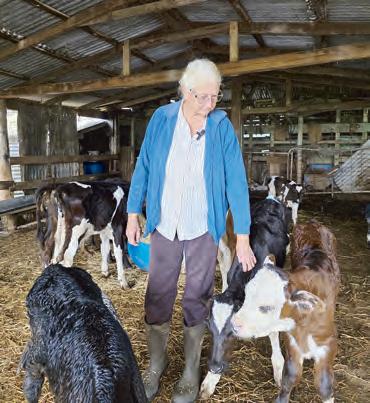
12582497-JW52-22
By Jessica McGrath
Reducing isolation and providing support for rural women is a goal 1800 4 Women and Motherland share.
The team from 1800 4 Women attended a pop-up stall at the Motherland Kingaroy event on Saturday, 24 May.
Natalie Stokell and Bianca Blackmore shared about the free phone counselling service for women in regional and remote Queensland.
“Help is only a phone call away,” Ms Stokell said.
“We understand how isolating it can be, not just physically, but also emotionally and it’s as easy as picking up the phone to connect for support.”
The service provides counselling and is a referral support line, however it is not a crisis service and does not offer medical diagnoses.
The 1800 4 Women service helps support rural women with mental health concerns, and assist their recovery after domestic or sexual violence.
“[Help] is closer than you think,” Ms Blackmore said.
There is also a midwife on the team who can advise support for pregnancy, grief and loss.
“This line was created by women for women,” Ms Stokell said.
The free phone service is made with regional and remote Queensland women in mind.
“We understand how hard it is, especially for women living regionally, rurally and remotely, to not only access services but physically the logistics [of getting there],” Ms Stokell said.
“It’s completely free, there’s absolutely no cap on how many sessions, you can see the same counsellor each time.”
The Brisbane-based charity organisation has been around for more than 40 years and services women across Queensland. The 1800 phone number is funded by the Queensland Government.
It is offered to women from the age of 12 years and up, and currently has no waitlist. 1800 4 Women operates from Monday to Friday 8am to 8pm, and on Saturdays from 9am to 5pm.
To access the services call 1800 496 636, email wellbeing@wheq.org.au, or visit wheq.org.au/1800-4-WOMEN

By Jessica McGrath
It truly does take a village to raise a child, but what if you live in a rural or remote community?
Motherland Australia is working hard to connect and empower isolated mums.
The national charity held their inaugural event in the South Burnett on Saturday, 24 May at Hillview Cottages.
More than 120 rural mums from across the South Burnett and beyond came together for a powerful day of connection, conversation and community.
Founder and CEO of Motherland Stephanie Trethewey was excited to see the day come together.
“It’s very surreal, it’s such a special day for the region and for the Motherland,” she said.
“Rural mums are the backbone of our farming communities and it’s so special to celebrate them today and bring them together and talk about things to make everyone less alone.”
They enjoyed an afternoon tea picnic overlooking the stunning view and listening to the event’s various guest speakers.
Rural mums share their stories
Three Burnett mums shared their powerful stories with the crowd at Motherland’s inaugural Kingaroy event.
Felicity Burton, Co-founder of Common Ground Foundation and owner-manager of Burton Family Beef, was one of the local rural mums on the panel.
Alongside her was Kylea Hodgkinson-Jones who is the owner of Firebreak Farm and is an exmember of the Australian Defence Force.
Finally, Jenny Lutz shared her journey raising an autistic son and founding the South Burnett Autism Support Group.
Each of the ladies touched on the hardships faced by rural mothers, and the isolation they felt navigating motherhood.
“Motherland’s mission is to reduce isolation and to improve the mental health of mums on the land,” Ms Trethewey said.
“Today’s panel was so open and vulnerable, which is exactly what Motherland stands for.”
Ms Trethewey asked the panel members what they would tell their younger selves during their toughest moment of motherhood.
“Be kinder to myself,” Ms Hodgkinson-Jones said.
“Go with your gut,” Ms Lutz said.
“It’s going to be alright, don’t overthink stuff,” Ms Burton added.

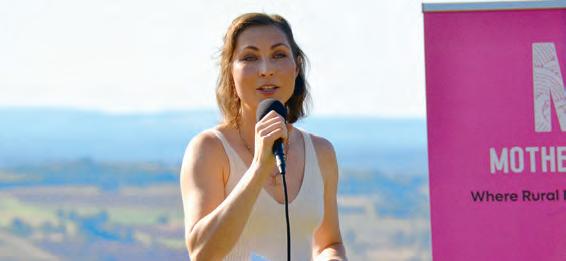
Inaugural event raises awareness
This was Motherland’s first event in the South Burnett region, with some participants travelling as far as Moree.
“It’s been so beautiful to see so many mums who have been part of our community for years meet us in the flesh,“ she said.
Ms Trethewey shared that some of the mums who had met online through the Motherland Village program met together for the first time at the Kingaroy event.
“Which is magic,” she said.
The day was aimed at raising awareness.
“To raise awareness of Motherland, to raise awareness of the importance of mental health and looking after ourselves and to ensure rural mums know that if they need a village that Motherland is here for them,” Ms Trethewey said.
As a national charity, Motherland supports
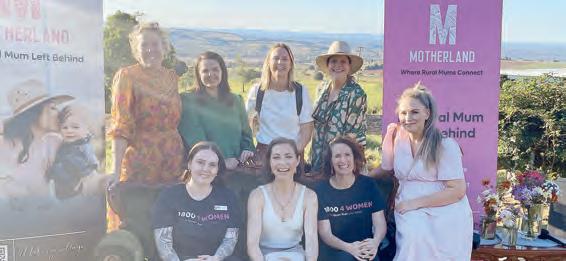
rural mums through their podcast, which shares real stories of rural mums.
Mums with children aged between 0 and 18 can complete the Motherland Village program, Australia’s first online rural mums program.
Participants can also access Motherland Connect, Australia’s first digital health directory for rural mums, and a scholarship fund so rural mums doing it tough can still access Motherland’s services.
Motherland started in late 2019 and has only been a registered charity for nearly three years, but has already grown to an online community of more than 125,000 women.
The Kingaroy event was held in partnership with the Queensland Government, enabling Motherland to significantly expand its services, including the scholarship fund, across the state.
“Around 15 per cent of our charity’s engagement comes from Queensland, and we’re com-
mitted to growing our impact in a state that plays such a vital role in our country’s agricultural story,” Ms Trethewey said.
Queensland Attorney-General, Minister for Justice and Minister for Integrity, and Member for Nanango, the Hon. Deb Frecklington attended the Kingaroy event.
“Motherland Event in Kingaroy was a wonderful opportunity to celebrate and support the incredible women of our region,” Mrs Frecklington said.
“Events like this are vital in helping rural mothers feel seen, heard, and connected.”
Queensland is set to host Motherland’s second national conference in Toowoomba in 2026.
Queensland rural mums doing it tough can access the Motherland Village program for free through a scholarship program. For more information, or to support Motherland, head to: motherlandaustralia.com.au
By Jessica McGrath
It’s been a “beautiful” journey for a South Burnett mum who got to experience the Motherland community in person after years of virtual support.
Maidenwell mum Mel McNaughton is a Queensland Motherland Village Ambassador and helped organise the South Burnett event on Saturday, 24 May at Hillview Cottages, near Kingaroy.
“It’s just so special… it’s overwhelmingly beautiful,” she said of the first South Burnett event.
Ms McNaughton, who has had a long online connection with Motherland, was excited to see the event come to her home region.
“It’s really nice to share that feeling of connection in the flesh,” she said.
“To see it physically is beautiful, and to bring it locally… I’d really love to extend our reach more and have more people [connected] locally.”
Ms McNaughton enjoyed the event, which not only incorporated an afternoon tea picnic at the “stunning” Hillview Cottages, but also featured vulnerable stories from local women.
“To see someone local share a story that you might not have known about them when you see them buy milk at the shop, to have that opportunity for connection… it normalises some of your
own struggles,” she said.
Ms McNaughton had two beautiful daughters, and also experienced some miscarriages.
“I had a lot of anxiety from [the miscarriages],” she shared.
As part of her healing journey, she found the Motherland podcast, and enjoyed listening to the wisdom and stories shared by rural women.
The Queensland Ambassador decided to do the Motherland program just over two years ago when she was very pregnant with her son Ned.
“That cracked open hearing those stories and hearing other women share them,” she said.
“My experience was I thought I had to be tough and suck it up, because it’s such a rural woman’s thing [to do].
“When I really lent into that vulnerability, look what it’s opened up -all of these beautiful connections.”
Ms McNaughton, like many rural women, wears many different ‘faces’ through her various roles, and enjoys the chance to show up and be vulnerable with the Motherland community.
“Celebrating our differences – all from rural, regional, all the complexes within that…raising children in that way,” she said.
Connecting each of the rural Motherland women is a thread of a feeling of isolation, and wanting to be connected.
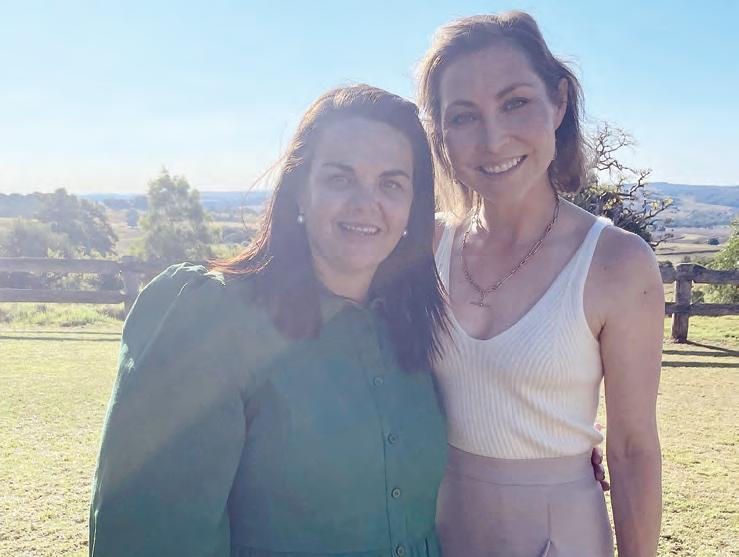
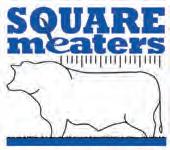
By Fiona Gowers
In the heart of Queensland’s Redland Bay region, Lachlan and Louise Howland of Golden Pastoral Co are redefining premium grass-fed beef production.
Since 2018 they have bred Square Meaters and Heritage Angus - both of which excel in grass and grain environments - to supply high quality meat to butchers across the Brisbane region.
“I’ve set up markets that suit the beast and then worked to meet the demand,“ Mr Howland said.
“The butchers are mad not to take me on because I really do have the best breeds to suit their needs.“
Over the past 12 months, the Howlands have supplied four bodies per month to their local butcher store, with demand for their beef so strong that cuts often sell out within three days.
“It’s the smaller, premium cuts butchers are looking for now - 200 kilogram bodies to 220kg bodies, producing 200g steaks,” Mr Howland said.
“The Squares are measured to meet those butchers’ markets.“
Due to high demand, the Howlands have started a buy-in program, where they buy cattle from breeders for a premium price, finish them on their property and market them to butchers.
Mr Howland is offering commercial breeders more dollars per kilogram for their cattle than they would get through other sales channels.
Ideally, he seeks 300 to 350 kilogram weaners “and I’ll finish them from there“.
“By creating a reliable supply of quality beef, Golden Pastoral Co aims to ensure that both breeders and butchers remain profitable.
“Everyone wins from the program”
Mr Howland’s journey with beef cattle began more than 30 years ago as he worked his way through different roles at Teys Brothers, Beenleigh.
During his time as a boner at Teys, he developed a deep understanding of what makes a top-quality butcher’s animal and Square Meaters ticked every box.
Square Meaters, an Australian-developed breed, are renowned for their early maturity, heavy muscling, and even fat cover.
These traits allow the breed to consistently produce eight to nine-month weaners weighing between 225 to 275 kilograms or 12 to 14-month yearlings of 400–420 kg, off grass.
Their ability to finish on grass makes them ideal for the domestic market, aligning with pasture-fed assurance certifications.
“Our point of difference is that while other breeds are being backgrounded, we are finishing our bodies,“ Mr Howland said.
Golden Pastoral’s cattle are bred to thrive in Australia’s temperate climate.
Square Meaters cows, for instance, are known for their high maternal instincts and fertility rates, suitable for a short joining period leading to calving maturity within 24 months.
They are excellent milk producers, enabling high weaning weights in their calves. Moreover, their docile temperament ensures ease of management throughout the production chain,
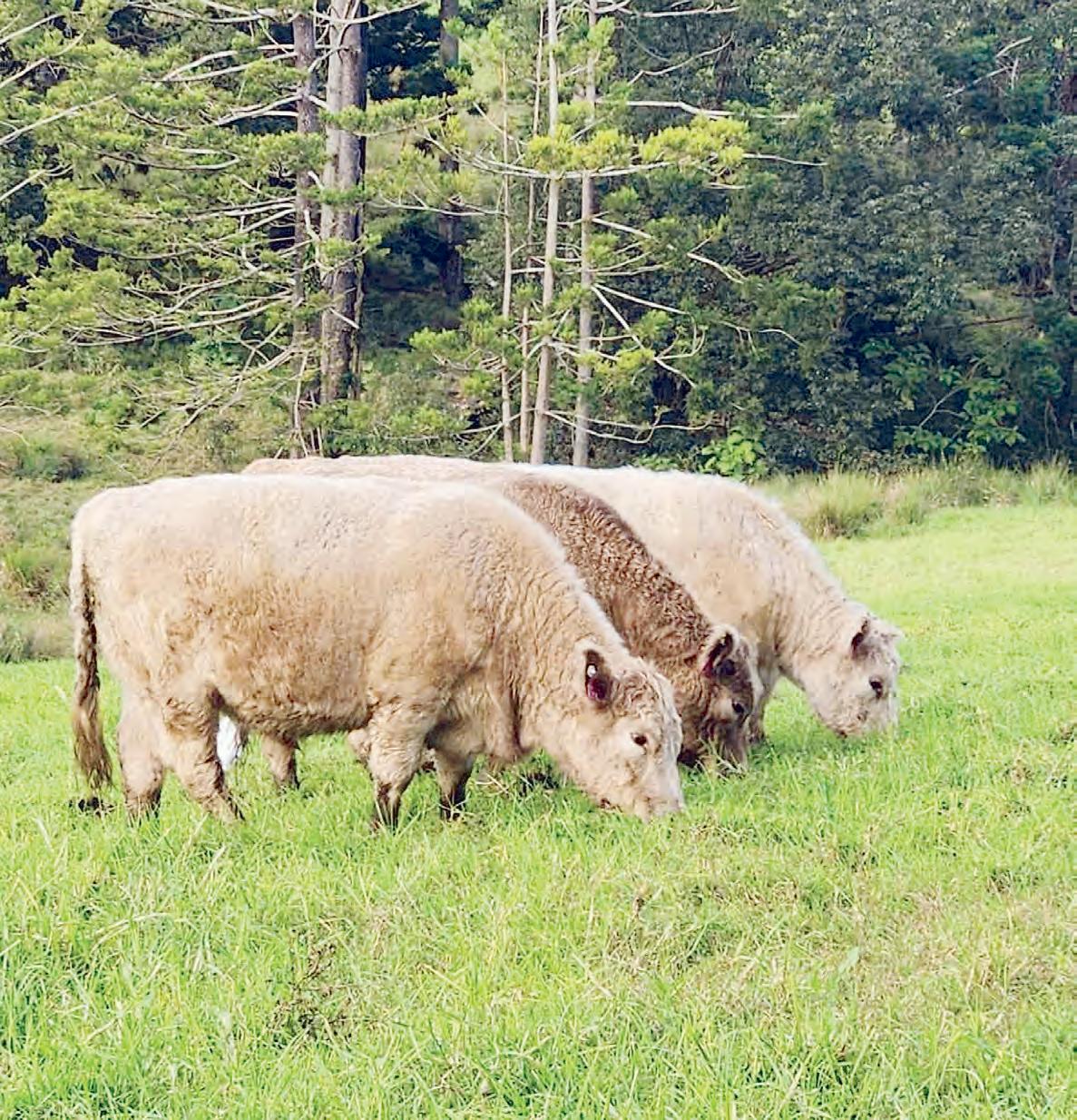
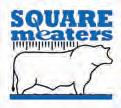
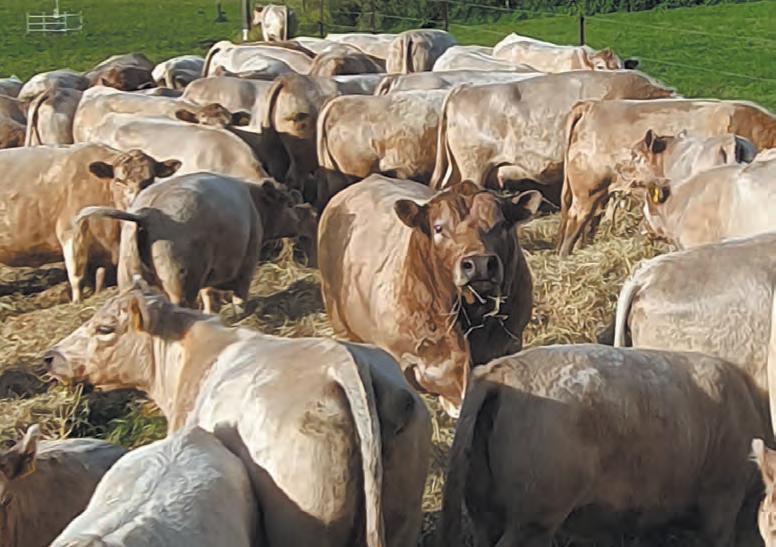
JK Cattle Company’s on-property bull sale at Condamine on Monday 4 August presents an outstanding opportunity for producers to secure top-quality bulls bred through a commerciallyfocused program.
With 95 bulls on offer across the Angus, Brangus, Ultrablack and Wagyu breeds, the sale caters for a wide range of production goals and customer requirements, underpinned by the fundamentals of the JK program.
For Justin and Kate Boshammer, producing functional, fertile, efficient cattle with high eating quality is at the heart of their operation.
Over the past 20 years, they’ve developed their herd from the ground up – ensuring their seedstock operation has required a commercial focus.
Today, JK Cattle Company comprises 780 stud females, with properties located around Condamine and Dulacca.
Fertility remains a cornerstone of the program, reinforced by practices like yearling mating, short joining periods on grass and providing dam fertility data on all bulls sold.
This year, buyers will benefit from an even deeper insight, with three generations of maternal fertility data provided on all sale bulls.
Beyond fertility, the JK program places high value on performance, constitution, adaptability and customer satisfaction.
The bulls are developed and presented in a way that is conducive to a long working life and are backed by extensive objective data.
The bulls have genomically enhanced EBVs, are DNA sire verified, semen motility and morphology tested and independently structurally assessed.
They are blooded for tick fever, tested free of pestivirus and vaccinated for 7-in-1, 3-day and vibrio.
Free delivery is provided across Queensland.
Justin and Kate are known for their commitment to quality and customer service and are always willing to answer questions or provide personalised bull recommendations for their clients’ requirements.
For those who can’t attend the sale, online bidding will be available on Stocklive, with lot videos and comments provided.
The Open Day on Friday 4 July will provide an ideal opportunity to inspect the bulls in a relaxed, low-pressure environment ahead of sale day.
The Open Day will also feature industry speakers providing valuable insights on topics including markets and consumer requirements, EBV validation, cattle psychology and behaviour, buffalo fly management and being “bank ready”
For full details of the program and to confirm your attendance, please visit www.jkcattleco. com.au.
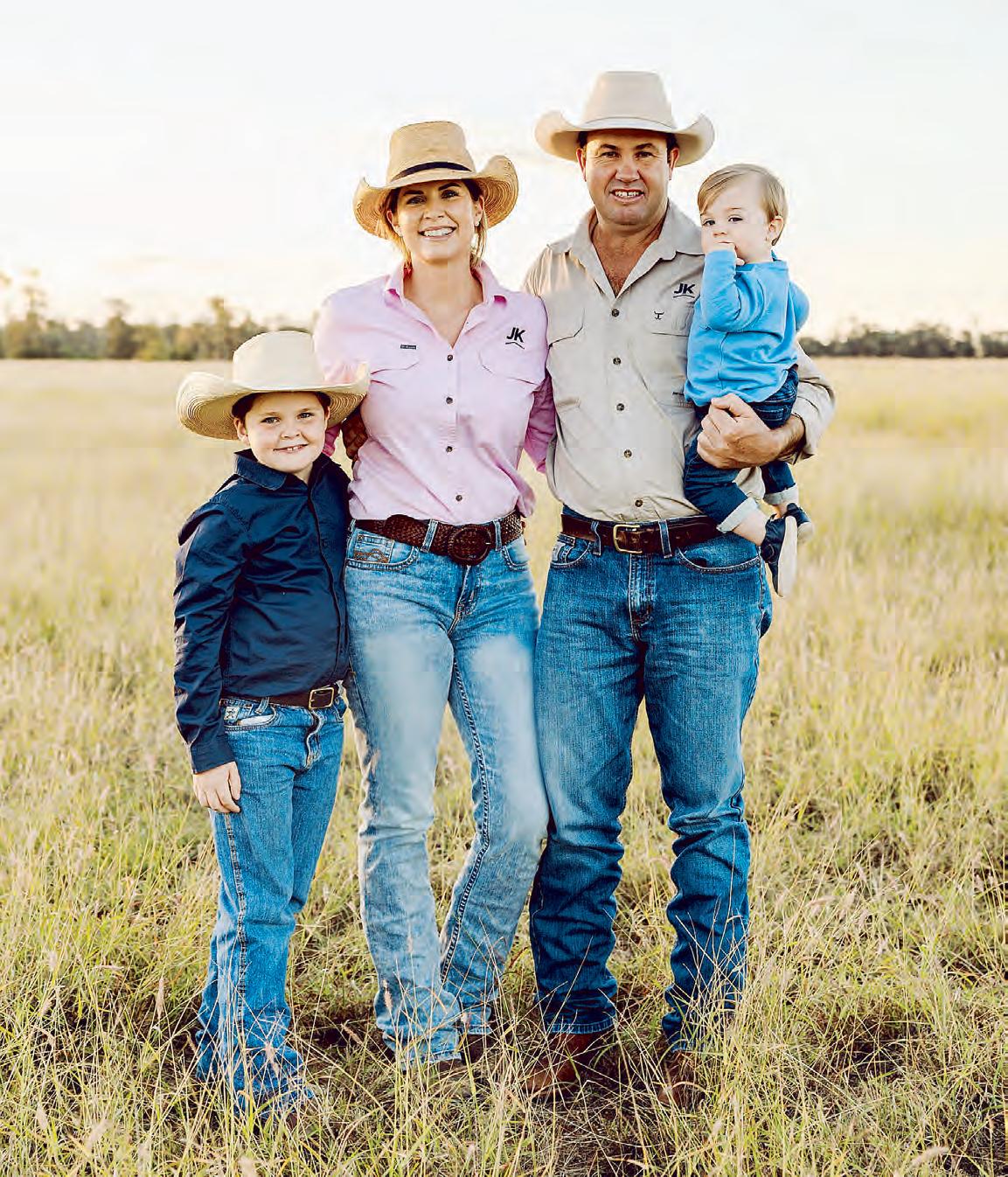
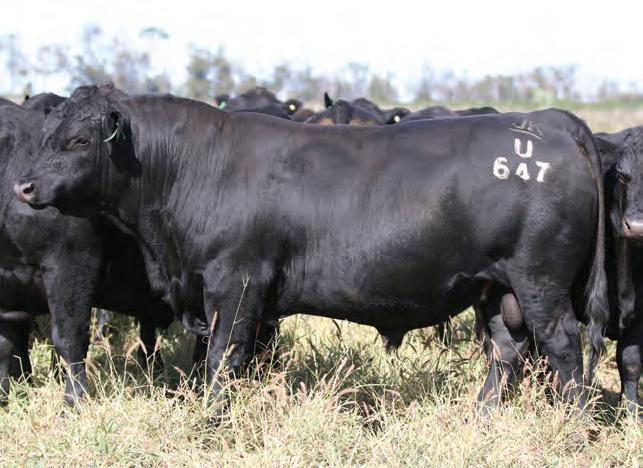




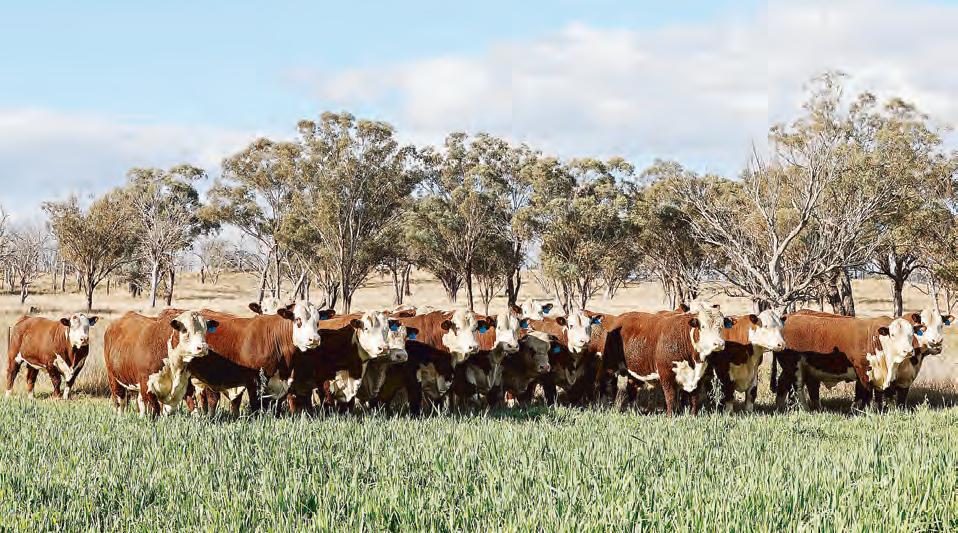

Tycolah Poll Hereford Stud was established in 1969 and is proud to celebrate 56 years of breeding excellence.
As a family-owned operation based in the Barraba/Bingara district of northern NSW, our commitment has remained unchanged: producing well-balanced fertile and functional Poll Herefords with strong constitution, easy fleshing ability and reliable do-ability.
Over the decades, Tycolah has developed a distinct type, with good bone and good skin and hair type a must.
These qualities have seen our cattle sell to vastly different regions of Australia from the Snowy Highlands to Alice Springs and the more tropical regions as well.
This has led to having three Lahford (Latitude Adapted Herefords) bulls (Poll) in this year’s sale.
These Lahford bulls have exceeded our expectations. They have been blooded ready to go to tick areas.
With this in mind, we also started a small Braford stud five years ago with the idea of blending the hardiness and adaptability of the Brafords with the fertility, carcase qualities and finishing ability of the Herefords to obtain an even more efficient animal.

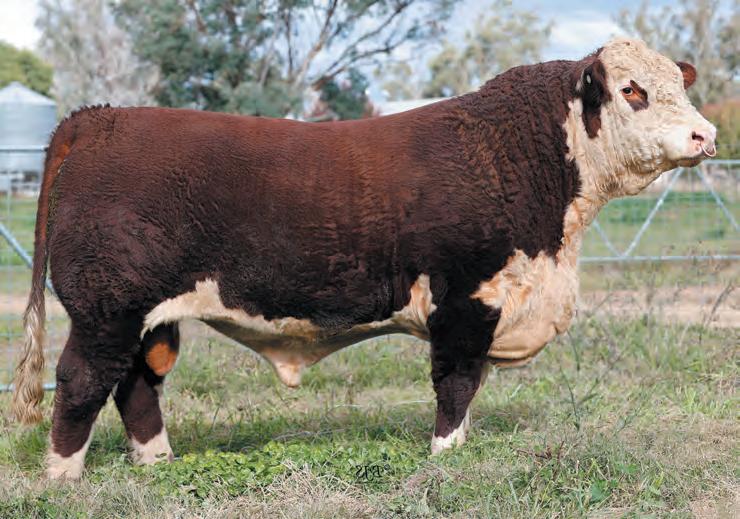



Tycolah along with the cottage stud will have 55 Poll Hereford bulls and three Lahfords bulls for this year’s sale to be held on Friday, 18 July. The bulls have been semen tested, Vibrio, 3-day and 7-in- vaccinated and tested negative for Pesti-virus. Genomic tested and sire verified. The bulls are ready to deliver functionality, fertility and profitability to your herd and we believe they represent outstanding value.
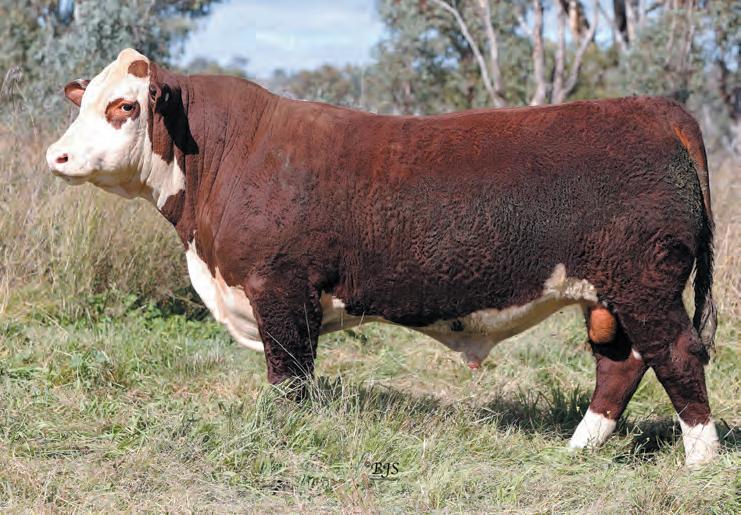
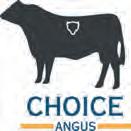


The Choice Angus stud has continued to thrive in the Upper Horton district since its relocation in 2020.
Thanks to another strong season, the stud’s 2025 lineup of sale bulls is on track for their upcoming spring sale at the end of August.
A proudly family-owned and -operated Angus cattle stud, Choice Angus combines a registered breeding program with a commercial operation, selling approximately 50 yearling bulls each year.
This year’s online-only sale marks an exciting step forward, featuring 60 registered yearling bulls — all with proven genetics from their highperforming female herd, paired with elite sires of the Angus breed.
Stud principal Tim Brazier said the focus remains on breeding commercially viable bulls that meet the needs of a growing client base.
“Breeding is a balancing act,“ Mr Brazier said. “If you chase one trait too hard, you sacrifice another.”
Thanks to a strong foundation of repeat buyers, Choice Angus continues to earn a reputation for consistency and quality.
“We really appreciate the continued support of our loyal clients,” he said.
“Our breeding objectives focus on productive, docile cattle with good depth, length of body, strong bone structure and softness.”
Temperament, Mr Brazier adds, is a key factor: “Quiet cattle lead to better meat quality, faster weight gain and quicker recovery from stress.”
The herd consists of approximately 350 registered Angus cows run on an 800-hectare property, “Coolowie,” located in the Pallal region of NSW.
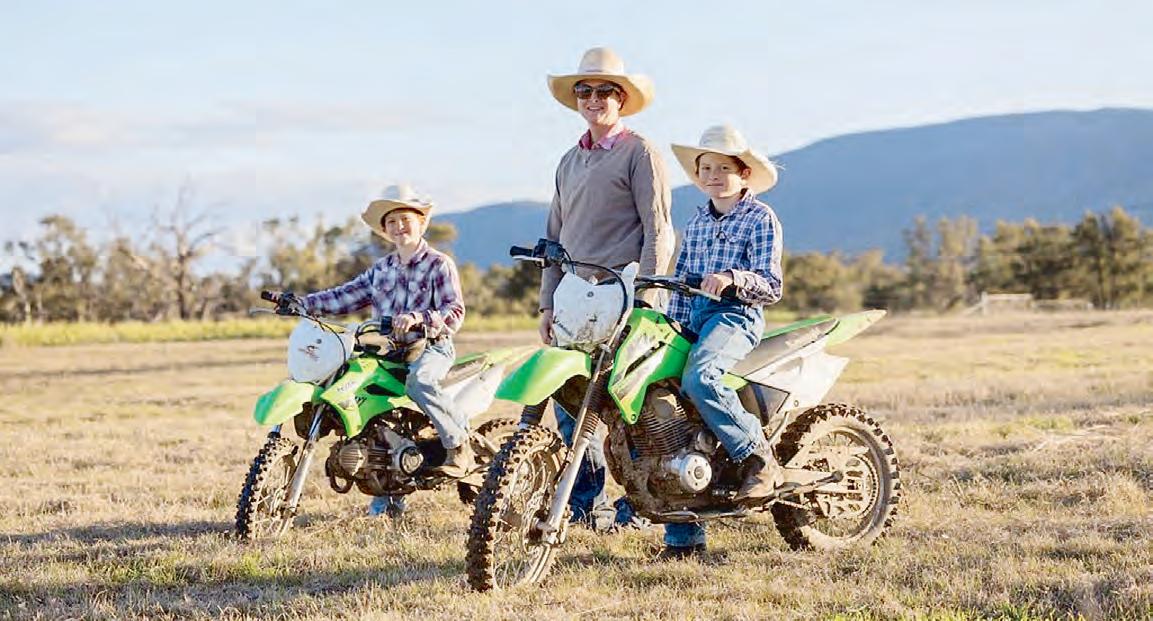
Since 2019, sire verification has been in place, with all progeny DNA-tested annually to confirm parentage and strengthen genetic integrity.

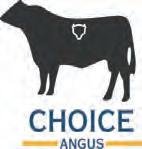

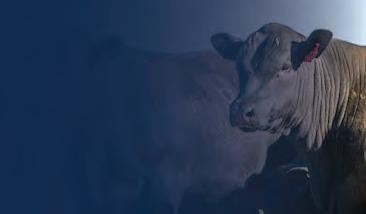


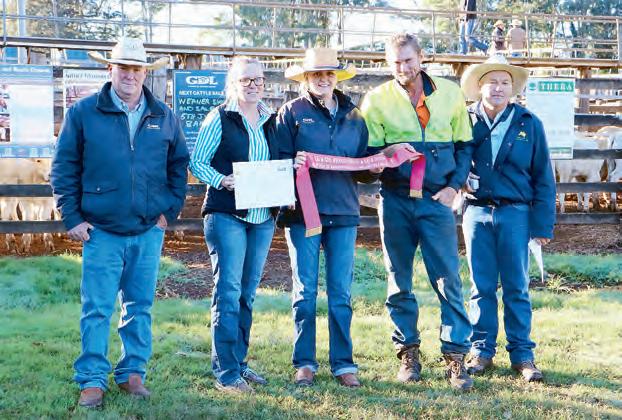
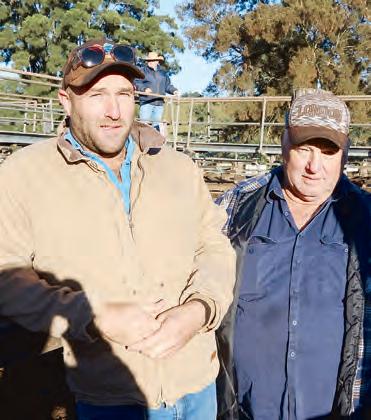
By Maddison Richards
The successful Coolabunia series of three weaner show and sales in the South Burnett has come to an end.
On Thursday, 5 June, the final event in the 2025 Coolabunia Weaner Sale series was held, with the sale drawing a strong crowd of vendors, buyers, and supporters from across the region.
The series of sales began on 3 April with the first Weaner Show and Sale, with a mid-season sale on 15 May. That sale has been praised for its professional execution, high-quality yardings, and consistent vendor results.
The show days saw many generous sponsors providing a range of prizes, with every beast entered into the show providing the owner with a ticket to go into the major draw for a Kubota Ride On Mower, donated by Ken Mills Machinery.
Ten winners were drawn randomly at each sale, bringing 30 finalists to the final sale. The 30 soon became five, as five names were drawn and received a key.
Only one key would start the mower.
Congratulations goes to Gary Blinco, the lucky winner whose key started the mower.
The final Weaner Show and Sale featured a strong lineup of young cattle and impressive competition across the judging pens.
Throughout the sale series, Aussie Land and Livestock has continued to prove why they are regarded as one of the leading independent livestock agencies in Queensland.
With a highly experienced team of auctioneers and a skilled support crew, the event ran seamlessly from yarding to the final hammer.
“We’re incredibly proud of how the 2025 Coolabunia Weaner Sales turned out,” Aussie Land and Livestock’s James Bredhauer said. “We had strong support from vendors, exceptional cattle on offer, and a terrific atmosphere across all three events.”
The show results revealed the best heifers, reserve champion and grand champion, before the sale started.
Neil and Jean Johnston cleaned up in the show, with first time showers A and Marshall walking away with ribbons as well. Show results:
• Best pen of Infused Santa Weiners - Neil and Jean Johnston
• Best pen of Infused Angus/Brangus WeanersA and M Marshall
• Best pen of Infused Limousin Weaners - W Stevenson
• Best pen of Infused Limousin Weaners - Brian Dugdell
• Best pen of Infused Charolais Weaners - Brett Dugdell
• Best pen of Infused Droughtmaster WeanersKev Meager
• First Place Weaner Steers - Neil and Jean Johnston
• Second Place Weaner Steers - Brian Dugdell
• Third Place Weaner Steers - D and K Wyatt
• First Place Weaner Heifers - Neil and Jean Johnston
• Second Place Weaner Heifers - Brett Dugdell
• Third Place Weaner Heifers - D and K Wyatt
• Best Pen of Replacement Heifers - A and M Marshall
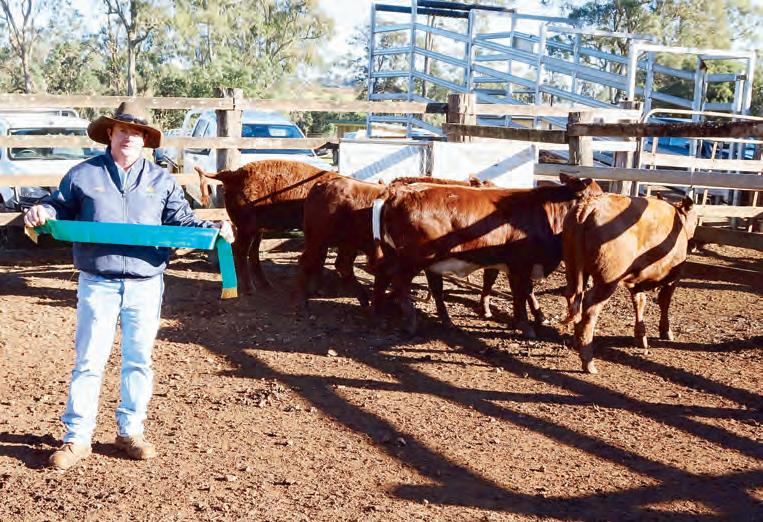
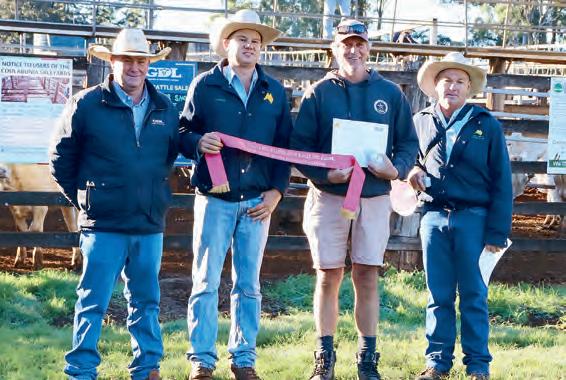
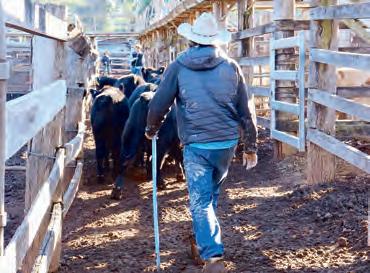
• Reserve Champion Pen of Weaners - Neil and Jean Johnston • Grand Champion Pen of Weaners - Neil and Jean Johnston • Lucky Vendor Draw - W Sawtell


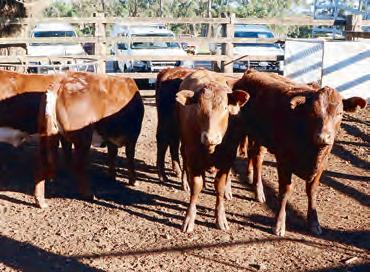
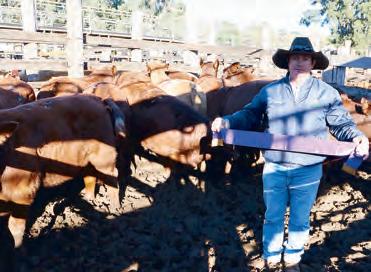
$734.24 per head. Yearling Bulls 200-300 saw an average price of 350c/kg, returning an average value of $805 per head.




Kandanga Valley stud is now running more than 1800 registered stud Charolais and Charbray cattle across four properties, two in the coastal district of Gympie and two on the Western Downs in the Moonie district.
The sale bulls have been reared at Kandanga on coastal country, with plenty of exposure to cattle ticks and the humid climate.
With a light sale preparation for 80 days on a high roughage diet, these young bulls are right to go to work in any environment.
About the bulls - Charolais
Generally quite young bulls on offer this year, with a sprinkling of older, more mature boys that show what their young brothers can grow into.
Once again, a solid line-up of beefy bulls with good soft meat and muscling in all the right places.
Of the 60 Charolais bulls in this catalogue, 36 are polled, with six polled red factor and three homozygous polled.
With fertility traits well and truly locked into our Kandanga Valley breeder herd and very good growth EBVs on display, there’s plenty of young studs here that can improve any herd.
There’s a big line-up of sons by Palgrove Lombard (polled) and Allednaw Prince (polled), two ever reliable old sires that have definitely put a stamp on our herd.
Plus impressive polled sons of Moongool sires – Recall (polled), Qadir (polled) & Mr S (homozygous polled) that will put some real carcass punch into their calves.
Not to forget old Kandanga Valley Lionheart (red factor), a truly magnificent specimen of a Charolais bull with faultless structure that stood up to serious work until 10-years-old and was only moved on due to our polled program.
Ascot Quorum is a polled bull that has stamped a line of top performing youngsters showing a little extra fat cover and will fit well into any herd.
All bulls were blooded as weaners and vaccinated with 7-in-1, 3-day sickness and Vibrio.
Sale bulls are used to being mustered with horses, dogs, buggies and/ or two-wheelers.
Videos and supplementary sheets will be available at least a week prior to sale and bulls will be semen tested, both crush side and morphology, two weeks prior to sale.
About the bulls – Charbray Bred to perform with as much meat and muscling as our Charolais but with the bred-in constitution and tick tolerance of our Kandanga Valley Charbray bulls.
To all you breeders along the coast or in that big rougher country to the west, these boys will perform for you year in, year out.
Over the years we’ve put a lot of emphasis on leg structure and tidy sheaths, probably the two structure faults bulls mostly fail from. We think you’ll agree year after year Kandanga Valley Charbray bulls have stood up to inspection and passed
with a positive tick.
With the muscling and weight for age in some of these bulls it would be well worth your while to come for a look if you need to improve your weaner weights and produce more flat-back cattle to make premium prices.
Of the 50 quality Charbray bulls on offer, 25 are polled and although they vary in colour a little, we see that as a positive with some cherry red bulls offered that would fit nicely into Santa or Droughtmaster herds.
With bulls containing high Charolais content right through to some very nice high Brahman content boys, there’s bulls here to suit everybody and every climate.
Reared here on the coast and seen plenty of cattle ticks, the bulls have been vaccinated with 7-in-1, blooded, 3-day sickness and Vibrio. All bulls are used to dogs, bikes, horses and buggies. Bulls will be semen tested, both crush side and morphology, two weeks prior to sale.
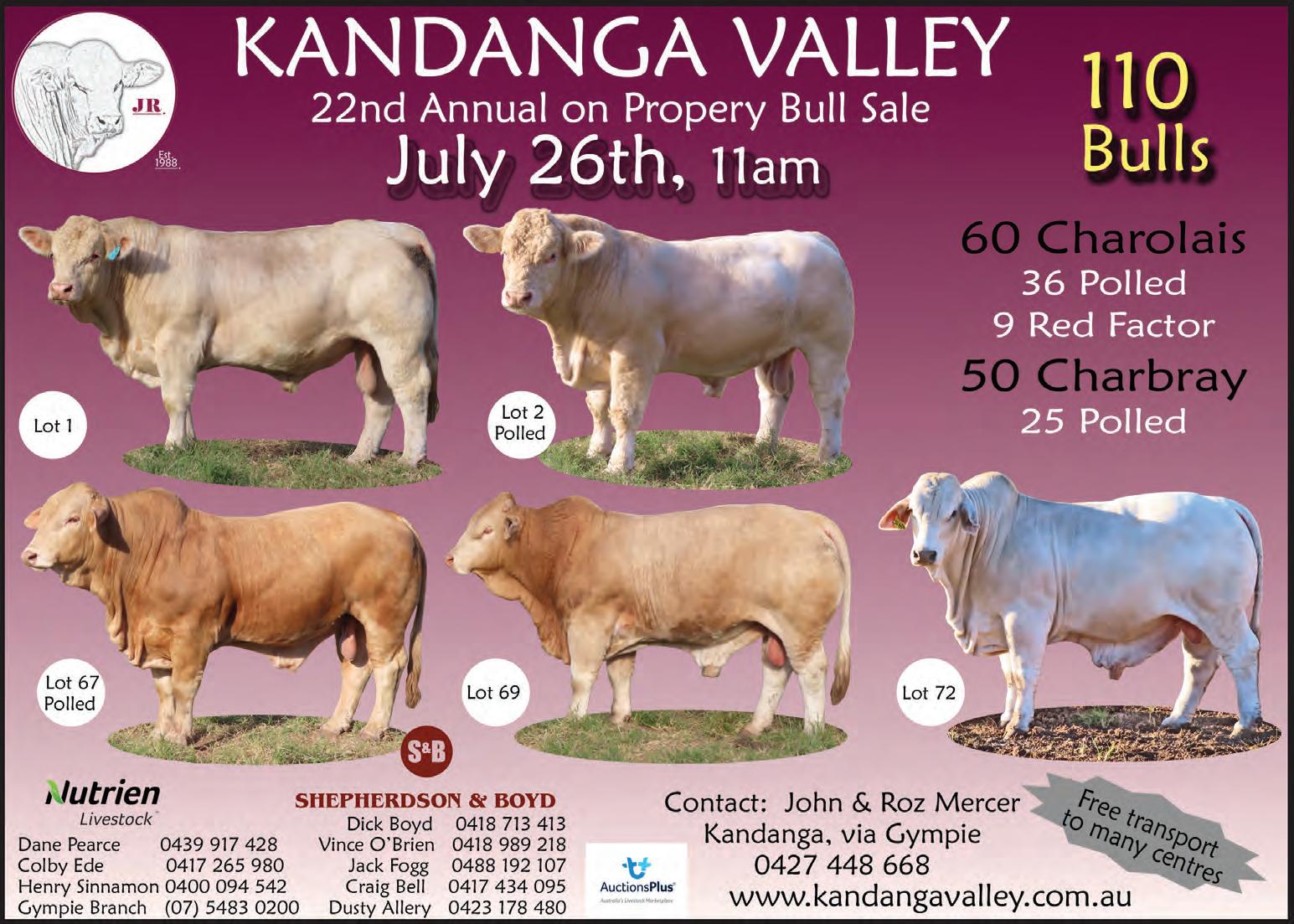
By Stacey Vogel, Cottoninfo NRM Technical Lead
When we talk about cotton farming today, we’re not just talking about yield. We’re talking about looking after our soils and natural landscapes, growing cotton sustainably and ensuring the cotton we grow meets our market’s needs. And we’re starting to talk seriously about carbon and biodiversity as genuine onfarm assets.
In February, we held a pilot workshop in Nevertire in response to clear demand from growers.
They wanted clarity. They’d heard the noise about carbon markets and biodiversity credits, but what they needed was independent information they could trust and practical insights they could act on.
What unfolded on the day was more than just a knowledge exchange. It was a glimpse into how the cotton industry can lead the national conversation on environmental markets, not follow it.
With support from CottonInfo, CRDC, the Macquarie Cotton Growers Association and partners like Regen Farmers Mutual, we designed the session to be straight-talking and solutions-focused. We had input from people working at the coalface, like Alex Quigley from Louis Dreyfus Company, Jon Welsh from CottonInfo, Dr Chioma Igwenagu from Local Land Services and myself – all working to demystify the complexities of natural capital, soil carbon and biodiversity assets.
And here’s what we learned: there’s appetite for more.
Growers are ready to talk about how to build soil carbon into their cropping systems. They’re curious about the difference between voluntary and regulated carbon markets. They want to know how native vegetation on the edges of their paddocks might be worth something – not just ecologically, but economically. They’re thinking long term and they want to get it right.
The demand for trustworthy, regionallyrelevant information is real. So are the opportunities.
That’s why CRDC is now partnering with Regen Farmers Mutual and Central West Local Lands Services to roll out a pilot Landscape Impact program in the Macquarie Valley. It’s designed to go deeper, giving 12 local growers the tools to map out their natural capital assets, understand where the environmental and economic returns overlap and take practical action as individuals and a collective.
Because, here’s the thing: if we’re going to meet global sustainability expectations, maintain market access and protect our farm businesses, we need more than good intentions. We need systems, support and shared knowledge.
The cotton industry has always been good at innovation, but this next era of leadership might not be about new machines or tech platforms. It might be about something older: the land itself.
Now’s the time to treat carbon and biodiversity not as compliance tasks or box-ticking exercises, but as real assets on the balance sheet. Ones that underpin both the resilience of our farms and the reputation of our fibre.
The momentum is here. Let’s make the most of it.
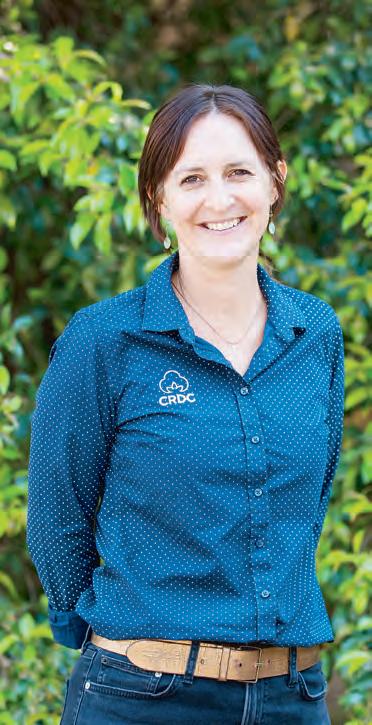
By David Littleproud, Nationals Leader and Maranoa MP
It’s been a little more than a month since the federal election, and I wanted to take the opportunity to thank the people of Maranoa for once again showing their faith in me, with reelection for another term.
Serving our wonderful electorate as its elected representative is one of the greatest honours of my life and not one I take lightly.
While the overall election result was disappointing, it is important we now refocus our attention to keeping this government to account.
The problems facing our nation before the election still exist and we must continue to fight for the best outcomes for all Australians.
Energy is the economy and The Nationals will continue to push for a technology-agnostic approach.
We’re going to have to face up to the reality that we will need nuclear energy at some point
to have a competitive economy.
This is why we will continue our pursuit to have nuclear energy included in our nation’s energy mix.
As well as fighting to secure our future energy supplies, it is also imperative we continue to advocate for regional communities and farming families, which in some parts of Australia, are doing it tough.
There have been many significant weather events across Australia in recent months, including the floods in western Queensland and the NSW Mid-North Coast, Ex-Tropical Cyclone Alfred and the ongoing drought across South Australia and Victoria.
These events have significantly impacted local communities and the agricultural sector more broadly.
That’s why The Nationals are calling on Agriculture Minister Julie Collins to revisit interest-free loans for farmers from the Regional Investment Corporation (RIC).
In 2020, the Coalition introduced a two-year interest-free period for loans up to $2 million for farmers experiencing hardship during the drought, and it helped many farmers avoid going bankrupt.
The zero per cent interest rate applied to new and existing drought loans and to refinance existing debt from a farmer’s commercial bank, to give farmers some breathing space, saving them cashflow and giving them time to restock and replant.
Our farmers are feeling significant pain and it is now time to make this loan product available for the farmers affected.
These issues are among the most pressing facing our nation at the moment, and our role in Opposition is to ensure we hold this Labor Government to account.
I thank you again for your support and vow to continue to fight hard for Maranoa’s fair share.
By Michael Guerin, Agforce CEO
Australia’s agricultural sector is often spoken of in terms of exports, trade volumes and economic value. As if that is the sum total of its worth.
But beneath the surface lies something more profound — agriculture is the bedrock of our national food security and one of the most powerful tools we have to build and sustain natural capital.
From the soils that store carbon to the wetlands protected by grazing practices or paddock-to-plate food systems complementing regenerative land stewardship, Australian farmers are delivering outcomes far beyond the farm gate.
These farmers are not just producing food — they are managing more than half of the continent’s landmass and are key custodians of biodiversity, water and ecological health.
The link between food security and environmental sustainability is not abstract — it’s immediate and inextricable. You cannot have one without the other.
But current policy settings often treat them in isolation, missing the opportunity to unlock the full potential of agriculture to deliver on both fronts.
The answer lies not in regulation for its own sake, but in policy frameworks that reward landholders for verifiable outcomes — cleaner water, healthier soils, lower emissions, increased biodiversity and reliable food production.
Farmers are ready to respond. What they need is policy that sees them as partners — not problems.
AgForce is calling for a national approach that recognises agriculture as central to the delivery of Australia’s climate, biodiversity, and food security goals.
Tools like AgCarE demonstrate how industry-led, science-based frameworks can provide the confidence governments, markets and consumers need.
But a word of caution: if we fail to act, the consequences will not just be borne by farmers. A lack of coherent policy risks undermining the very systems that underpin our food shelves, our ecosystems and our regional communities.
Food security, strong environments and resilient rural towns don’t happen by accident. They are the product of wise stewardship and supportive policy.
Now is the time to align our national vision with the realities on the ground. Let’s unlock the true potential of agriculture — not just as a producer of commodities, but as a cornerstone of Australia’s future wellbeing.
By Colin Boyce, Flynn MP
When growing up, sport was a huge part of my life and was critical to my development.
According to Health Direct, organised sport has many physical, developmental, psychological and social benefits for children.
Playing sport helps children learn to control their emotions and channel negative feelings in a positive way.
Playing sport helps children build resilience and feel better about themselves.
Parents also play a key role in developing a child’s life skills through participating in sport.
I thought it important to remind everyone that the Local Sporting Championships Program, administered by the Australian Sports Commission, is currently accepting applications.
In line with previous rounds, the program provides financial assistance for coaches, officials and competitors aged between 12 and 18 who are participating in state, national or international sporting championships.
The program objectives are:
• To provide financial support to junior sportspeople to assist with the costs associ-

ated with competing at elite or sub-elite level competition.
• To provide financial support through this pro-
gram to families so that financial considerations are not a barrier for junior sportspeople to continue participating in sport.
I have had the pleasure of meeting many of the successful applicants from previous rounds and they have informed me just how much this financial support is appreciated.
The Local Sporting Champions program provides financial assistance for coaches, officials and competitors aged 12-18 participating in state, national or international championships.
Successful applicants will receive $500-$750 towards the cost of attending their championships.
The Local Para Champions program provides financial assistance for coaches, officials and competitors aged 12-24 participating in state, national or international championships for athletes with a disability.
Successful applicants will receive $750$1000 towards the cost of attending their championships.
Applications close 31 st July 2025.
• For more information please visit the Australian Sports Commission website: www. sportaus.gov.au/grants_and_funding/local_ sporting_champions
By Sarah Dimond
Miles State High School is empowering young women to thrive in Ag.
9 female Miles State High School students attended the GrowHer Agtech program in Toowoomba on Thursday 8 May.
The Growher program empowers young women across regional Queensland, providing 450 students with the skills, mentorship, and connections to thrive in AgTech.
“MSHS is very proud to have 9 students attend the Toowoomba session,” Vikki Knight, Senior Agriculture, Vet, and Science teacher, said.
The students were nominated by their teachers to apply for a position. Many of the students had little to no experience in Agriculture and were surprised to be asked.
The program, though centred around Agriculture, is designed to develop students’ skills in tech-driven futures.
“Being such a diverse industry, the Grow Her program opens up a whole new world that students may not have realised was attached to the Agriculture sector. From designing uniforms and personal protection equipment suitable for women to wear, financing, bio technologies, marketing, mapping, aeronautics and piloting drones.
“Students have a better understanding of where and what the agriculture sector can offer them,” Ms Knight said.
The program brought together students, local mentors, industry AgTech leaders and university researchers for a dynamic, handson day of learning and innovation.
“Students got the opportunity to hear from experts in the field, and participate in workshops, including how to create and pitch their ideas effectively,” Ms Knight said.
They also had a chance to ask questions, network and expand their knowledge

with mentors.
“They were then introduced to an AgTech challenge, working collaboratively to develop innovative solutions with guidance from their assigned mentor.
“Though none of our teams won, the students were exceptional in rising to the challenges of the event.”
“This event also allowed many of the students to look into different careers. Many hadn’t realised the extent of robotics being used or designed to improve the meat industry. Or that ensuring all plants or weeds in a field could be monitored by drones or cameras from an office as far away as Melbourne.
“Farmers are not just people sitting on a tractor or a horse day in and day out. That they are technicians, geneticists, proficiency experts and more that bring us the necessities of life through Ag Tech innovations,” Ms Knight said.

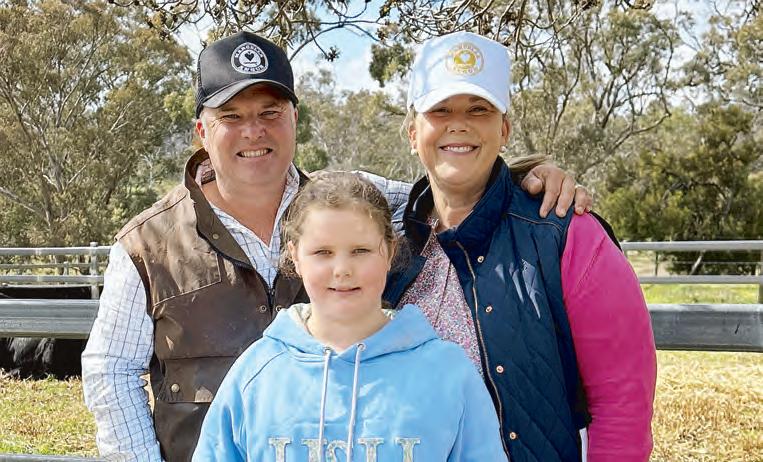
The owners collaborate in managing their operation and conduct an annual bull sale in August.


Marcella Angus is owned and operated by Rhys, Amy and Isabella Innes.
Both owners possess extensive experience in the seed-stock industry, with Amy’s parents having established Dance Angus and Rhys’s parents founding Standish Brafords.
Marcella has been part of the family since 1932 and Isabella represents the fifth generation on the property.

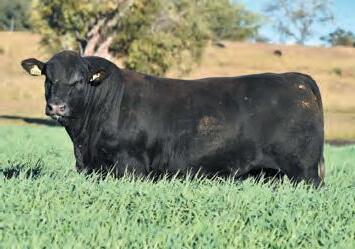
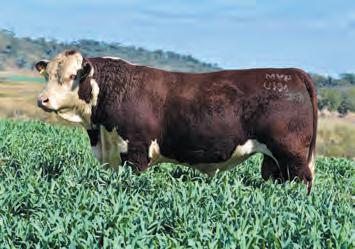

Furthermore, Marcella will host an open day on Thursday 3 July at 10am, featuring presentations on the latest advancements in animal health by representatives from Zoetis, Coopers, and Elders.
Attendees are encouraged to attend this occasion for valuable networking opportunities and to examine a selection of the Marcella herd and the 2025 sale team.


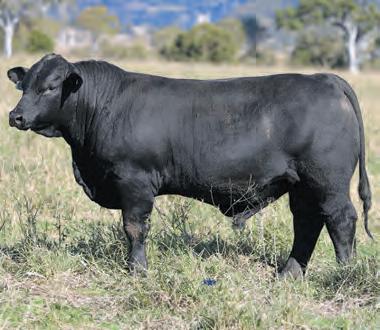




There are about three decades between the average age of an Australian farmer and Felix Ringleben is a young dryland crop grower who bought his first rural property during a challenging economic climate.
“I was 28-years-old when I first purchased this property,” Felix said.
“It’s such a difficult market to break into. Land prices have pretty much doubled in the past 10 years and interest rates are all over the place.”
Felix bought 240 hectares of land in the small farming region of Jondaryan, about 45 kilometres west of Toowoomba.
He grows a mixture of crops dependent on market conditions, from sorghum and wheat to mung beans and chickpeas.
The up-and-coming grower bought property with a First Start Loan from the Queensland Rural and Industry Development Authority (QRIDA), a Queensland Government financial assistance administrator focussed on supporting rural and regional communities.
“I’m really fortunate to have had access to this First Start Loan because it wouldn’t have been possible otherwise,” Felix said.
“I initially heard about QRIDA from one of the neighbours and he had a really positive experience with them, so I thought why not give it a go – it seemed like a really attractive option for me for purchasing my first property.”
QRIDA regional area manager for the Darling Downs Kate Dunk said the concessional loan helped aspiring primary producers such as Felix enter the agricultural industry.
“A QRIDA First Start Loan offers up to $2 million to assist people who haven’t owned a viable primary production operation, but who are super keen and want to get into primary production viably,” Kate said.
“As part of my role, I make sure people are aware of what’s available through QRIDA and what they may be eligible for. A big part of my role is getting on-farm with people and talking them through that process.”
Felix explained he built a strong working relationship with Kate over several meetings.
“I first came in contact with Kate, our regional area manager, through this loan application process and I’ve been able to see her multiple times at FarmFest and a few other events,” Felix said.
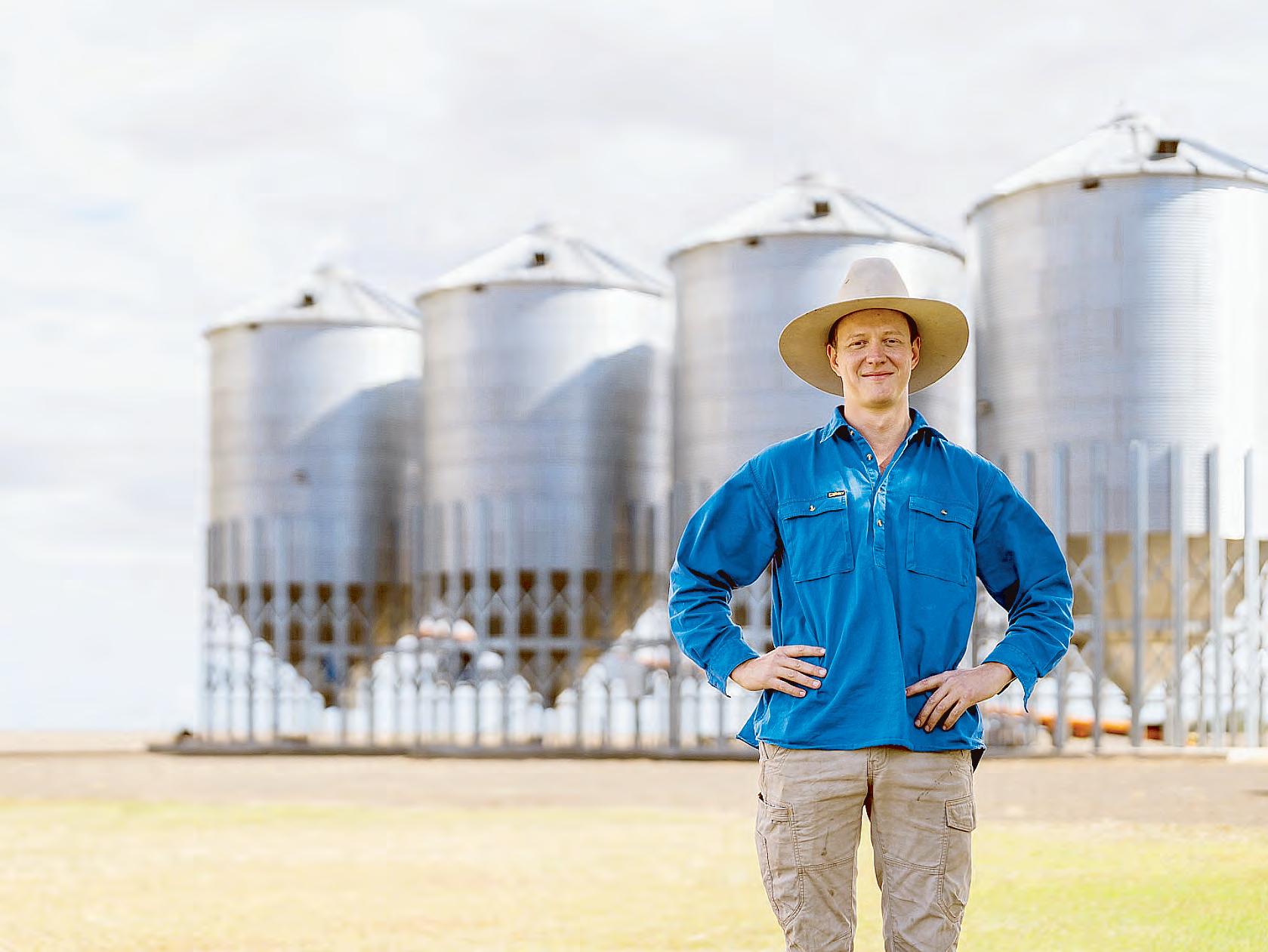
Now that Felix has gained a foothold in the rural property market, he is focussed on new ambitions.
“My initial goals are to establish myself as a farmer here and to carry out some sustainable farming practices,” Felix said.
“Kate was really helpful. The whole application process initially was a bit daunting but she made it super easy.”
“There’s something really special about being out here, on the land, and watching a plant, for example, start up as a tiny little seedling and at the end of the day you’re harvesting it and selling it – it’s just a really nice experience.”
Felix is showing the next generation of primary producers all that is possible with the Queensland Government financial assistance he has received.
“My advice to other young farmers like myself who are trying to establish themselves would be to give it a go and make the most of the great services and help that QRIDA can offer.”
For more information about how QRIDA’s First Start Loans could help you build a viable primary production operation, visit qrida.qld.gov.au or call 1800 623 946.
Queensland vegetable grower Craig Dingle has been named the 2025 Corteva Agriscience Young Grower of the Year.
He has spearheaded on-farm innovations that have boosted yields, improved shelf life and helped position his employer at the leading edge of Australian horticulture.
The 31-year-old was presented with the coveted honour at the Horticulture Awards for Excellence held in Brisbane as part of Hort Connections.
As head of Agriculture at Kalfresh, one of Australia’s leading vertically integrated fresh produce businesses, Craig oversees 300 hectares of crops across the Scenic Rim, Lockyer Valley and Southern Downs.
The judges were impressed with his commitment to innovation and global best practice, including the introduction of cushioned bin-loading trailers and in-field graders for Kalfresh’s onion harvest, which reduced handling and touch points by up to 80 per cent.
By significantly reducing bruising, the new equipment ultimately improved paddock yield, eating quality and the shelf life of the crop.
“The keys to being a successful grower are commitment, determination and a desire for continual improvement,” Mr Dingle said.
“This usually involves keeping up with the latest in technologies, travelling to see it in action, and then adapting it to suit our conditions.”
Raised on his family’s farm in Bundaberg, Craig joined Kalfresh in 2017 with a bachelor’s degree in Agribusiness and Applied Science (Agronomy) from the University of Queensland.
He has worked across multiple aspects of the business, stewarding major improvements such as laser levelling and water
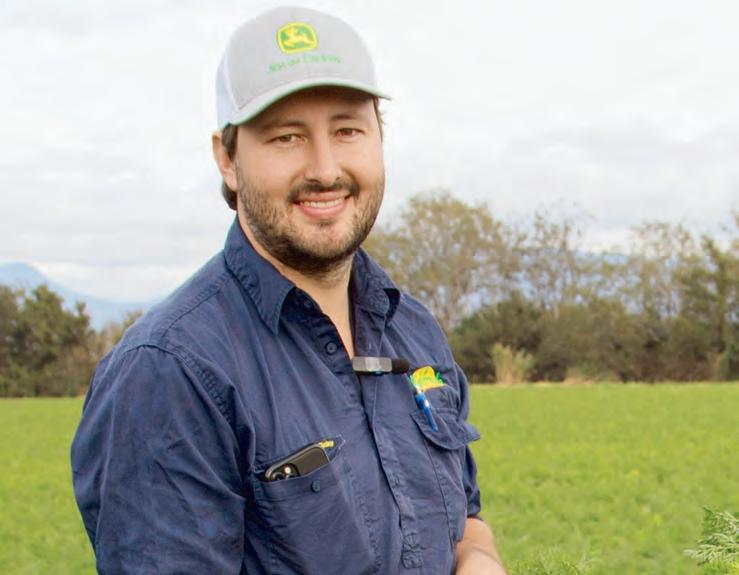
infrastructure projects.
“We’re currently keeping a keen eye on emerging weed control technologies to implement across organic and conventional farming systems and we’ll continue innovating across the business to refine a farming system that is productive, profitable and sustainable,” he said.
Each year, Australia’s emerging leaders in
horticulture are recognised at the gala event that closes the curtain on the largest horticultural trade show in the country.
A dozen nominees were in the running for the Young Grower of the Year Award, and Corteva Agriscience Marketing Manager, Nick Koch, paid tribute to the strength of the field.
“Craig is an outstanding example of the next

generation of growers who are embracing innovation and sustainability while delivering exceptional results on-farm,” Mr Koch said.
“From robotics to regenerative practices, this new wave of growers is responding to the challenges that shape what the future of farming looks like, and that is incredibly exciting for our industry and the communities it supports.
“We’re proud to support this award, which celebrates the passion and potential of young horticulturalists across Australia.
“This year’s nominees were truly impressive, not just in their technical skills but in their leadership, willingness to adapt, and commitment to the future of the industry.”
The Corteva Agriscience Young Grower of the Year Award recognises an outstanding individual aged 35 or under who demonstrates a strong commitment to horticulture and to advancing the industry through innovation and leadership.
Report Date: 12/06/2025
Saleyard: Blackall
Numbers lifted to 3,200 head of cattle for the Santa Gertrudis feature prime and store sale at Blackall this week, that include approximately 700 prime cows . Overall quality was very good and included some excellent runs of Santa and Santa infused steers and heifers that met strong buyer support. The addition of a southern exporter held prices firm to slightly easier on prime cattle with numbers lifting across the state. Light weight restocker steers sold to 464.2c with most around 419c, steers 280 to 330kg averaged 421c and medium weight steers made to 408.2c to average 364c/kg. Heavy feeder steers topped at 394.2 to average 362c/kg. A smaller number of light weight restocker heifers held firm selling to 358.2c to average 330c for the better quality lines, while feeder heifers topped at 340.2c to average 290c/kg. Heavy grown steers sold to 318.2c to average 305c, prime heifers topped at 322.2c and heavy cows to the processor made to 280.2 to average 267c/kg. A pen of PTIC cows made to 290.2c and the best of the cows and calves sold to $2350/ unit. Market reporter, Sam Hart.
Report Date: 18/06/2025
Saleyard: Casino
Numbers were down slightly for a yarding of 1,920 head. Young cattle were again in large numbers, mainly weaners, while the supply of cows was similar to last week. A big percentage of weaner cattle were in plain condition, although there was several runs of well bred cattle through the sale. The market was easier with restocker weaner steers selling 30c to 40c cheaper ranging from 326c to 420c for medium weight steers over 200kg to average 372c/kg. Restocker weaner heifers were down by 20c ranging from 212c to 338c/kg. Restocker yearling steers sold firm to 20c cheaper depending on weight and quality, ranging from 338c to 386c and heavy feeder steers sold to a top of 362c/kg.There was several pens of heavy grown steers offered in a slightly stronger market ranging from 316c to 342c, with feeders toping at 360c/kg. Grown heifers sold to 326c/kg. There was a mixed offering of cows, however the market was stronger with plain cows selling 10c to 20c dearer, while heavy cows were 6c to 10c/kg dearer. Medium weight 2 score cows sold from 218c to 258c, while 3 scores averaged 256c and 4 score cows sold from 265c to 285c/kg. Report by Doug Robson.
Report Date: 18/06/2025
Saleyard: Dalby
Interim Report. There was a small increase in supply to 5,565 head at Dalby. Included in the lineup this week were 469 head from far Western Queensland and 220 from New South Wales with the remainder of 4,876 head from the local supply areas. Southern export buyers were included in the lineup along with the regular feed and trade operators. Heavy weight yearling steers to feed at the time of this interim report have experienced very little change in price. Heavy weight yearling heifers to feed averaged 6c/kg less. A few bullocks and grown heifers to export processors sold to a dearer trend. All classes of cows were in demand and sold to a market 7c to 14c/kg better. Heavy weight yearling steers to feed sold to 400c to av-
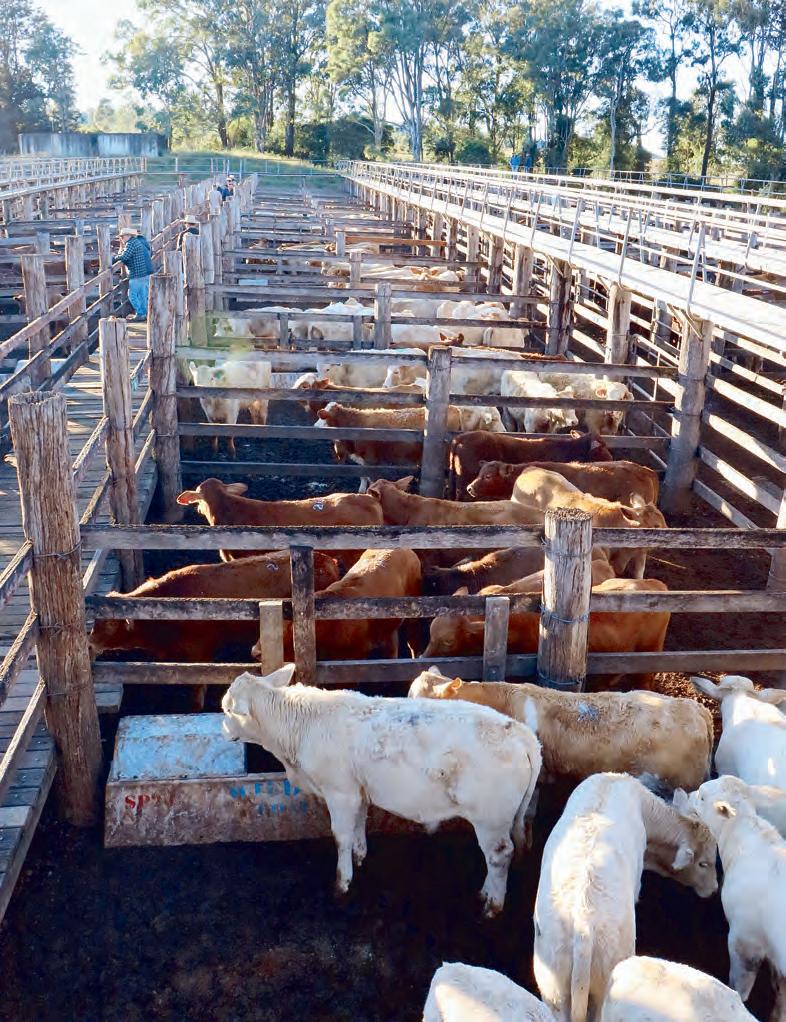
erage 381c/kg. Medium weight yearling heifers to feed made to 350c to average 310c/kg. Heavy weight yearling heifers to feed averaged 323c and sold to 356c/kg. A handful of bullocks made to 379c and grown heifers sold to 369c/kg. Medium weight 2 score cows made to 266c and averaged 259c/kg. Heavy weight 3 score cows averaged 279c and best of the heavy weight cows made to 320c to average 301c/kg. Heavy weight bulls made to 316c/kg. Market Reporter Trevor Hess. Report Date: 17/06/2025
Saleyard: Roma
With increased numbers Roma Agents yarded 8232 head. All the regular processors feedlotters and backgrounders present and active. The market solid with finished bullocks well sort af-
ter as well as cows which improved on last sale. Another quality yarding of cattle penned. Yearling steers under 200kg topped 422c/kg. Yearling steers 200 to 280kg sold from 306c to 470c/ kg. Yearling steers 280 to 330kg with the majority making to 432c to average 385c/kg. Yearling steers 330 to 400kg could not maintain the levels of last sale to make 420c/kg. Yearling steers 400 to 480kg made to 400c/kg to feed. Yearling steers over 480kg topped 388c/kg. Yearling heifers 200 to 280kg sold to 362c/kg to restockers. Yearling heifers 280 to 330kg with the majority selling from 218c to 364c/kg for the better lines. Yearling heifers 330 to 400kg made to 374c to average 320c/kg to restockers. Yearling heifers 400 to 480kg topped 328c/kg to feed. A small number of 400 to 500kg grown steers made to 402c to feed and 312c/kg to
processors. Grown steers 500 to 600kg improved and sold to 386c to processors and 390ckg to feed. Bullocks over 600kg to 383c/kg to processors. Majority of heifers over 540kg topped 374c/kg.to average 337c/kg. A very large yarding of well conditioned cows penned which improved almost 10c/ kg on last sale. The 2 score cows sold from 194c to 230c to restockers and 286c/kg to processors. The 3 score cows to 320c to average 297c/kg to processors. Young bulls to 450kg to 362c/kg. Bulls 450 to 600kg made to 288c/kg. Bulls over 600kg made to 310c and a pen of Euro bulls to 331c/kg. Market Reporter David Friend Report Date: 17/06/2025
Saleyard: Toowoomba
The supply of stock at Toowoomba reduced to 98 head of mixed quality cattle. Most of the regular buyers were in attendance along with a large panel of onlookers. The better bred lines of yearling steers and heifers sold to prices similar to last week and any price gains were due to the improvement in the quality presented. Yearling steers in the 200-280kg range to restockers sold to 370c and averaged 315c/kg. Yearling steers over 280kg to feed made 338c to average 309c/ kg. Yearling steers to feed for the domestic market sold to 350c and averaged 333c/kg. Heavy yearling steers to feed sold to an isolated 254c/kg. Yearling heifers in the 200-280kg range to background averaged 255c and sold to 316c/kg. Yearling heifers over 330kg to feed made 282c to average 268c with those to processors at 244c/kg. A small sample of heavy cows to processors sold to 180c/kg. Medium weight bulls to feed made 207c with heavy bulls to processors at 170c/kg. Market Reporter Errol Luck.
Report Date: 17/06/2025
Saleyard: Warwick
There was a slight drop in supply to 1,131 head at Warwick. All the regular processors were in attendance however several failed to operate on a plainer offering of cows which sold to easier trends. Heavy feeder steers and heifers were well supplied and sold to dearer prices along with the better quality restockers lines of yearlings. Light weight yearling steers to restockers sold to 426c/ kg. Yearling steers in the 280-330kg range to restockers sold to 438c with those to feeder operators at 448c to average 437c/kg. Yearling steers to feed for the domestic market made 446c to average 393c/kg. Heavy yearling steers to feed sold to 434c and averaged from 381c to 387c/ kg. Light weight yearling heifers to background made 338c to average 307c/kg. Yearling heifers in the 280-330kg range to feed sold to 360c/ kg. Medium weight yearling heifers to feed made 348c to average 328c/kg. Heavy yearling heifers to feed averaged 308c and sold to 340c/kg. Grown steers to feed sold to 374c and averaged 347c/kg. Heavy high yielding grown steers sold to an isolated 383c/kg. Grown heifers to feed made 310c to average 290c/kg. Grown heifers to processors made 348c to average 332c/kg. Light weight plain conditioned cows to processors made 255c to average 218c/kg. Score 3 heavy cows to processors made 271c to average 259c with the best heavy cows at 290c to average 281c/kg. Heavy bulls to processors made 322c to average 290c/kg. Market Reporter Errol Luck.



From humble beginnings to a respected name in the Angus industry, Sara Park Angus has grown on a foundation of strong cattle, solid relationships and a clear breeding philosophy that still guides the family today.
The story began in the late 1990s when Herb Duddy offered the first Sara Park bulls at Bonalbo for just $900 a head.
What started as a modest offering has grown into something far more enduring, with some of those early buyers still attending the annual sale - a quiet testament to cattle that last and relationships that hold.
The family’s approach remains the same: breed bulls that do their job in the paddock, stay sound and breed on.
Longevity, fertility and temperament have underpinned the breeding program since the first Naranghi females joined the herd.
Sara Park bulls are used in the commercial herd with their progeny consistently selling to strong averages at the saleyards, a real validation of the breeding program from both stud and commercial perspectives.
“They need to work, last and leave a line of good calves behind them,” says Herb.
Today, the stud operates from “The Downs” in Glen Innes — a property with deep personal meaning for Herb, who spent nearly 30 years managing Bolivia Station for previous owner Frank McAlary.
When The Downs went on the market in 2023, Herb bought it, bringing the family’s cattle journey full circle.
The next generation is now firmly involved, with Jeff and Robert establishing Duddy Angus, built on Sara Park genetics and the same commitment to breeding balanced, functional bulls that
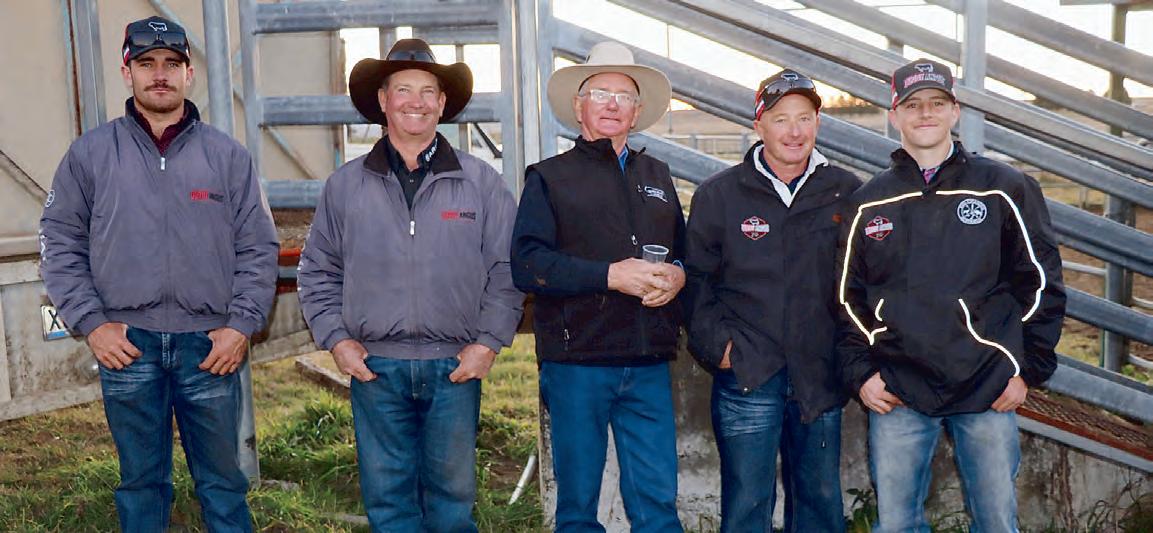
add real value in commercial herds.
Together, the family is strengthening and expanding their offering while staying true to their core values.
Longevity and structural soundness remain central - traits that keep commercial cattlemen coming back.
The bulls are known for softness, even temperament and consistency. They handle diverse environments, wean strong calves and hold up
season after season.
“We work hard on breeding sound, soft, eventempered bulls that thrive across a range of conditions,” says Jeff. “We want them to add value to the purchaser’s program.”
The buyer base continues to grow, something the family is proud of. “We get a lot of satisfaction from buyers returning year after year,” says Robert. “That tells us we’re breeding cattle that deliver in the real world.”

As the stud sale approaches this August, it’s not just about selling bulls, it’s about continuing a story that started decades ago, built on loyalty, stock sense and cattle that do the job.
The 2025 Sara Park and Duddy Angus bull sale will be held on-property at “The Downs,” Glen Innes on Friday, 1 August.
An open day is set for Saturday, 12 July, with inspections welcome anytime.






















































What do you get when you blend 101 years of farming know-how held by fifth generation veggie farmers, the Moffat family, a deep love of the land and a dash of sweet, creamy, carroty creativity?
A one-of-a-kind Carrot Ice Cream that has become a must-try treat at the Scenic Rim’s Winter Harvest Festival, the finale event for the famous Eat Local Month.
For 101 years, the Moffatt family has tilled the rich, alluvial soils of Tarome in the Scenic Rim, growing the carrots, onions, pumpkins, and celery that grace tables across Australia and beyond.
Today, the fifth generation keeps that legacy alive — honouring their roots while delighting festival-goers with their now-famous Carrot Ice Cream created in collaboration with Lick.
“The Carrot Ice Cream is our tribute to the generations before us and to the community that has supported us,” said Steve Moffatt, who, along with brothers John and Mitchell, heads up Moffatt Fresh Produce.
“The ice cream is just one small way we celebrate our roots and share a piece of our story with festival-goers.”
The famous treat is only available at the Winter Harvest Festival, which this year was held on June 28 in the stunning village of Kalbar.
The Moffatts’ success didn’t happen by accident. Their great-grandfather Robert Moffatt picked Tarome for its strategic location near Brisbane markets and ports — an insight that continues to pay dividends today.
“They were thinking about the future even then,” said Steve. “That’s the legacy they left us — solid ground to stand on and a community to grow with.”
While the Moffatts’ crops feed millions, they remain a family business at heart.
“We grow it, we pick it, we pack it, we freight it,” Steve explained. “There’s not one part of the business that a family member doesn’t touch.”
It’s this unwavering commitment — to family, community, and quality — that makes their story stand out. It’s not just another tale of generational farming; it’s a celebration of resilience, innovation, and the – sometimes sweet and deliciousrewards of hard work.
Carrot Capital – Time to Get Carrot-Away!
• The Scenic Rim proudly claims the title of Australia’s Carrot Capital, with local farmers growing a whopping 600 million carrots every year. Laid end to end, that’s enough to circle the globe 2.5 times!
• Carrots are overachievers in the field, taking just 100 to 120 days to grow from seed to crunchy perfection.
• Packed with beta-carotene, they’re a vitaminrich treat for your eyes — but contrary to wartime myths, they won’t help you see in the dark! (That rumour was started during WWII to cover up the Allies’ use of radar technology.)
• Carrots aren’t just orange — they can be red, purple, yellow or even white. Still, orange reigns supreme.
• Eat too many and you might just turn into a human carrot! (Legend has it that Steve Jobs once turned orange from a carrot-only diet!)
• With 88 per cent water, carrots are a hydration hero — perfect for a snack that’s both sweet and refreshing.
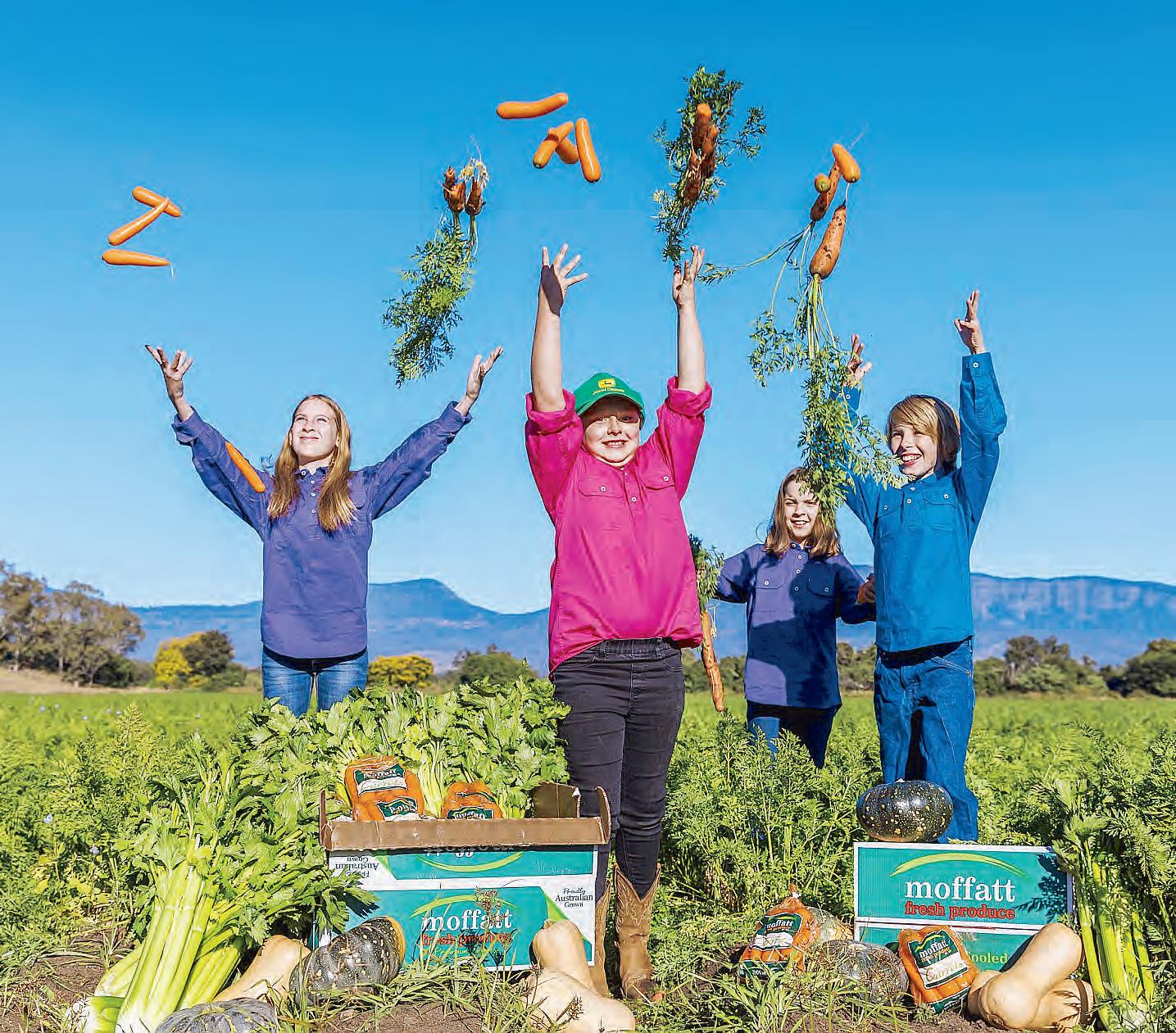
Crunchy Carrot Facts:
• Carrot Origins: Carrots were first cultivated over 5,000 years ago in regions that are now Afghanistan and Iran.
• Colorful History: Before the 17th century, carrots were commonly purple, white, or yellow. The orange variety was developed in the Netherlands as a tribute to the House of Orange.
• Water Content: Carrots are composed of about 88pc water, making them a hydrating snack.
• Nutritional Powerhouse: A single mediumsized carrot provides about 25 calories and is an excellent source of vitamin A, essential for good vision and immune function.
• Record-Breakers: The world’s longest carrot measured more than 20 feet and the heaviest weighed nearly 19 pounds!
So, let’s celebrate the humble carrot—rich in history, nutrition, and colour.
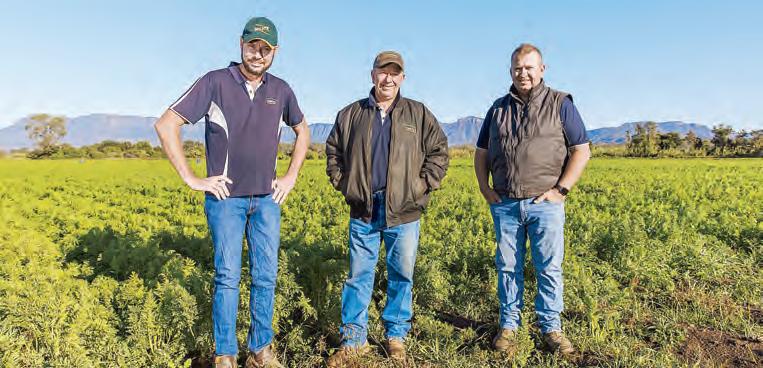


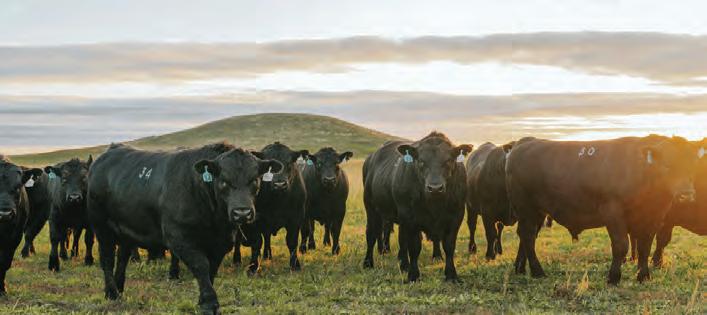
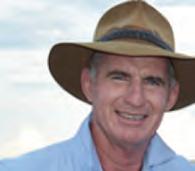
It is June and in a well-grown Central Queensland chickpea crop flowers are starting to appear. Thanks to Alex Doyle, a great young agronomist in Central QLD, we have a photo of one.
Is it unusual for flowers to appear? The answer is probably no, with the knowledge that heat in this particular part of the world is now around that 1,000 CDD (cooling degree days) mark for these sorts of crops.
When mentioning degree days or heat units in the plant world, be aware that this is simply a measure of heat needed or thermal time accrued for a crop to reach a certain point - such as flowering - in its growing cycle.
Plenty of people and industries, like the cotton industry and myself for mungbeans or chickpeas, use the ’growing degree days’ or GDD measurement for possible flowering dates.
It is particularly useful in the pulse crop agronomy world to calculate a physiological maturity date and especially handy for mungs, where it can help assess a late time of sowing risk levels.
So, how can you do a rough calculation for your chickpea crops, and is there any in-crop reaction that you can do to avoid issues?
The short answer is no. Only the time of sowing is recognised for plants going through their growth cycles using thermal times.
It all starts with knowing the base or lowest temperature for that particular species of plant or crop, where all development - the time from germination to physiological maturity - stops.
For chickpeas this base temperature is at 0 degrees Celsius and in reality I do have some farmer
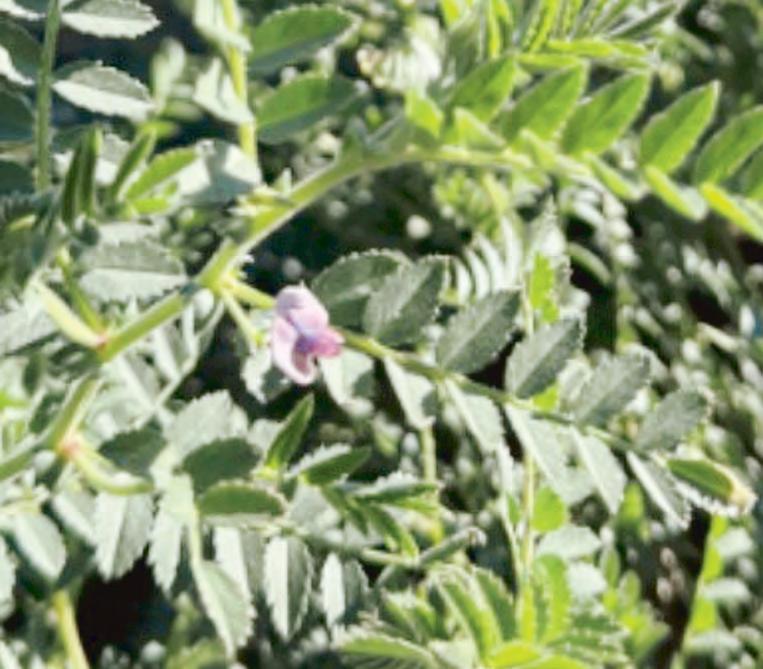
friends in this cooler eastern Darling Downs area who prefer not to plant chickpeas until July or even August.
As an aside, mungbeans and other summer crops have their base temperature measured at 10 degrees Celsius.
Planting much earlier than that results in very slow germination and emergence, with virtually no above-ground growth of the plant for weeks.
Even north- or south-facing slopes can interact with this heat accumulation, I am told.
Later planting suits a farmer’s rotation, and while perhaps they may not achieve the big four to five tonne-per-hectare yields, the benefits in the farming system are very positive in return.
My rough averaging calculation method is to take a daily max temperature and add the minimum daily temperature to it, divide this by two
and then subtract the base temperature of the crop you are growing. For chickpeas this base temperature is, again, 0 degrees.
For example, on a particular day with a maximum temperature of 35 degrees and night time minimum of 15 degrees the formula calculates: 35 + 15 = 50; 50 / 2 = 25. Take the chickpea base temperature of 0 and this leaves you with 25 degree days being accumulated on that particular day. Then, divide your 1,000 CDD by 25 and you get 40 days that the crop has been in the ground and growing to reach this initial part of flowering.
Yes, I know it’s rough and certainly more accurate dates and temps would be possible if you calculated each day separately and added them up.
So, possibly the crop in this picture was planted 40 days ago - give or take a few.
What else will this chickpea crop go through with its single flower currently present, I wonder?
Like a lot of crops, some weather extremes do not let them flower or pod successfully.
In the case of chickpeas it is crucial to have the average daily temperature for flowers or even seed remain above the point where the plant would abort: 15 degrees.
In other words, you could have a heap of flowers and even some early seed pod development - then a sudden cold snap occurs with average temperatures falling below 15 degrees Celsius, and all your flowers abort because of sterile pollen.
Everything then needs to warm up again above a daily average of 15 degrees for more true flowers to occur.
Of course, this re-flowering and pod production event needs moisture in the soil and in those dryer years - especially for double cropped country - that is not always possible.
Like a lot of our crops, the best time of sowing decisions can only be done if the weather plays its part. Unfortunately all we have to go on is our farming history and guessing your future weather patterns over the next four months.
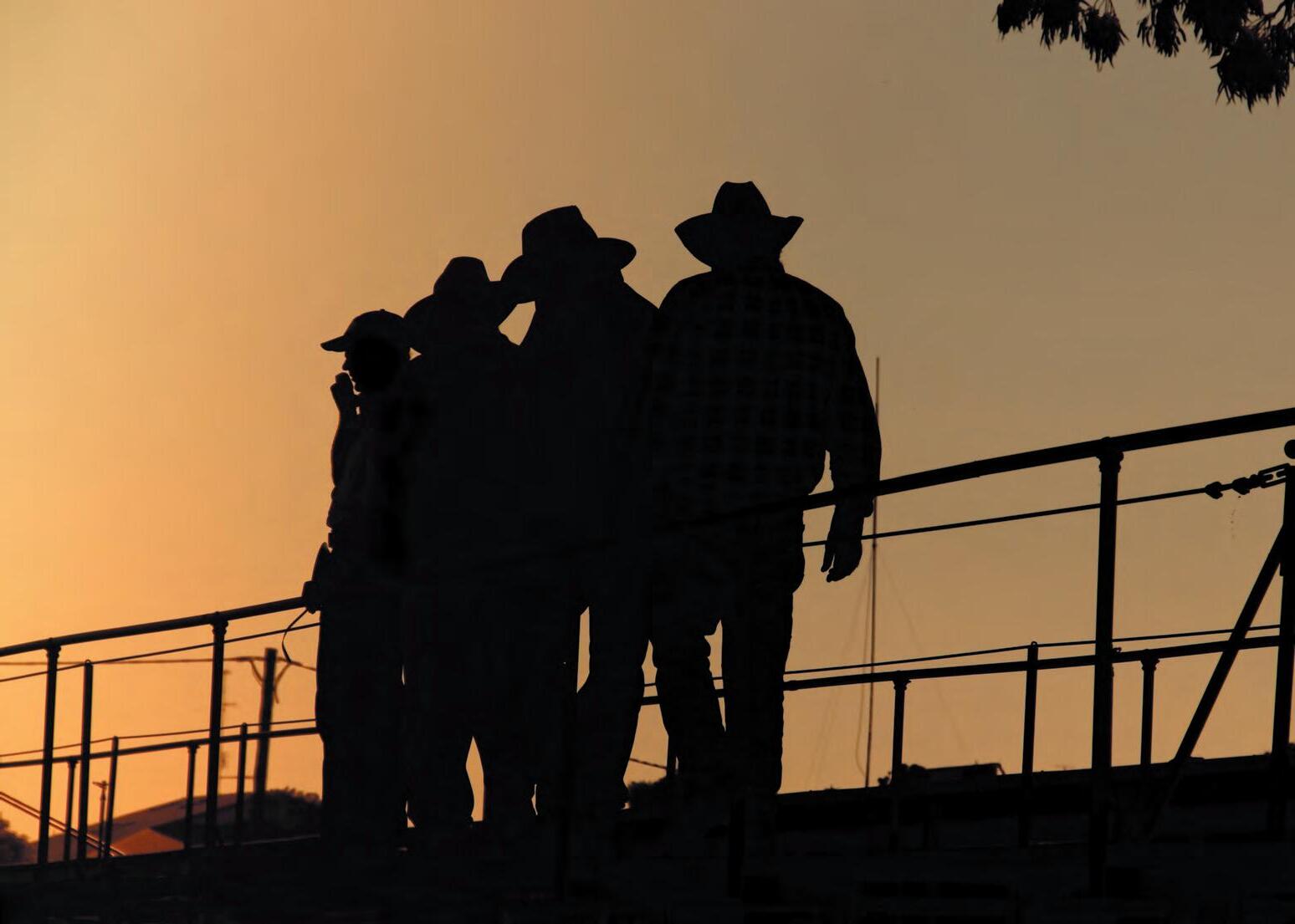
Do you have a story to tell, new projects to talk about or just simply highlight an achievement....
Fiona Gowers enquiries, contact our team.
Jane Lowe 0408 488 609
E:
Daniel Pelcl 0408 956 830
E:
Sharon Jones
P: 07 4182 0451
E:










The third national Wagyu sale, featuring a stellar lineup of 116 bulls, will take place at the Roma saleyards starting at 11am on Thursday, 31 July.
This year’s event will showcase 116 bulls and 50 females comprising PTIC heifers and cows and cows and calves in the top one to 30 per cent of breed data and offered by 13 studs.
Sale co-agent Harvey Weyman-Jones expressed his satisfaction with the quality of the animals vendors had selected.
He highlighted the stringent minimum standard of being in the top 20pc of the breed for either an Index or a major carcase trait, noting that half of this year’s catalogue even fell within the top 10pc.
Mr Weyman-Jones said he believed there were bulls suitable for top stud breeders, while nearly the entire catalogue would appeal to first-cross breeders.
He also anticipates strong interest in the PTIC heifers from Hamilton Park, which range from the top five per cent to 20pc in breed data.
For those unable to attend in person, online bidding and live streaming will be available through the AuctionsPlus platform.
On-property inspections of individual drafts can be arranged with the respective vendors at any time.
All lots will be available for inspection in the selling pens at the saleyards from the afternoon of Wednesday, 31 July.
Leading into the sale, on Wednesday afternoon and early evening, inspecting buyers, agents and vendors can enjoy Wagyu tasting plates and drinks at the saleyards.
Additional Wagyu tastings will be offered to all attendees on the morning of the sale.
The sale catalogue will be available for viewing
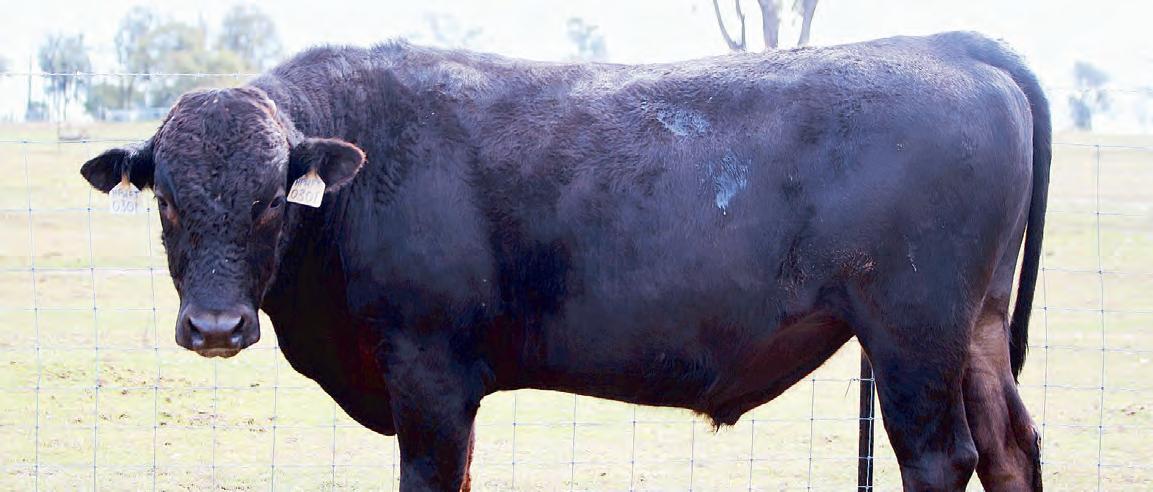
on the Elders and AuctionsPlus websites. Printed copies can be requested via post by contacting Harvey Weyman-Jones or Andrew Meara.
Major vendors for the sale are Hamilton Park, Wallumbilla: 17 bulls and selection of PTIC heifers and cows. We Pack, Kenilworth: six bulls and two PTIC cows and four cows and calves Carnana Station, Coolatai, NSW: 12 bulls, Shokunin, Albury, NSW: nine bulls, Geneflow, Deniliquin, NSW: seven bulls, Rocala, Tamworth, NSW: 19 bulls, Miku, Victoria and Queensland: 13 bulls and 37 females, Yarraford, Glen Innes, NSW:
14 bulls, Macquarie, Leyburn, Queensland: nine bulls and two females and Shinshu, Yarraman, Qld have six bulls.
All live lots, sires and dams chosen for the sale are registered as fullbloods with the Australian Wagyu Association. All bulls offered have passed a semen fertility test by a registered veterinary surgeon and a semen evaluation certificate will be provided.
All bulls are guaranteed breeders for six months from the sale date or until they reach 24 months of age, whichever is later.
Claims regarding fertility must be made to the vendor within six months of the sale date and before the animal enters a quarantine area (excluding the vendor’s property).
Claims must include a veterinary certificate clearly stating the basis of the claim. The guarantee does not cover infertility resulting from injury or disease occurring after the sale.
For more information, please contact the joint sale agents Harvey Weyman-Jones of Weyman Jones & Co at 0414 941 788 or Andrew Meara of Elders at 0427 210634.















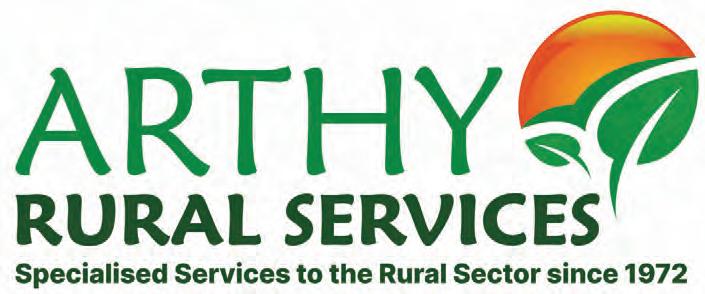


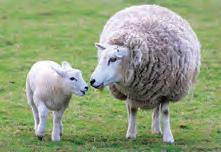


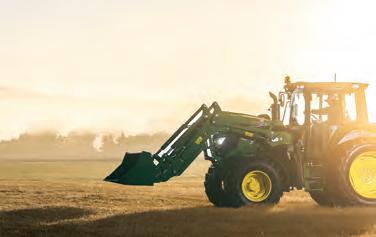









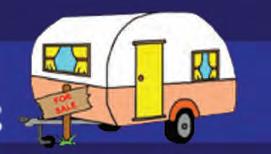
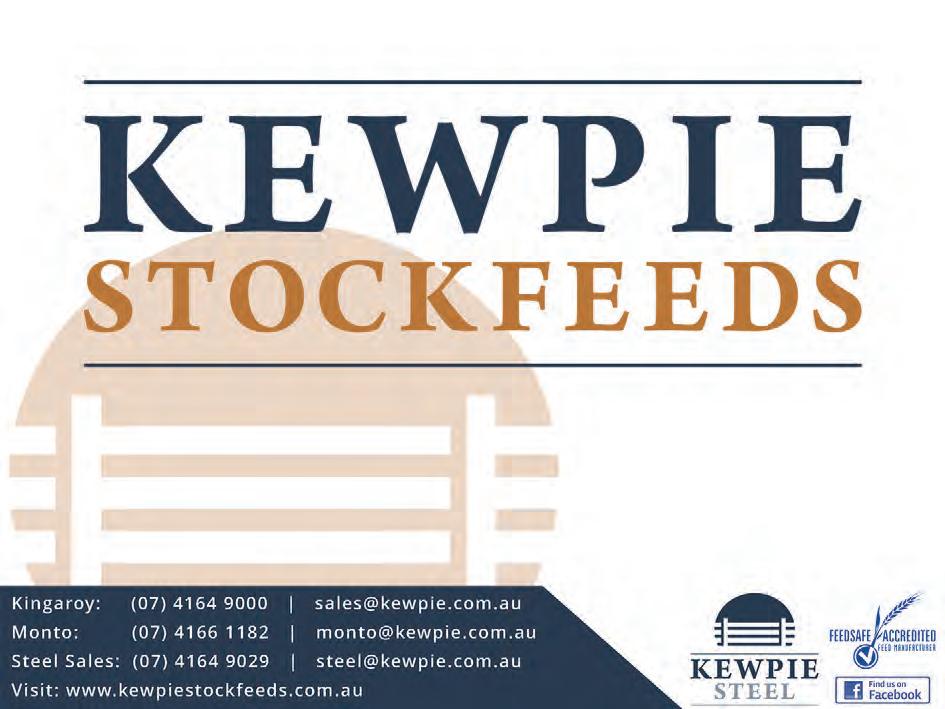






















By Jessica McGrath
Young landcare enthusiasts recently assisted with a South Burnett farm’s national regeneration pilot project.
A group of more than 10 South Burnett Junior Landcare members helped the Crawford farmer plant 150 native Eucalyptus varieties on Sunday, 18 May.
Farmers Brian and Margaret O’Reilly are excited to see the pilot project and their dream take place.
“Every tree they put in is going well,” he reported.
The cattle farmer and former agricultural teacher shared that the group of young landcare members were “fantastic”
“I want to give the kids an opportunity to do something… and have the opportunity to return later and see the trees grown,” Mr O’Reilly said.
“It’s a dream [for our property] to be available for field studies.”
The O’Reillys are also thankful for the “fantastic” support from the South Burnett Grazing Network and its members who shared their local knowledge to assist with their pilot project.
Mr and Mrs O’Reilly bought the 70 acre Crawford cattle property in 2009, working on the land on spare weekends and the school holidays.
By the end of 2016, the O’Reilly’s retired from their Brisbane jobs and moved to the area.
Mr O’Reilly taught at St Josephs Nudgee College for 35 years, and has a horticulture degree in open space management and a diploma in agriculture studies.
The 2019 drought saw the couple rethink their cattle numbers and focus more on the land’s sustainability, running through half as many cattle.
They chose their Crawford property specifically for its landscape elements, the land’s contours and its soil type.
“What we’re doing now was a dream we wanted to do,” he said.
“When we came here, we saw the place as a blank canvas, the fencing was non-existent.
“We put in new fences and set it up for cell grazing.”
The Crawford property is one of 11 Agriculture Biodiversity Stewardship pilot projects across Australia, and only one of two in Queensland. The project is federally funded, and run by the Australian National University.
The O’Reillys started the three-year pilot project in late 2023, which will be completed by October 2026.
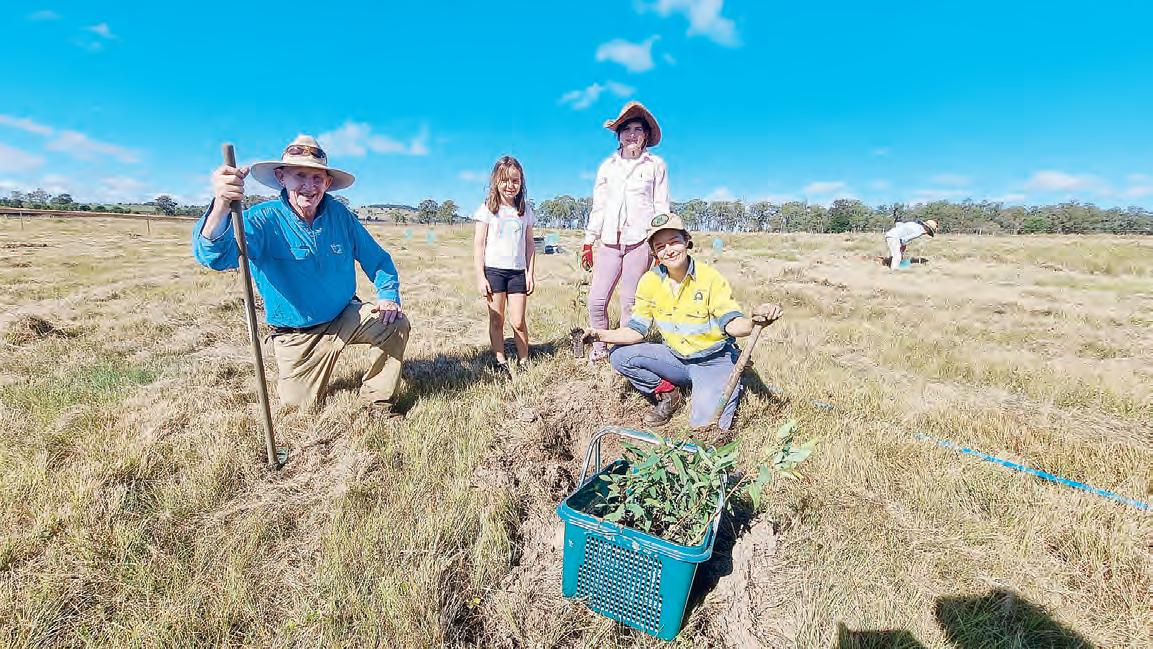
“We are one of two doing regeneration and revegetation projects,” he said.
The university’s researchers visit the South Burnett farm periodically, identifying and monitoring changes to different bird, insect, wildlife and vegetation species.
“[The researchers] saw a big increase -they were very surprised by what we had here,” Mr O’Reilly said.
The researchers will monitor how soil types change, and how encouraging wildlife impacts the regeneration of the land and whether it becomes more “economically usable”
“[The pilot] included us having to fence off a whole lot of land, with lanes the cattle can still walk down,” Mr O’Reilly said.
The beef cattle are rotated through the fenced paddocks.
“We’re trying to keep a balance with our cell grazing, doing all rotational grazing, it’s gentle on the land,” he said.
“We’re now running virtually 100 per cent grass cover, when we [first] came here it was barely 50 per cent.”
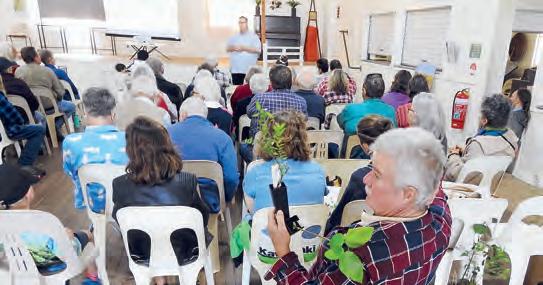
The May planting session added to the total of just under 300 trees planted on the South Burnett property so far. Another planting session is planned for later this year.
“We’ve gone with three species of eucalypt that we’re having a lot of success with, it is indigenous to this area and grown for us by Gympie Landcare,” Mr O’Reilly said.
The property is fenced out into different zones, which assists with documenting the project.
“Everything we’re doing is a requirement of the pilot project,” he said.
They are also planting the trees in a way that establishes wildlife corridors through the property, building on the small amount of already present trees.
“We wanted to create shade for animals to camp under,” he said.
Mr O’Reilly explained that once the trees are established, the cattle are able to rotate through the paddocks with trees under careful monitoring.
“The gentle movement of the cattle helps stimulate the growth of the trees,” he said.

By Sarah Dimond
The Kogan Braemar Wambo Catchment Group hosted a Bushfoods and Biodiversity of the Western Downs event with talks presented by Kemp Killerby, founder of Flora 4 Fauna – Australia.
On Saturday 7 June, from 10am to 12pm at the Kogan Community Centre, there were bushfood talks on their roles in nature and culture, a tasting of bushfoods and edible native species, easy plant identification tips and how to grow them at home, and a native plant sale.
The community attended in droves, with over 78 Western Downs locals attending.
People were very interested, asking questions and writing notes.
“It was a wonderful celebration of the region’s rich native plant heritage,“ Kemp Killerby, founder of Flora 4 Fauna – Australia, said.
“We were honoured to be able to share our insights into the social, cultural and ecological value of Australia’s native bushfoods.“
Flora 4 Fauna – Australia was very thankful to the Kogan Braemar Wambo Catchment Group for hosting the event.
“A sincere thank you to everyone who came along. Your curiosity, support, and passion for local biodiversity made the day a true success.“
The farmer added that the grass is only usually green under trees, so more trees will give more shade for the cattle, as well as healthier grass.
Another problem the project is addressing is the water which runs down into the O’Reilly property from a neighbouring piggery.
“We allow the water to run down through the plantings… and by the time it gets down to the bottom dam it is pretty clean,” he said.
Even though the pilot project is incomplete, the O’Reilly’s are already confident in their land’s sustainability regardless of the season.
“We believe we can be totally sustainable in good times and bad times with the cattle,” he said.
Both Mr and Mrs O’Reilly are in their 80s and realise they will not get to enjoy sitting under a lot of the new trees when they are fully grown. However, they hope that whoever inherits the place appreciates the property they are investing in.
“It’s a nice place, and we’re very happy here,” he said.
“We’re enjoying the trees and the birds… it’s a reason to get up, to keep working and keep fit.”

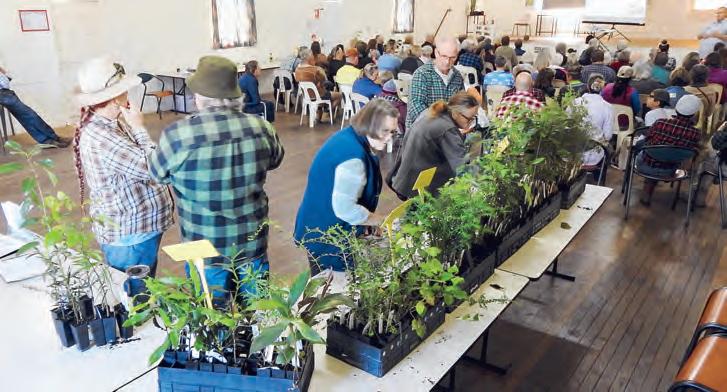
•1.2M X 2.2M •8 RAIL-GRADUATED
•2.5MM OD-GALV PIPE
•PINS INCLUDED PACK BUYS - 93-$90EA LOOSE BUYS-$100EA
•GOAT PANEL GATE-$250
GATES - GALV
•10’ - 3M - MESH -$120
•12’ - 3.6M- MESH-$140
•14’ - 4.2M- MESH-$160
•10’ - 3M- 5 BAR LIGHT-$140
•12’ - 3.6M- 5 BAR LIGHT-$160
•14’- 4.2M- 5 BAR LIGHT-$190
•12’ - 3.6M- 5 BAR HEAVY-$180
•14’ - 4.2M- 5 BAR HEAVY-$210
BARBED WIRE
•2.5MM - IOWA - 400M ROLLS
PALLET BUYS - 27 ROLLS-$125EA SINGLE ROLLS-$135EA
•1.8MM - HIT - 500M ROLLS
PALLET BUYS - 36 ROLLS-$115EA
SINGLE ROLLS-$125EA
FENCE POSTS PICKETS
•165CM - 5’6”BLACK - HEAVY -$7.50
•180CM - 6’ BLACK - HEAVY-$8.50
•180CM - 6’ HDG - HEAVY-$9.00
CATTLE CABLE
•8.2MM - 7 STRAND GALV
•400M X 150 KG- $550
HINGED JOINT/ FIELD FENCE FIXED KNOT
CATTLE GRID HEAVY
•4M X 2M - 800 KG -$2700 CONCRETE ABUTMENTS
• 4M - 3000KG / PAIR -$1800 GALV GRIPMESH WALKWAY
•3000 X 600 -$200
•3000 X 750-$220
RHS - 2ND - GRADE EA/LEN
6 - 8M - 125 X 125 X 4 - GALV-$160 STRAINER POSTS
•2.4M -80NB X 4MM - GALV-$65
•3M -80NB X4MM - GALV-$75
•2.4M-80NB X 4MM - BLACK- $60
•2.9M -80NB X 5MM - PTD-$70
•3M -80NB X 5MM - PTD-$75 BUNDLES 19 LENS ONLY BLACK RUSTY
488 - 3100MM

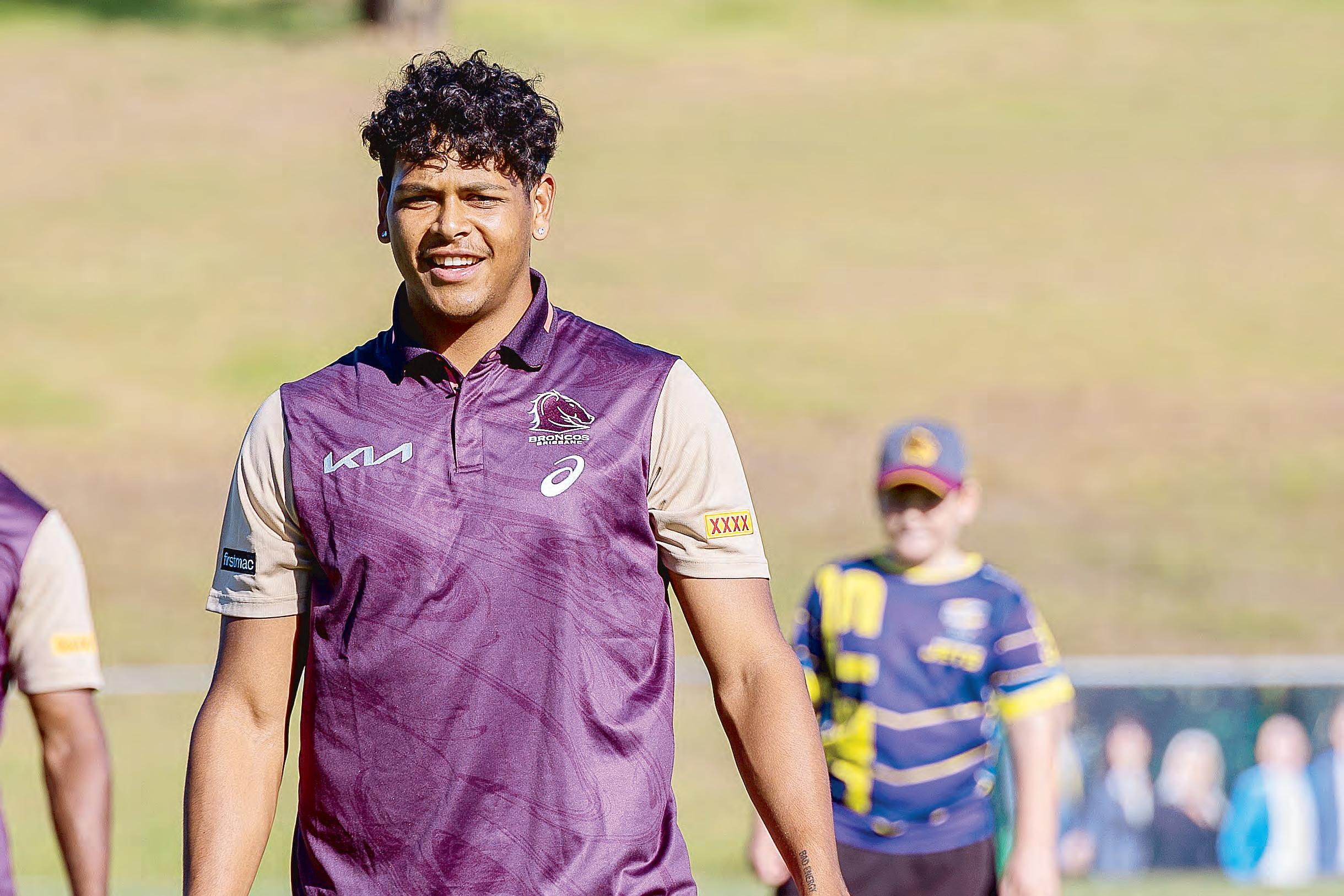
By Joel Gould, AAP
Selwyn Cobbo has been backed to regain his Brisbane jersey but whatever unfolds for the enigmatic outside back in the coming weeks will have short and long-term ramifications for the club.
Off-contract Cobbo’s situation is a fascinating one not just for what his recent demotion to Queensland Cup means for this season, but for beyond.
The Queensland and Australia representative was hopeful of extending his stay at the Broncos, but with no offer on the table and with salary cap constraints at the club that is looking unlikely.
The Broncos are also on the cusp of finalising a one-year extension for captain Adam Reynolds
and a new multi-year deal for strike centre Kotoni Staggs.
The fact remains Cobbo, when in form, is a valuable asset for any club with his ability to play fullback, wing and centre with class and power.
He has experienced ups and downs before and has shown he can be a match winner on many occasions.
Cobbo, 23, hails from Cherbourg and entered the NRL via the Gympie Devils.
He was dropped by the Broncos and replaced by winger Josiah Karapani for the 44-14 win over Gold Coast.
Brisbane winger Jesse Arthars said Cobbo’s axing meant all of the outside backs were put on


notice by coach Michael Maguire.
“Madge (Maguire) always talks about how you’re only renting the jersey, so the way I look at it is I just want to play consistent footy to make sure I hold onto a jersey,” Arthars said.
“That’s what everyone is trying to do in the team.
“Footy is full of surprises. You don’t really want to see anyone getting dropped, but that’s how it works.
“It’s a business, but Selly is full of energy and always happy to be around.
“He’s always performing at training and you guys (in the media) wouldn’t see it but he’s always doing things away from the field as well.”
Arthars said Cobbo had not kicked stones since being axed from the side and backed him to return at some stage.
“Everyone’s seen how good Selwyn is. He’s played at the Origin level and done some awesome things for this club in the past, so I’m a big fan of Selly,” Arthars said.
“I’m sure when he comes back he’ll be firing and I can’t wait to play with him again.
“Everyone knows he’s pretty quiet, but he’s always full of happiness. He just loves playing footy, at training he’s always got a smile on his face and we’re obviously just happy to have him here.
“He’s doing all he can to get back in the team.”

